- Marketplace
- Marketplace Morning Report
- Marketplace Tech
- Make Me Smart
- This is Uncomfortable
- The Uncertain Hour
- How We Survive
- Financially Inclined
- Million Bazillion
- Marketplace Minute®
- Corner Office from Marketplace

- Latest Stories
- Collections
- Smart Speaker Skills
- Corrections
- Ethics Policy
- Submissions
- Individuals
- Corporate Sponsorship
- Foundations
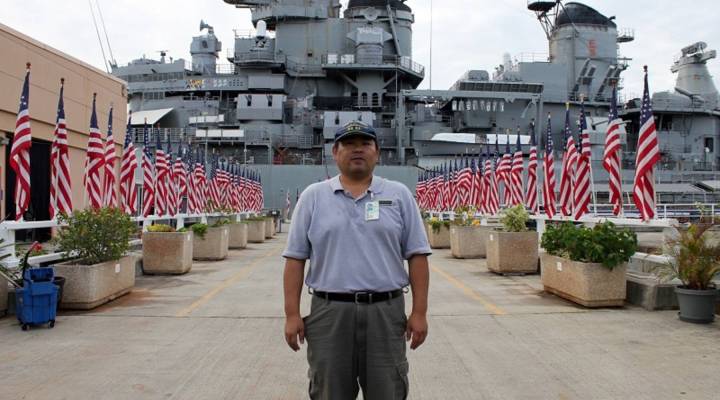

Japanese tourists seek information about their history at Pearl Harbor
Share now on:.
- https://www.marketplace.org/2016/12/07/japanese-tourists-seek-answers-about-their-own-history-pearl-harbor/ COPY THE LINK
HTML EMBED:

Get the Podcast

- Amazon Music
The bus tour leaves in the early hours of the morning, and by 6:30 a.m., this group of Japanese visitors are on their way to the most popular tourist attraction in the state: Pearl Harbor.
“Of course Pearl Harbor is important for history for both countries,” said Kozo Fukuyama, a Japanese tour guide. “That’s why they come.”

Kozo Fukuyama is one of four Japanese-language Pearl Harbor tour guides with Island Makana Tours, a tour operator that caters to Japanese tourists in Hawai‘i. He leads a group of Japanese tourists one morning through the World War II Valor in the Pacific National Monument.
Fukuyama is with Island Makana Tours, a tour operator that caters to Japanese visitors in Hawaii. Every morning, these tours bring about two dozen guests to the World War II Valor in the Pacific National Monument. Although entrance to the park is free, this guided tour costs $150 a person. It includes a trip to the USS Battleship Missouri Memorial, the Pacific Aviation Museum and finally a boat ride out to the USS Arizona Memorial.
This year, Dec. 7 marks the 75th anniversary of Japan’s attack on Pearl Harbor. Later in December, Japan’s Prime Minister Shinzo Abe will travel to Hawaii, becoming the first Japanese leader since the end of World War II to visit the site. But these sites have long attracted Japanese tourists.
Fukuyama said some Japanese tourists, especially from an older generation, have an emotional response. Others barely know the history.
“Some young guys, they don’t know,” he said. “But the old peoples, some have pain. It’s very different, generation gaps.”
Nanako Masaki, who is in her 60s, knew she wanted to see the memorial.
“Being Japanese, Pearl Harbor was the first event in World War II,” said Masaki. “So I wanted to visit.”
The National Park Service doesn’t keep any official records on how many of Pearl Harbor’s 1.5 million annual visitors are from Japan. But Japanese language headset rentals and brochures are heavily used.
What brought Hideo Hiraguri here was the opportunity to see history. The Tokyo resident is visiting Hawaii for the first time and mostly learned about the attack from American movies. But the experience became more real for him after taking a boat ride to see the Arizona Memorial.
“It breaks my heart to know that there was a war and the ship sank,” said Hiraguri. “People were buried in the ship and they suffered.”
After a long day, Hideo and the rest of the group head back to the tour bus. The guide Fukuyama cues up a CD as it heads to Waikīkī. It’s the historic speech from Japanese Emperor Hirohito announcing the surrender of Japan.
Stories You Might Like

Japan’s Shinzo Abe looks to strengthen ties with U.S. through Pearl Harbor visit

Shohei Ohtani’s star power lures Japanese tourists to Los Angeles

Communities are building permanent memorials for victims of mass violence

Why it’s difficult to "always remember"

Aunt Jemima rebrands as Pearl Milling Company

Remembering art supply store Pearl Paint, a mecca for New York artists
There’s a lot happening in the world. Through it all, Marketplace is here for you.
You rely on Marketplace to break down the world’s events and tell you how it affects you in a fact-based, approachable way. We rely on your financial support to keep making that possible.
Your donation today powers the independent journalism that you rely on . For just $5/month, you can help sustain Marketplace so we can keep reporting on the things that matter to you.
Also Included in
Latest episodes from our shows.

When daycares close in rural areas, sometimes an entire town is left without options

High cost of living a key focus as Kamala Harris takes the stage at the DNC

U.S. startups should be wary of knowledge theft disguised as investment

Delegates spend thousands to go to the Democratic National Convention

Experience The History
Welcoming more than a million visitors each year, Pearl Harbor is Oahu’s must-see attraction. Immerse yourself in history and learn about “the day that will live in infamy” as you enjoy one of the country’s historical treasures.
(888) 450-1640
Aloha Pearl Harbor Tour
Around 8am on December 7th, 1941, Japanese Zero warplanes attacked Pearl Harbor and the Island of Oahu, Hawaii. The devastating surprise attack killed 2,403 and wounded over 1,000 others, marking the United States entrance into World War II. For the USA, World War II both began and ended at the Pearl Harbor Naval base on Oahu. As Hawaii’s #1 visitor attraction, Pearl Harbor serves as a piece of living history to be appreciated by people from all over the world.
Guests will see the official video documentary only found at Pearl Harbor and experience a boat ride (taken on Navy Shuttles) out to see the Arizona Memorial and other areas in Pearl Harbor. Witness the black tears floating over the final resting place of the 1,177 souls aboard the sunken USS Arizona. After Pearl Harbor, guests will venture to the Punchbowl National Cemetery & visit the statue of King Kamehameha the Great before returning to Waikiki. All guests will enjoy Premium Transportation, and the best Tour Guides in Hawaii!
Currently, The Tickets for the USS Arizona Memorial program are Guaranteed.
Safe & Secure
Feel confident in the security of your purchase. We use Stripe for all of our credit card processing. Providing you with next-generation security and ease of mind.

- REQUEST A CALL
- CHECK AVAILABILITY & SIGNUP
- CUSTOMER FEEDBACK
Tour Inclusions
USE ARROWS TO VIEW ALL DETAILS

TWO-WAY TRANS FROM WAIKIKI
Transportation quality can be hit or miss in Hawaii. We don’t take any chances by providing round-trip transfers from Waikiki to Pearl Harbor in beautiful limo style buses. You’ll not only appreciate the air conditioning, but also the hospitable tour guides.

VISITORS CENTER & MUSEUMS
The Visitors Center will be your hub while touring Pearl Harbor. It is the first building that you check-in to, and the location where shuttles to the other attractions depart and return from. The Visitor Center is also home to 2 different museums named “Road To War” & “Attack” which come included with your admission to Pearl Harbor.

EXCLUSIVE DOCUMENTARY
No event in United States history has been the subject of more documentaries over the past 75 years than the Japanese attack on Pearl Harbor on December 7, 1941. That’s what makes this one so special… This is an exclusive documentary that is not played on TV or Youtube etc. It can only be viewed at Pearl Harbor and contains exclusive footage of the day that will live in infamy.

USS ARIZONA MEMORIAL
Built over the sunken wreckage of the USS Arizona you’ll find the iconic Arizona Memorial. The Battleship, made famous on that infamous day, is the watery grave of the 1,177 Navy Sailors that were killed on December 7, 1941 when Pearl Harbor was bombed by the Japanese. The sunken battleship was declared a National Historic Landmark in 1989, and is now a must-see destination for anyone taking a trip to Hawaii.

WALL OF NAMES
The Wall of Names is one of the more sacred aspects of the visit to the USS Arizona Memorial. Here we are able to honor the fallen soldiers who lost their lives to the perils of war during the attack. A moment of silence is observed in during this time to pay respect for those who gave everything for their freedom.

TEARS OF THE ARIZONA
The USS Arizona was bombed and completely sank during the air strike on Pearl Harbor. Because the ship was in the harbor, it’s reserves were full and the ship sunk will a full reservoir of fuel and oil. The traces of oil that surface daily can be seen best when the Harbor is calm, and is one of the more sobering aspects of the experience.

KING KAMEHAMEHA STATUE
Sculpted by Thomas Gould in Florence, this 18-foot bronze statue of Kamehameha is one of Oahu’s most photographed landmarks. On the Friday closest to June 11 (Kamehameha Day), this statue is ceremoniously draped with wreaths of flower lei to celebrate Hawaii’s greatest king. A great warrior, diplomat and leader, King Kamehameha I united the Hawaiian Islands into one royal kingdom in 1810 after years of conflict.

PUNCHBOWL NATIONAL CEMETERY
The National Memorial Cemetery of the Pacific (Punchbowl Cemetery) is located at Punchbowl Crater in Honolulu. It serves as a memorial to honor those men and women who served in the United States Armed Forces, and is visited by millions of people per year. It is like the Arlington National Cemetery of the Pacific and is one of the favorite stops of the guests on tour.
What People Are Saying
USE ARROWS TO VIEW ALL REVIEWS

Extremely Meaningful
We did this on our first morning and it was an excellent experience! Our guide Miah was so nice and informative! The tour at Pearl Harbor was extremely meaningful and a total must see. What made it though, was all of the history and stories Miah told. I recommend this tour with all of my fingers and toes! I can’t imagine anything better! Thank you Cousin Maih! mahalo!

Our Tour Guide, Cousin Maia, Was Fantastic!
My sister and I booked this tour on our recent trip to Oahu. Our tour guide, Cousin Maia, was fantastic! His knowledge of Hawaii history, plus the extra stories he told on the trip made this way more than a tour of Pearl Harbor. You can’t go wrong with this deal — and if you’re lucky enough to get Maia, it’s worth twice the price!

Great Tour!
John Junior did an awesome job with our group. He was funny, informative, timely, and entertaining. Our group was ahead of schedule, so he dropped us by a local ice cream shop that was wonderful! He gave us lots of info on Hawaiian and WWII history. He played the ukelele and sang us a song, and is very talented. The donuts and coffee were great too. For us being on a tight time schedule, this was the perfect way for us to get in Pearl Harbor and Honolulu and at a great price. Not having to drive or navigate traffic alone made it worth the price. Maholo for a great morning!

Aloha Pearl Harbor
What a wonderful excursion once again from Aloha Tours! Cousin Nate was our tour guide, historian, proud native Hawaiian and American who filled our trip with stories we will never forget! Visiting the Pearl Harbor Memorial is a once in a lifetime experience in itself. Cousin Nate’s passion and love for his Hawaiian culture and history was a welcoming addition to the day. (Oh.. the donuts were delicious, too!) Thank you!

Angelique R.
Happy I Learned About Pearl Harbor!
Cousin Maya (Maia) was great he entertained and included everyone on the way there while getting us there safely. Be ready to participate. Maya great at spontaneous humor and the boat tour guide was also incredibly.professional and sentimental. I did the Hiroshima Memorial museum about a year ago the day after the anniversary of bombing. Very happy I learned about Pearl Harbor I knew so little even though my grandpa was on a merchant ship near Japan during WWII. You will never have a pity party after your visit to Pearl Harbor. Thanks cousin Maria! and everyone! Angelique

We loved the entire day.
Cousin Maia was a great host! We loved the entire day. We ran a little behind on the way to Pearl harbor due to construction traffic & our tickets were actually given away to a different group but..no worries! Cousin Maia had it all sorted out in a few minutes! Highly recommend this tour if you’d like to learn some of the history behind the island. Cousin Maia was very knowledgeable and professional & kept a laid back aloha vibe the entire day. We will be doing the circle island tour next time we visit for sure. Mahalo!

Information that you didn’t learn in school.
Cousin Miah was fantastic! He is light hearted and keeps the mood relaxed. He made a tired early morning group get into a good spirit, and tried to imbue the “Aloha Spirit” throughout the tour. He’s a veteran, and when he’s giving information about Pearl Harbor, makes sure that you remember it’s also a memorial and not simply a tourist attraction. You get a good overall sense of the island and it’s history, and he offers eye opening information that you didn’t learn in school. Also, NONE of the other tours were offering coffee or donuts when you get off the bus!
Making a Reservation
Toll Free: (888) 450-1640
- REQUEST A CALL BACK
- CHECK AVAILABILITY

Our awesome team of vacation coordinators is very hands on and would love to consult with you about your Circle Island Adventure. Please give us a call, we are standing by to assist you.
We Will Call You Back

Book Online
Booking online is easy and secure.
Use our booking calendar to find the specific date and time for your Circle Island Adventure.

Chat With A Live Agent
Fast & Easy
For most questions, our live chat is available to answer your needs. Whether you want to know what time a pick-up is or if a tour is full on a particular day, our team is ready to help!

Diamond Head Luau

Oahu Circle Island Adventure

Road To Hana Adventure
Oahu Circle Island – No Snorkel

Ka Moana Luau

Toa Luau Experience

Germaine’s Luau

Paradise Cove Luau
© Copyright 2016 – 2019 | Aloha Pearl Harbor Tour | All Rights Reserved. | Privacy Policy
Skip to Main Content of WWII
Pearl harbor attack, december 7, 1941.
The National WWII Museum commemorates the Day That Will Live in Infamy through articles, oral histories, artifacts, and more.
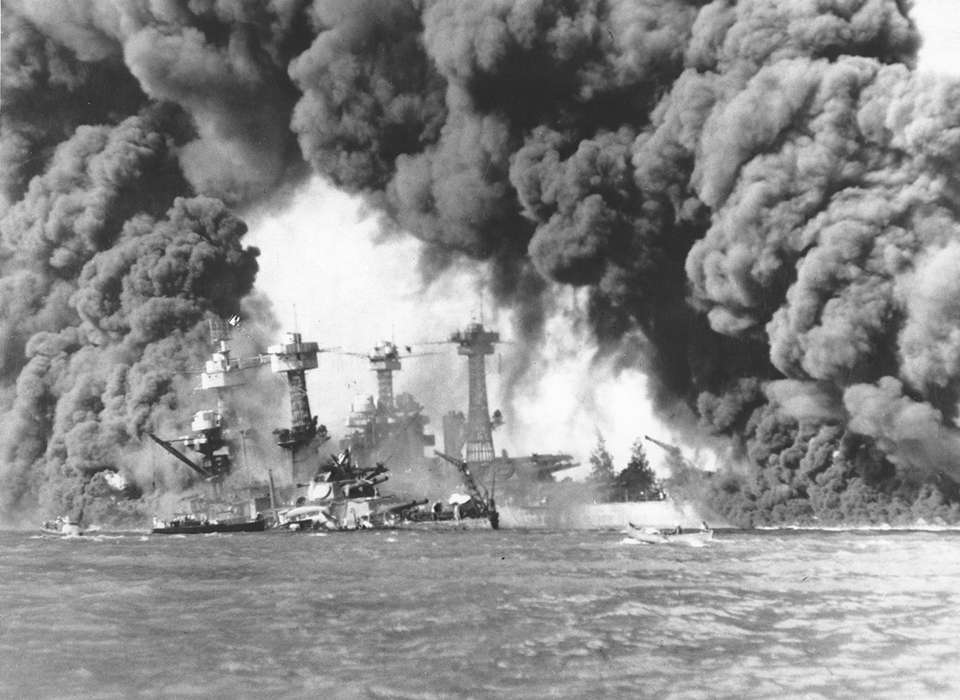
Remembering Pearl Harbor
No moment in the history of the United States casts a longer shadow than Pearl Harbor. “Remembering” it has become a national imperative, a patriotic duty for the American people, and reminding us of that duty has become a ritual of media and political discourse—repeated so often and in so many ways that it’s become part of the routine of our communal life.
- Rob Citino, PhD
Quick Links
- Overview of Attack
- Special Exhibit
- Path to Pearl Harbor EFT
Featured Articles
Featured videos.
By Rob Citino, PhD Samuel Zemurray Stone Senior Historian
The Long Fuse: Japan, the United States, and the Hawaiian Islands
The tangled relationship between the United States and Japan began with the forced opening of Japan in the nineteenth century, courtesy of Commodore Matthew Perry and this “black ships” of his squadron. Japan’s sudden exposure to the outside world, after centuries of isolation, generated a helt-er-skelter period of transformation, a revolutionary era in which Japan threw overboard many of its oldest traditions and built itself into a technologically advanced industrial state, with modern systems of administration and government—and a powerful military.
Japan’s rise to Great Power status was rapid, with victorious wars over China (1894-95) and Russia (1904-5), as well as successful, if subsidiary role on the side of the Allies in World War I (1914-1918). Again and again, Japan struck quickly to win wars over larger and theoretically more powerful opponents. The very success Japan enjoyed, however, placed the island empire squarely in the sights of the other Great Powers, and generated an increasingly tense strategic rivalry with the United States for domination of the Pacific. That was the “long fuse” of the Great Pacific War (1941-45), the long-term background to Japan’s attack on Pearl Harbor, December 7, 1941.
Sitting in the Japanese crosshairs that fateful Sunday morning was not only the US Pacific Fleet, but the Hawaiian Islands. An independent kingdom with a long and proud history of its own, then “discovered” by the West and dubbed the Sandwich Islands, Hawaii had only become a US possession in the 1890s, when a rebellion by the Anglo population of the islands rose up in revolt against the rule of Queen Liliuokalani. Declaring a Republic of Hawaii, the rebels then requested annexation by the United States, which took place in 1898. Since then, a new society had grown up of native islanders, Americans, and Japanese immigrants. The economy was robust, based on the islands’ numerous sugar cane plantations. Hawaii also saw an increasingly strong US naval presence. A crucial moment came in 1940. As tensions built between the United States and Japan, President Franklin D. Roosevelt ordered the US Pacific Fleet to transfer from its homeport in San Diego, CA to Pearl Harbor, HI.
It was a fateful decision for all parties concerned: the United States, Japan, and Hawaii itself.
The Short Fuse 1940-1941: The Fate of the Pacific Fleet at Pearl Harbor
From mid-1940, when FDR moved the US Pacific Fleet from San Diego to Pearl Harbor, long-simmering tensions between the United States and Japan reached a new state of intensity. Japan had been embroiled in a brutal war of conquest in China since 1937. It had overrun much of north China, as well as most of the port cities along China’s long coastline. The Japanese army was badly overstretched, however. It could neither protect its supply lines to the rear, nor effectively control the territories it occupied. Its response was terror against Chinese civilians, hoping to cow them into submission. The policy of the “three alls” was the order of the day: “kill all, burn all, loot all.” Cities who resisted, like Nanjing in 1937, suffered the consequences, with Japanese troops slaughtering hundreds of thousands of innocent civilians.
Still, China fought on under the leadership of Chiang Kai-shek and his Nationalist Army, along with their allies, the Communist forces of Mao Tse-tung. Determined to help China and to halt Japanese aggression on the Asian mainland, FDR waged economic warfare against Japan. He hoped that embargoes on arms (1937), scrap iron (1938), and eventually oil (1941) would wound the Japanese economy sufficiently to halt Japan’s war in China. His own advisors were unsure how to proceed. Should the United States follow a policy of strength, warning the Japanese against the consequences of continued aggression? Or should there be a more conciliatory approach of negotiations leading to a long-term understanding?
Japan, for its part, was growing impatient. Stalemated by Chinese resistance, with over 1 million Japanese troops trapped in the quicksand of a war they could not win, Japan needed to find a solution to its strategic crisis. As Adolf Hitler’s armies rampaged across Europe, overrunning Germany’s neighbors in 1939-40 and threatening to invade the British Isles, the European colonial empires in Asia lay nearly undefended, ripe for the picking: the Malay Peninsula, the Dutch East Indies, Indochina. Rich sources of raw materials lay in all of them, rubber, tin, and especially oil, the precious lifeblood of any modern economy. Perhaps the time had come to reach out, pluck these “balls of rice” off the shelf, and final secure the resources necessary to end the war in China. At the same time, Japan’s leaders knew that such a policy would lead to war with the United States. As Japanese negotiators came to Washington for talks with US Secretary of State Cordell Hull in late 1941, military planners back in Tokyo had already decided to roll the iron dice. They needed to launch a great strike, one that would both seize the western colonies and ensure that the US could not and would not intervene.
As they surveyed a map of the Pacific, their gaze came to rest on one tiny spot in the great ocean.
Pearl Harbor.
The Great Pacific War: Then and Now
Pearl Harbor was a great gamble for Japan, and especially for the Imperial Japanese Navy. It was also a piece of skilled military planning, the work of Admiral Isoruku Yamamoto. Japan dispatched all six of his precious “fleet carriers” across 3,000 miles of open ocean in total secrecy, with the fleet arriving a few hundred miles north of the Hawaiian islands. The carriers launched their aircraft early on a Sunday morning. US forces were completely unprepared, and in less than ninety minutes, Japanese planes destroyed or damaged 19 US warships and 300 aircraft, and killed over 2,400 US servicemen. Almost half of the dead were crewmen from the battleship USS Arizona , which sank within minutes after a bomb struck its forward magazine, igniting more than a million pounds of ammunition. The ship’s remains still lie in the waters of Pearl Harbor, a constant memorial to that terrible morning.
With the US Navy temporarily out of the way, a massive Japanese offensive overran the European and colonial empires in Asia: Hong Kong, Malaya, the Dutch East EI; New Guinea. US possessions, too, came under attack: the Philippines, the major US base in Asia; Guam; and Wake Island. The Japanese assault seemed irresistible, and at two places there were mass surrenders. At Singapore on the tip of Malaya, 80,000 British, Indian, and Australian troops went into captivity in February 1942. On the Philippines, attacking Japanese forces outmaneuvered a combined US/Filipino army under General Douglas Macarthur. The defenders retreated into the Bataan Peninsula and finally onto tiny Corregidor Island. Macarthur evacuated the islands (vowing, however, “I shall return”), but his entire force of 75,000 men surrendered in April 1942, the worst military defeat in US history. Their Japanese captors now subjected them to a brutal 65-mile forced march to POW camps in the Philippines. Hence, the infamous Bataan Death March. In the course of just five days, at least 5,000 died, and perhaps many more, a grisly sign of what was to come in what the Japanese called the Great Pacific War.
Victory, defeat, shame, “infamy”: even today, the memory of these events is contradictory and contested. Different societies tend to “remember” events in their history differently, and that is especially true of traumatic moments. Japan and the United States have been friends and allies for decades, a welcome change from the 1930s and 40s. Nevertheless, the lessons, legacies, and memory of the Japanese attack on Pearl Harbor will continue to influence contemporary politics, diplomacy, and strategy into the future.
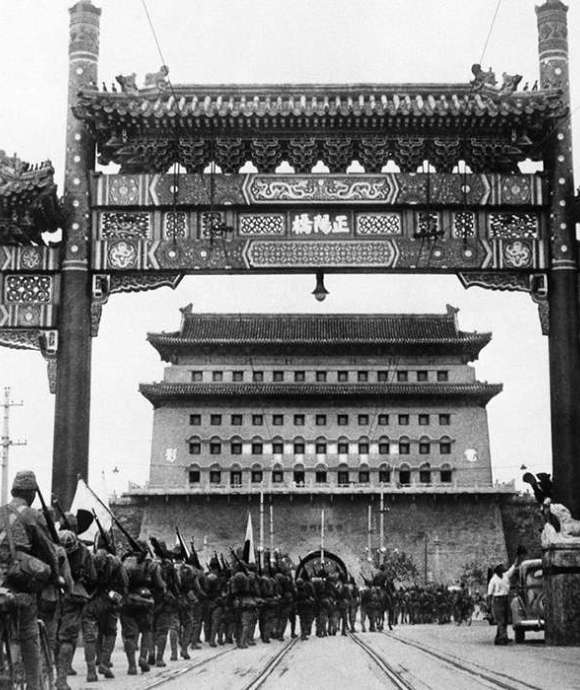
The Road to Pearl Harbor: The Long Fuse
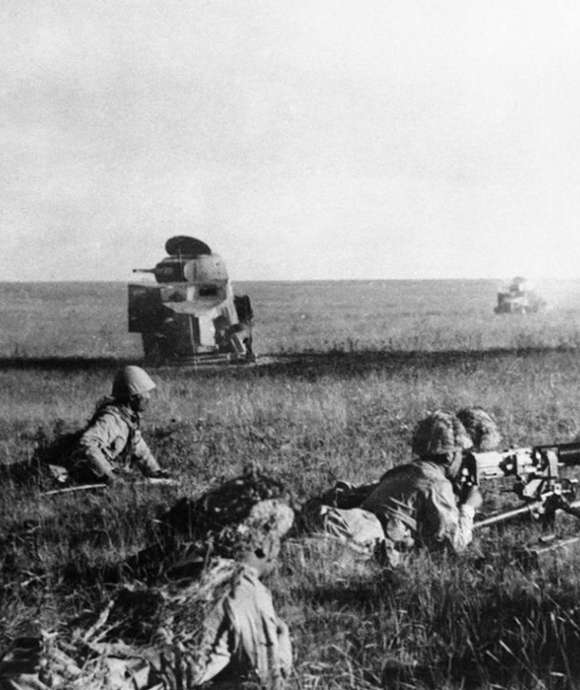
The Road to Pearl Harbor: The Short Fuse
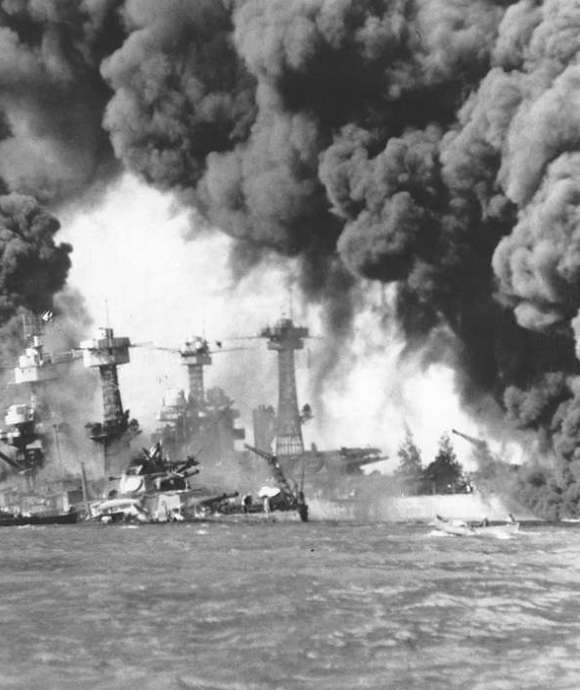
Remember Pearl Harbor!
Features from the collection.
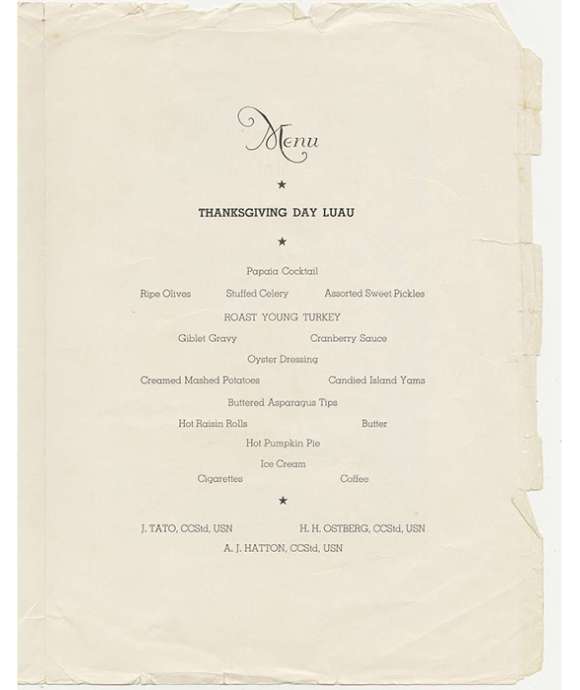
Tropically Delicious: Holidays on Oahu
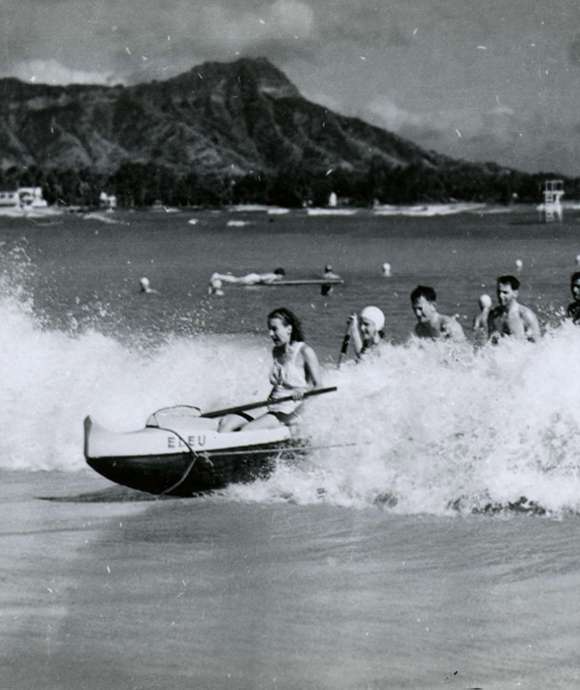
Routine in Paradise: The US Navy in Pearl Harbor
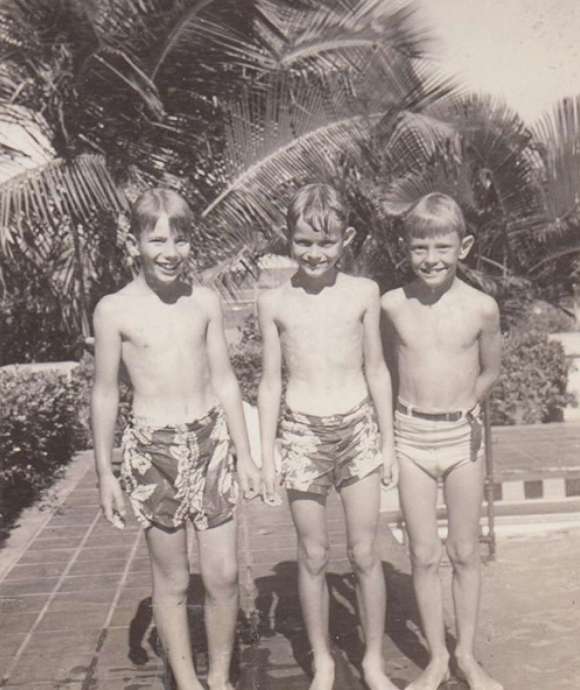
Sibling Witnesses to the Attack on Pearl Harbor
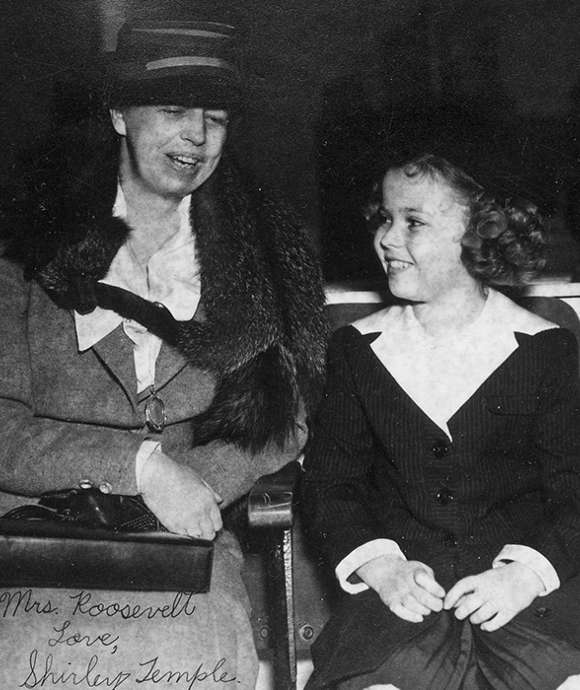
Shirley Temple in Hawaii
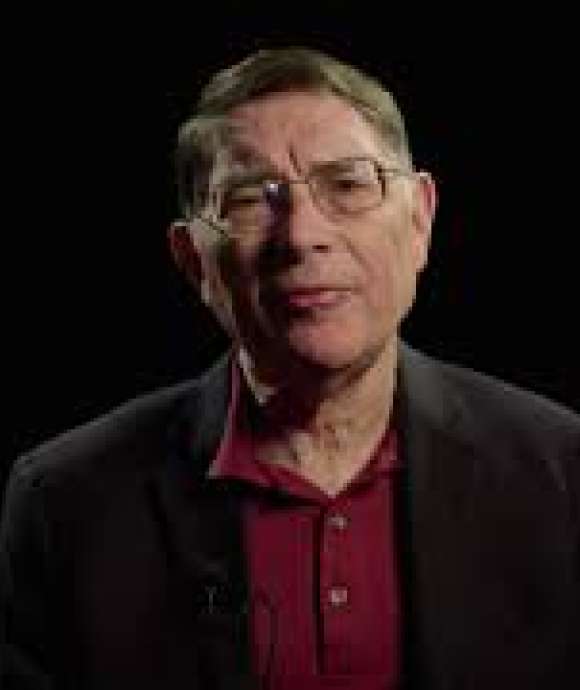
Road to Pearl Harbor: Asia Aflame 1937-1941
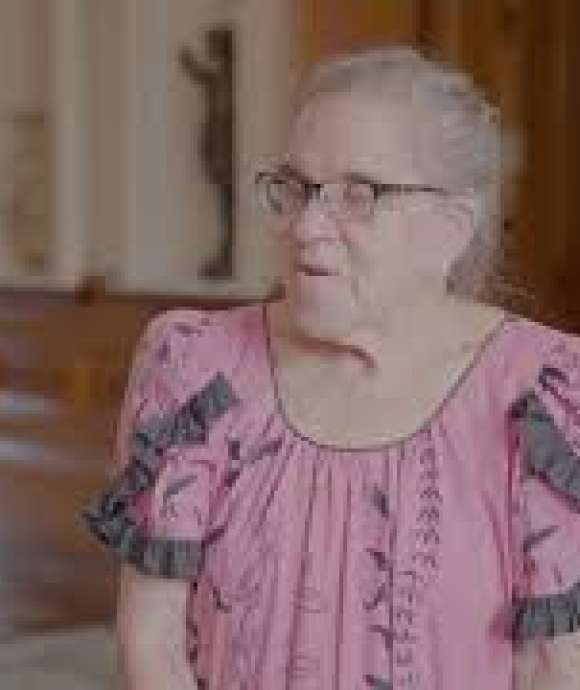
Hawaiian Monarchy at Iolani Palace

First-Generation Japanese American (Issei) Experience in Hawaii
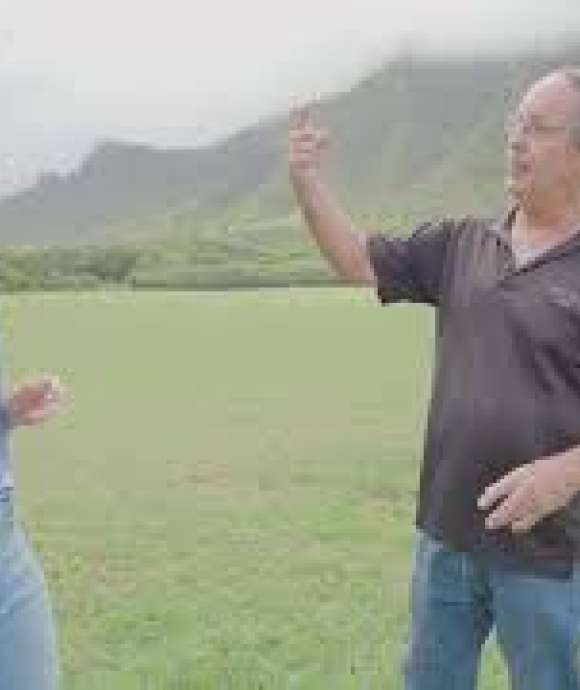
Kualoa Ranch and the Attack on Pearl Harbor

Island of O'ahu after the Pearl Harbor Attack
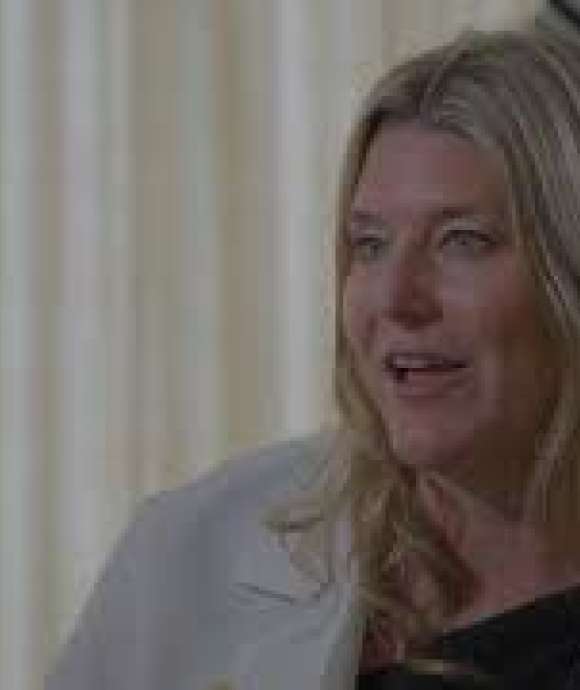
USS Oklahoma Identification of Remains
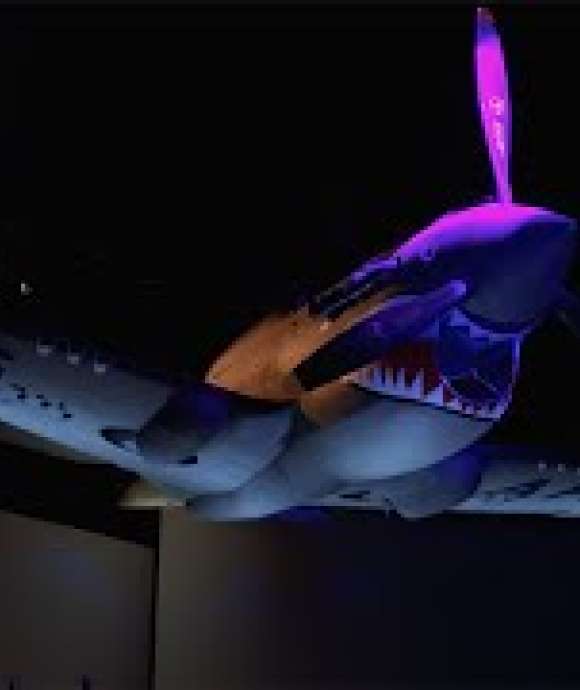
Curtiss P-40 at The National WWII Museum
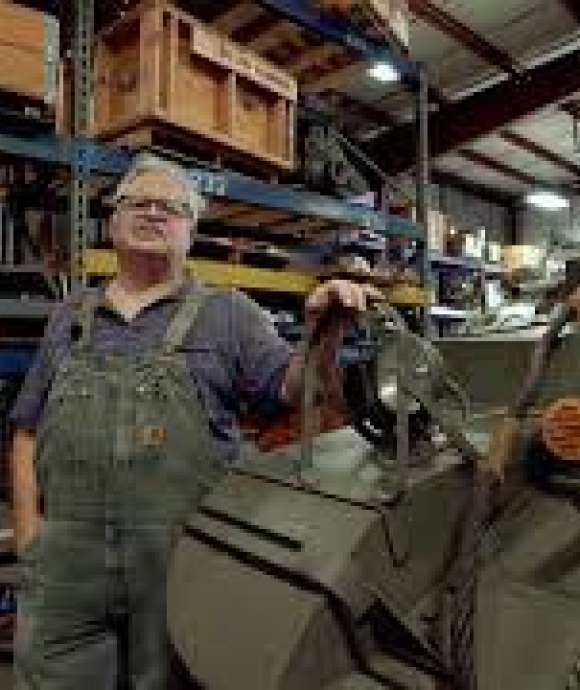
M3A1 Stuart Tank at The National WWII Museum
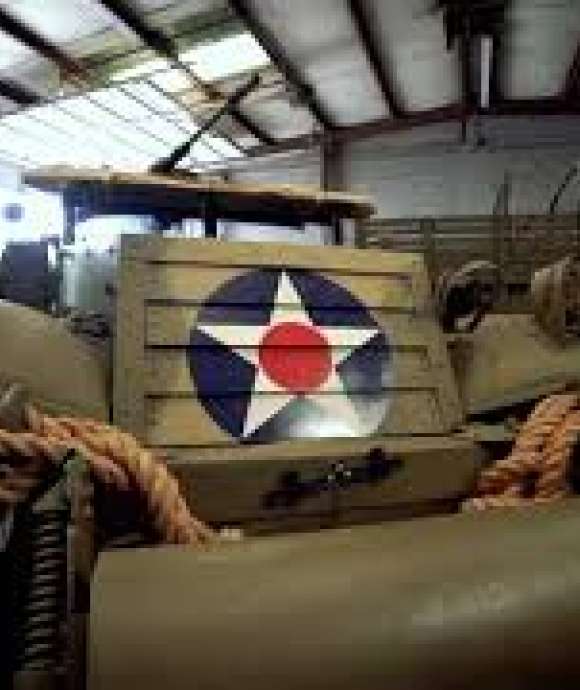
M3A1 Scout Car at The National WWII Museum

Related Content
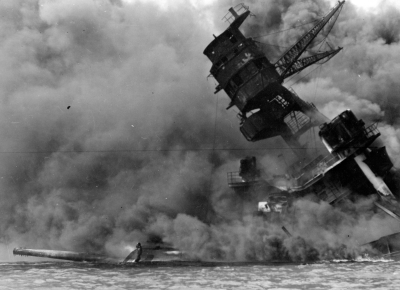
The Fallen Crew of the USS Arizona and Operation 85
The Operation 85 project aims to identify unknown servicemen who perished aboard the USS Arizona during the attack on Pearl Harbor.
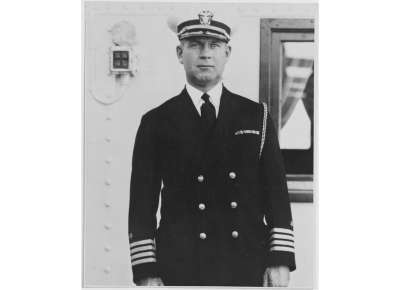
Valor at Pearl Harbor: Rear Admiral Isaac C. Kidd’s Medal of Honor
Bravery—even unto death—was evident everywhere as Imperial Japan’s air and sea forces struck the US naval base at Pearl Harbor on December 7, 1941.
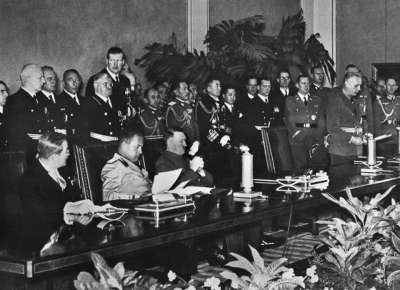
A Shared Enmity: Germany, Japan, and the Creation of the Tripartite Pact
Shared enmity toward Franklin D. Roosevelt’s United States of America is what brought Nazi Germany and Imperial Japan together again in the early fall of 1940 to certify a new agreement.
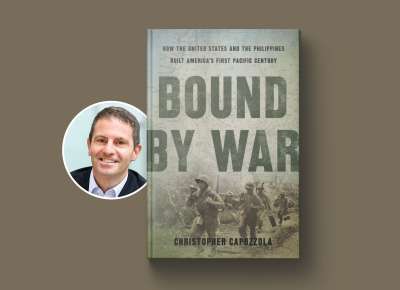
Meet the Author "Bound By War: How the United States and the Philippines Built America's First Pacific Century"
Join us for the concluding event of our 80th Anniversary of Pearl Harbor programming, a discussion that covers a sweeping history of America’s long and fateful military relationship with the Philippines amid a century of Pacific warfare.
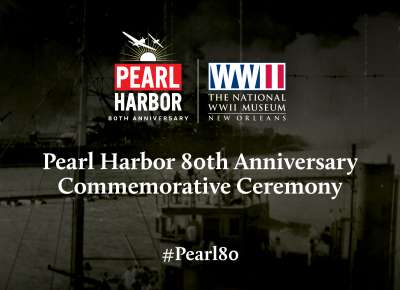
Pearl Harbor 80th Anniversary Commemorative Ceremony
Early on December 7, 1941, citizens and servicemembers alike in Pearl Harbor, Hawaii, faced terror as Japanese planes rained fire on the island in a stunning surprise attack. The assault quickly plunged the United States into a world-changing war. Each year, The National WWII Museum commemorates those who lost their lives on that fateful December day.
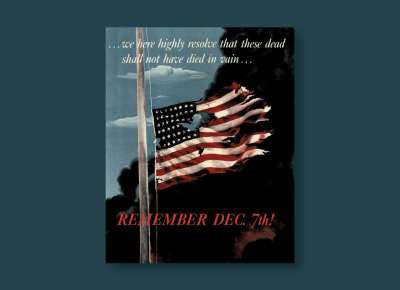
Pearl Harbor: The Aftermath
A panel discussion of historians from members of The Institute for the Study of War and Democracy in The National WWII Museum’s US Freedom Pavilion: The Boeing Center
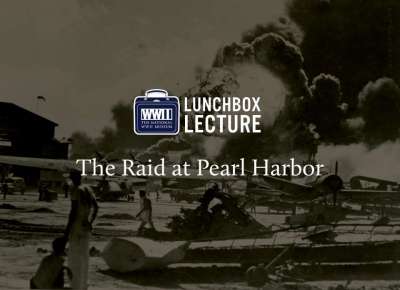
Lunchbox Lecture: The Raid at Pearl Harbor
While US strategy in 1941 was largely focused on the war in Europe, the bold carrier raid seized the initiative against increasing US pressure over Japan’s ongoing war in China. Captain Rick Jacobs will discuss the events of that terrible, heroic day—from the opening of Japan by Commodore Mathew Perry in the 1850’s through the devastation at Pearl Harbor on December 7.
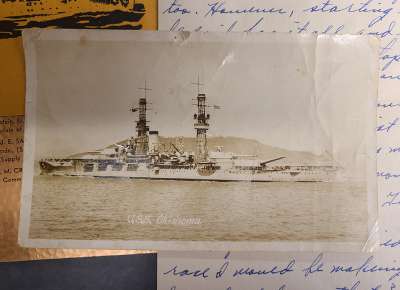
Recovered and Identified on the USS Oklahoma
AMM2c Durell Wade made the ultimate sacrifice manning his battlestation on USS Oklahoma during the attack on Pearl Harbor.
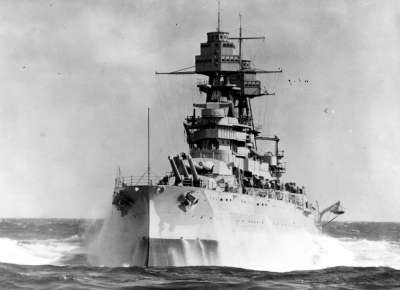
The USS Arizona ’s Last Salvo
In a strange case of life after death, the resurrected guns of the USS Arizona fired at the end of the war.
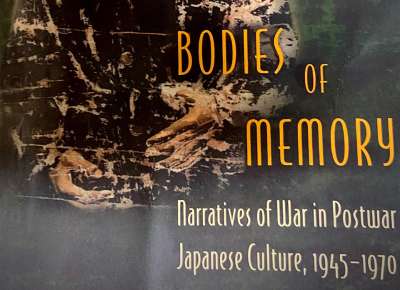
Review of Bodies of Memory: Narratives of War in Postwar Japanese Culture, 1945-1970
Yoshikuni Igarashi examines the impact of World War II and Japan’s defeat on postwar Japanese memory.
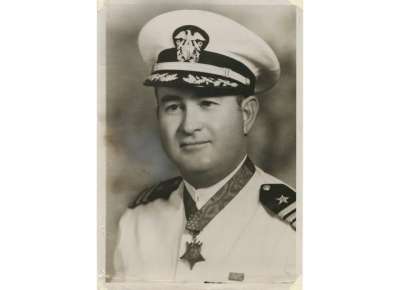
Lieutenant Commander Samuel G. Fuqua's Medal of Honor
As USS Arizona burned on December 7, 1941, Lt. Commander Fuqua displayed true courage under fire.
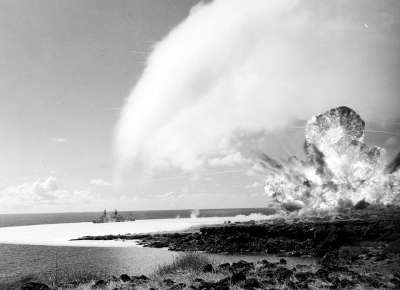
Kaho’olawe: The Pacific’s Battered Bullseye
Once a bombing range, one Hawaiian island is on the long road back.
- Share full article
Advertisement
Supported by
FOR MOST JAPANESE, PEARL HARBOR IS JUST A FOOTNOTE
By Susan Chira, Special To the New York Times
- Dec. 7, 1985
The Japanese tourists come in the mornings, by the busload.
They pass the photographs of burning ships and Japanese fighter planes. They wander outside to look at the placid blue harbor, empty save for the white memorial building that spans what remains of the battleship Arizona, sunk that day long ago.
In the memorial, they walk past the plaque listing the 1,177 names of the dead. Through the silence of one recent day came the sound of the water lapping the charred ruins.
Here, in this quiet and understated memorial, the Japanese come to see and confront - some for the first time - the extent of the destruction of Pearl Harbor on Dec. 7, 1941.
''Frightening,'' said Yoshitaka Ito, 24 years old, who visited the memorial recently with two friends. ''People aren't taught about this in school.''
A Remote Historical Event
Pearl Harbor, like other Japanese actions in World War II, does not seem to weigh heavily on the Japanese consciousness, according to many Japanese historians and others. Those who are old enough to remember, they say, avoid the subject. For those who are younger, the war is a remote event.
That there is not more public discussion of Japan's role in the war troubles some Japanese who see in their nation a sort of convenient collective amnesia, a striking contrast to Germany, which conducted a public soul-searching this spring. But hand-wringing is not Japan's style.
''In general, Japanese tend to forget the past, thinking that it can be washed away,'' said Kiyoko Takeda, a professor of Japanese intellectual and social history at International Christian University in Tokyo. ''But I always tell my students that recognizing what we have done in the past is a recognition of ourselves. By conducting a dialogue with our past, we are searching how to go forward.''
Professor Takeda is by no means in the mainstream. Pearl Harbor is an event that for most Americans evokes emotional images of betrayal, a day that changed the lives of a generation. It does not loom that large for many Japanese. They see it as a necessary military operation, or as another chapter in the long war that began in the 1930's with Japan's invasion of China.
'I Don't Feel Guilty'
''Japan has had a long military history of surprise attacks, and this one was very successful,'' said one middle-aged woman who was a schoolgirl during the war. ''After the war was over, I was glad that we lost, because who knew how far the military would have gone? But although I am not particularly patriotic, Pearl Harbor is not anything to bow my head and apologize for.''
''I don't feel guilty about Pearl Harbor,'' said Mieko Hiratani, a 25-year-old magazine editor. ''Wars are often full of treacheries like that, aren't they? I don't think many people of my generation think about the war anyway. It is only one piece of knowledge for the entrance examination.''
The presentation of the war in Japanese schools reinforces this matter-of-fact attitude. Textbooks offer a straightforward chronological narrative, devoid of judgment or comment. Neither textbooks nor teachers' guides encourage reflections about the lessons of the past, although they do stress the need for peace.
For Japanese, Pearl Harbor pales before the horror of Hiroshima. And although no one would deny that the atomic bomb wreaked unprecedented devastation, what concerns scholars like Professor Takeda is what they see as a failure to confront the symbolic importance of Pearl Harbor - Japan's role as an aggressor.
Focus on Suffering
This spotlight on the victim permeates most portrayals of the war years. Films about the war focus on Japanese suffering and enemy cruelty. The Japanese marked the 40th anniversary of the war's end this summer with official expressions of sympathy for the soldiers who died on the battlefields. Although some intellectuals raised questions of Japanese culpability for atrocities in Asia, there was little public discussion.
Most Japanese share a profound sense of fatalism, a resignation to events encouraged by popular interpretations of Buddhism and Confucianism that stress a fixed, often predetermined, course of events, Professor Takeda said.
Although the questions of individual guilt or self-examination are central preoccupations of the West, Japanese native religions like Shinto do not stress these ideas, Rokuro Hidaka, a professor of sociology at Seika University in Kyoto, said.
''In Shinto, the priest can purify you and any blemish can be removed,'' he said. ''Also there is a very popular saying, 'Let the past drift away with the water' that fits Japanese sentiments.''
Many Do Visit the Memorial
Nonetheless, many Japanese do brave embarrassment and possible hostility to visit Pearl Harbor. George Hogan, a tour guide at the memorial whose battleship left Pearl Harbor 46 hours before the attack, estimated that about one-third of the 1.4 million yearly visitors might be Japanese, although no official records are kept.
The Japanese who visit mirror their nation's ambivalence about the war.
For younger visitors, the memorial seems to spark new insights. The same woman who declined to condemn Pearl Harbor said that her 15-year-old niece was impressed by a short film shown at the memorial. The drama of the film contrasts with school textbooks, where Pearl Harbor is portrayed simply as a military action. In many cases, the school year ends before the class even reaches Pearl Harbor or the war.
Tomohiko Teramoto, 28, said he decided to visit Pearl Harbor because he had no experience of war. ''It's bad to forget,'' he said. ''Japanese should remember Pearl Harbor, and Americans should remember Hiroshima.''
Other visitors, particularly older ones, seemed self-conscious at Pearl Harbor. Masahiro Anzai, 51, found it difficult to meet the gaze of a questioner. ''It's painful,'' he said quietly, and moved away.
Around the World With The Times
Our reporters across the globe take you into the field..
Women’s Safety in India: The rape and murder of a trainee doctor at a hospital in Kolkata has raised uncomfortable truths about a country that wants to be a global leader.
The ‘Plant Messiah’ : Carlos Magdalena, whose botanical adventures have shades of Indiana Jones, was a driving force in saving the world’s smallest water lily and finding the largest one.
Old Bombs, Deep Lakes : Switzerland is offering $58,000 in prize money for ideas to remove munitions from the depths, in case they start polluting. The catch: The cure can’t be worse than the problem.
Mennonites in the Amazon: Seeking inexpensive land far from modern life, groups of Mennonites are carving out new colonies in Peru . There are fears they are adding to the deforestation of the jungle.
Horseless Carriages: Brussels’s last horse-drawn carriage operator says business has been good since making the switch to electric carriages , placing the Belgian capital in the vanguard of a global change.
- Search Please fill out this field.
- Newsletters
- United States
- Things To Do
Things to Know Before You Visit Pearl Harbor
TripSavvy / Taylor McIntyre
Before you visit Pearl Harbor, the USS Arizona Memorial and the other Pearl Harbor sites, it is helpful to learn a bit about the history of Pearl Harbor and the USS Arizona as well as of the other historic sites that you can visit in the area.
History of Pearl Harbor
With the articles listed below. we'll look at the early history of Pearl Harbor and learn how the area became home to the United States Pacific Fleet in the years just prior to World War II.
We'll then look at the Japanese attack on Pearl Harbor on December 7, 1941 and its aftermath in the Territory of Hawaii and examine why we must remember what happened on December 7, 1941.
Finally we'll offer numerous actual photos that were taken before, during and after the attack on Pearl Harbor. Many of these photos were classified for years.
- A Brief History of Pearl Harbor Prior to World War II
- Lest We Forget - December 7, 1941
- Pearl Harbor Historical Photos
USS Arizona Memorial
Hawaii's most popular tourist attraction has over 1,500,000 million tourists a year. We will help you plan your visit to this most solemn of places in Hawaii. Starting February 16, 2012, visitors have been able to order tickets in advance, and we'll explain this procedure.
We also offer photos of the USS Arizona Memorial Visitor Center, the USS Arizona Museum and USS Arizona Memorial in Pearl Harbor, Hawaii.
- Visiting Pearl Harbor and the USS Arizona Memorial
- New USS Arizona Memorial Advance Ticketing
- USS Arizona Memorial Photos
- USS Bowfin Submarine Museum & Park
The USS Bowfin Submarine Museum & Park at Pearl Harbor offers visitors the chance to tour the World War II submarine USS Bowfin and view and submarine-related artifacts on (the) grounds and in the Museum.
View a gallery of 36 photos taken at the USS Bowfin Submarine Museum & Park Photo Gallery at Pearl Harbor, Hawaii
- USS Bowfin Submarine Museum & Park Photo Gallery
Battleship Missouri Memorial
The USS Missouri or Mighty Mo, as she is often called, is anchored at Ford Island in Pearl Harbor within a ship's length of the USS Arizona Memorial, forming fitting bookends to the involvement of the Unites States in World War II.
View photos of the Battleship Missouri and Battleship Missouri Memorial at Ford Island, Pearl Harbor, Hawaii
- Visiting the USS Missouri or "Mighty Mo"
- Battleship Missouri Memorial Photo Gallery
Additional Information
Check out our selection of the top books, both new and old, written about the Japanese attack on Pearl Harbor on December 7, 1941.
From John Ford's controversial 1943 docudrama December 7th: The Pearl Harbor Story to several new productions honoring the 60th anniversary of the attack, there are many excellent documentary choices.
Numerous motion pictures and TV mini-series have been produced that are set before, during and after the Japanese attack on Pearl Harbor on December 7, 1941. These are our picks for the best films and TV mini-series about the events of the "Day that will live in infamy."
- Top Books About the Attack on Pearl Harbor on Dec. 7, 1941
- Top Documentaries about the Attack on Pearl Harbor
- Top Films and TV Mini-Series About Pearl Harbor
Related Articles
More related articles.

About Pearl Harbor

From the surprise attack on Pearl Harbor that started it all, to the surrender of the Japanese on the deck of the mighty Battleship Missouri, these four historic sites together tell the story of the War in the Pacific, commemorating the accomplishments of a previous generation. Located on the island of Oahu, "The Gathering Place," halfway between Japan and the mainland United States, Pearl Harbor will always be a welcoming place where survivors of the attack can reflect on the events that led to the war and had such a profound impact on the lives of an entire generation. To those who fought in the war, to those whose lives were affected by the war, their children, grandchildren, and each succeeding generation, Pearl Harbor is a place where people from far-flung corners of the world can come together in peace to honor the memory of the fallen and to celebrate the ultimate triumph of the human spirit.
Pearl Harbor Historic Sites
Pearl harbor historic sites is made up of the following organizations..

Official non-profit partner of the National Park Service. Providing guests with virtual reality experiences, multimedia tours and the museum store onsite.

Explore the world of underwater warfare and heroic submariners' stories.

Step aboard the USS Missouri, where Japan surrendered ending World War II.

Discover aviation history through vintage aircraft and captivating exhibits.
Please enter at least 3 characters
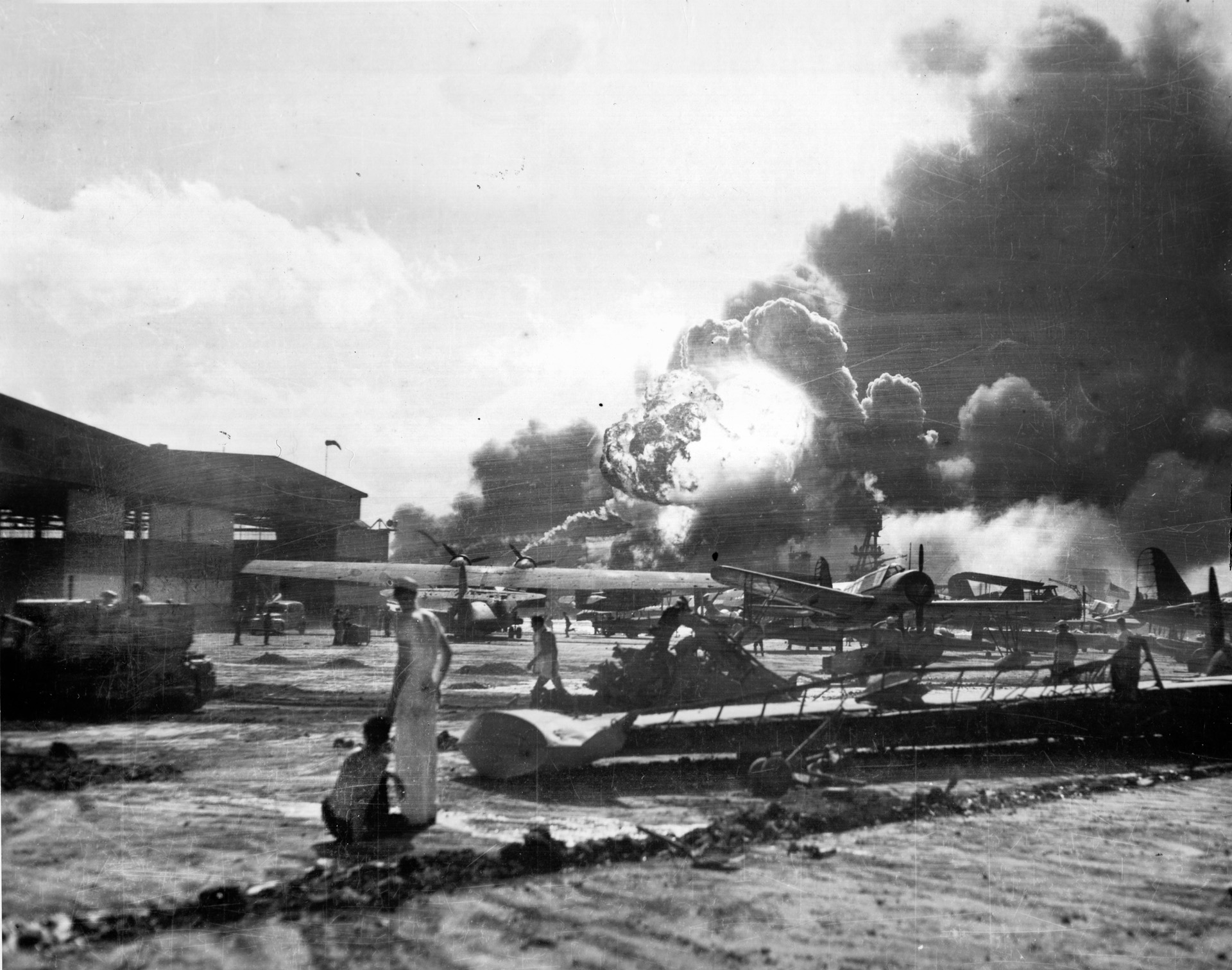
Takeo Yoshikawa and the Spies Behind the Pearl Harbor Attack
The surprise attack on Pearl Harbor on December 7, 1941, benefited from the firsthand observation of spies on Oahu.
This article appears in: March 2017
By Phil Zimmer
“You are probably the nearest to war that you’ll ever be without actually being in it,” said Commander Harold M. “Beauty” Martin as he addressed his men on the morning of December 6, 1941, at Kaneohe Naval Air Station on Mokapu Peninsula, located less than 15 miles east-northeast of Pearl Harbor. “Keep your eyes and ears open and be on the alert to every moment,” said the well-respected commander. One fellow who was keeping his eyes wide open that day was Japanese spy Takeo Yoshikawa. He closely observed the Pacific Fleet at anchor in Pearl Harbor on the south side of Oahu late in the afternoon from vantage points at Aiea Heights and the Pearl City Landing. Later the same day, he sent a coded report to Tokyo noting that the U.S. Army had ordered equipment for barrage defense balloons, but none was yet on scene, and he opined that torpedo nets probably were not in place to protect the battleships at anchor in Pearl Harbor. “I imagine that there is considerable opportunity left … for a surprise attack,” he added, as the clock continued ticking.
Meanwhile, Commander Martin’s somber, cautionary message earlier in the day was being widely debated by the American sailors, a number of whom belittled the racial and intellectual capabilities of the Japanese, especially their ability to handle fast-moving aircraft. Some even argued that any aggressive Japanese actions against the United States would be quashed within two weeks.
But within 24 hours those men and their American compatriots at Pearl Harbor would be in the fight of their lives against two waves of incoming Japanese bombers and fighters. Within 90 minutes of the first attack early on December 7, the Japanese had sunk four battleships and damaged another four of the large ships, three cruisers, and three destroyers and consigned nearly 200 American aircraft to the scrapyard. Worse yet, more than 2,400 Americans were killed and more than 1,175 wounded in the surprise attack. (A pair of amateur filmmakers captured the fateful events of December 7 with their 8mm movie camera. Read all about their recording of the Pearl Harbor Attack .)
The First to Face the Enemy: Raid on Kaneohe Naval Air Station
Those at the Kaneohe Naval Air Station were among the first to face the enemy onslaught that Sunday morning. The nimble Mitsubishi A6M Zeros came in at 7:48 am, strafing a small utility plane and fanning out over the station and firing promiscuously. The officer on duty called nearby Bellows Field requesting help, but his message was treated as a joke. Kaneohe contractor Sam Aweau called both Bellows and Hickam airfields, but his warnings also were met with disbelief.
Commander Martin, for his part, was gulping a cup of coffee in his quarters and preparing hot chocolate for his 13-year-old son when the youth reported seeing the Japanese planes maneuvering above. Once Martin spotted the Rising Sun emblem for himself, he quickly tossed his uniform on over his blue silk pajamas and dashed for the car. Screeching through the still-quiet residential neighborhood at upward of 50 miles per hour, Martin managed to park near his command post and run toward it amid a hail of bullets.
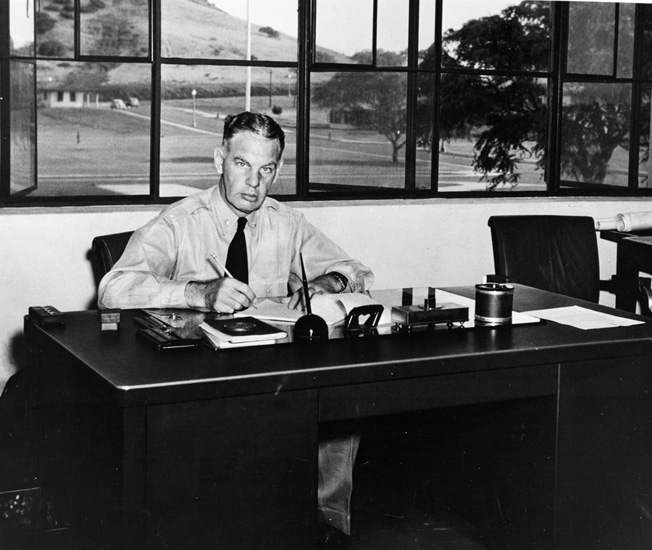
The first parked plane was already in flames when Martin arrived at Kaneohe, and soon the Japanese bombers joined the fray. He was proud of how his men responded, many of whom were newcomers to the service. “There was no panic,” he said. “Everyone went right to work battling back and doing his job.”
Unfortunately, Kaneohe had no antiaircraft guns. Sailors and marines fired their pistols and rifles at the low-flying aircraft without success. Once the first wave of attackers disappeared, the men dashed to the hangars and planes. The ordnance staffers began issuing rifles and machine guns and disbursing ammunition from locked storage areas.
Aviation Chief Ordnanceman John W. Finn positioned both a .30-caliber and a .50-caliber machine gun on the parking ramp for the Consolidated PBY Catalinas (PBY) and began dueling with the Japanese Zeros as they strafed Kaneohe. Finn moved back and forth between the two weapons, but he spent most of his time at the .50 caliber. As he fired, he was assisted by sailors who replenished his ammunition. Finn’s steady firing damaged several Zeros. No one knows for sure whether it was Finn or someone else, perhaps an ordnanceman named Sands, who fired the rounds that struck flight leader Lieutenant Fusata Iida’s aircraft.
The nine Zeros led by Iida were beginning to reassemble to head back to the carrier fleet when Iida motioned to his wingman that he had sustained damage to his fuel tanks and would not be able to make the return flight. He therefore decided to make a kamikaze run on Kaneohe’s armory. As he lined up and flew toward the armory, more ground fire struck his aircraft. The plane missed the armory and crashed into the ground.
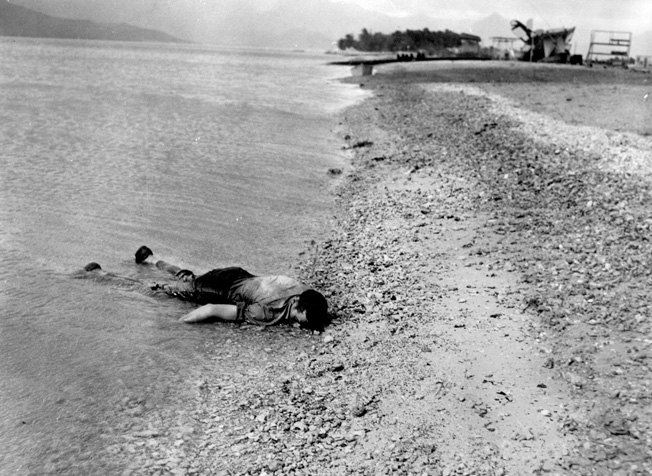
By the time the fighting was finished at Kaneohe, the Japanese had destroyed or damaged 33 PBYs, killed 19 servicemen, and caused major damage to the installation. Despite the great risk they took, the Japanese suffered few losses in the audacious attack against the home of the U.S. Pacific Fleet.
Takeo Yoshikawa: Japanese Spy at Pearl Harbor
Much of the credit goes to spies like Yoshikawa, a youngish looking naval reserve ensign who had only arrived in Hawaii nine months earlier. He was employed as a cover by the Japanese foreign ministry using an alias while actually working for the Imperial Japanese Navy. He had been providing continuous and rather thorough updates on U.S. Navy deployments, arrivals and departures from Pearl Harbor, centerpiece of U.S. naval operations in the Pacific. Takeo Yoshikawa was scrupulously careful, carrying no camera, maps, or documents with him and never jotting down notes on what he observed on his outings around Hawaii.
In many ways, Yoshikawa was the perfect man for the mission. He had a solid naval background, having graduated in 1933 from the Japanese Naval College as well as from torpedo, gunnery, and aviation programs in the Imperial Japanese Navy. He also had served as a code officer aboard a cruiser. He then had worked three years in Tokyo with the Imperial Japanese Navy’s British affairs section before expressing an interest in working abroad as an agent. That led to his assignment in Hawaii working for Japan’s foreign ministry as a cover.
Yoshikawa did not have diplomatic immunity, and he was not officially linked to the Imperial Japanese Navy when he arrived in Hawaii. Otherwise, he would have been known to the American counterintelligence officials nearly immediately. Only Nagao Kita, the new consul in Hawaii, and Vice Consul Okuda, who had done some prior spying in Hawaii, were aware of Yoshikawa’s true role in providing Japan with updates on the U.S. Navy .
Turning Against America: Yeoman First Class Harry T. Thompson
American security had tightened before Takeo Yoshikawa’s arrival, in part due to deteriorating relations between the two countries. The deteriorating relations were a result of Japan’s continued aggression in China and concerns about future potential moves against such Western interests as Hong Kong, Singapore, Malaysia, and the oil-rich Dutch East Indies.
Two Japanese spying incidents on the American mainland in the 1930s had put the United States on alert. One involved former Navy Yeoman First Class Harry T. Thompson who had been discharged from service for problems relating to alcohol, overspending, and “an appetite for attractive young men,” according to one source. His services were retained by the Japanese, and he used a chief yeoman’s dress uniform, purchased at a tailor shop near a base, to gain entry to American bases and ships, thanks to his uniform, lax security, and fast talking. He managed to obtain gunnery manuals and reports on the 8-inch guns carried by the USS Pensacola , the first of a new class of cruisers capable of 32 knots and costing Japan its previous technical advantages in the cruiser category.
Toward the end of 1934 Thompson was able to board a number of ships stateside where he obtained important quarterly schedules of employment for battleships and cruisers, as well as information on main batteries, torpedoes, and related intelligence. He boarded the USS Mississippi in December and managed to abscond with a 230-page U.S. Navy gunnery school publication from a confidential file. He reboarded the ship the next month and purloined reports on the main gun batteries and torpedoes.
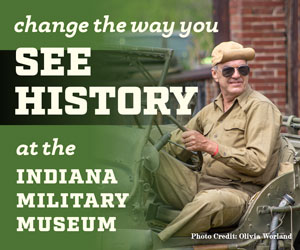
His former live-in boyfriend exposed Thompson’s homosexuality to Navy officials. Officials followed Thompson for a while, gathered additional evidence, and questioned him about his suspicious activities. At that point, Thompson confessed to working as a spy for the Japanese. When efforts by the Office of Naval Intelligence to have Thompson cooperate as a counterspy failed, he fled using funds supplied by the Japanese. He was apprehended and in mid-1936 was found guilty of espionage and sentenced to 15 years in federal prison.
John S. Farnsworth: Japanese Spy in the Naval Academy
Even more troublesome for U.S. officials and perhaps the American public was the case involving John S. Farnsworth, a 1915 graduate of the U.S. Naval Academy who had been selected for postgraduate work at Annapolis as well as postgraduate work in aeronautical engineering at the Massachusetts Institute of Technology. He had commanded Marine Observation Squadron Six, Aircraft Squadrons’ Scouting Fleet, before being relieved of command in 1927 and court-martialed. He was cited for drinking, gambling, and borrowing money from an enlisted man and refusing to pay it back as well as submitting falsified affidavits regarding the matter.
That resulted in a six-year downward spiral of drinking that led to his spying for the Japanese using an American-owned business as cover. His efforts to obtain classified aeronautical information caused suspicion among the tight-knit community of Naval Academy graduates who ran the U.S. Navy in the prewar years, especially because of his earlier court-martial. The head of naval intelligence got wind of Farnsworth’s snooping efforts and sent a cautionary bulletin out, effectively cutting him off from information that would prove useful to Japanese intelligence.
Farnsworth’s drinking increased substantially, and he became more desperate as his money problems escalated to the point where he appeared at his former business partner’s Washington office in an effort to get a place to sleep. In mid-1936 he contacted a Hearst-owned news service with a scheme to sell his tell-all story for $20,000 while he was also working his Japanese contacts to obtain another $50,000 for past and future services.
Both the Office of Naval Intelligence and the FBI were on his tail by then and he was picked up on July 13. He signed a confession admitting to some of his espionage and was found guilty and sentenced to four to 12 years in federal prison. His Japanese contacts were conveniently out of the country, having been transferred home.
Why Japan Shifted Toward Homegrown Spies
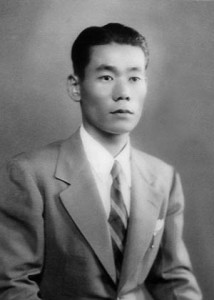
Despite increased American security measures, the Japanese continued efforts to obtain information both on the American defense industry and bases in the continental United States and Hawaii. It was probably because of the Japanese military’s experiences with Farnsworth and Thompson that they began to rely more heavily on homegrown spies like Yoshikawa.
Yoshikawa, for his part, was exceptionally security conscious. In sallying forth from the consulate, he dressed casually and conscientiously refrained, for the most part, while associating with Japanese Americans, with the exception of his two trusted drivers. They drove him around Oahu in their personal vehicles rather than in consulate cars to avoid unwanted attention.
The drivers, especially Richard M. Kotoshirodo, who had been born in Hawaii and who had received his early education in Japan, proved exceptionally reliable. Kotoshirodo was coached by Yoshikawa so he was able to correctly identify ships by their silhouettes and conduct surveillance by himself. This effectively added another set of skilled and trustworthy eyes to his spying effort.
Takeo Yoshikawa’s Views of the Harbor
One of their favorite haunts became the Pan American Clipper Landing at Pearl City near the moorings for the U.S. carriers. Yoshikawa also liked to visit Eto’s Soda Stand adjacent to the Pearl City Landing, a popular transit point for Ford Island and ships’ personnel going or returning from leave. He and his drivers arrived at the landing dressed as workmen and blended with the workers to pick up tidbits of useful information and observe work in the East Lock where the aircraft carriers were provisioned and fueled. They also counted the number of vegetable trucks at the landing to determine the projected upcoming timing of departures for maneuvers and the length of time planned at sea.
They also went to Aiea Heights, located just north of the harbor, for a panoramic view of the area. From this vantage point, they were able to monitor all of the U.S. naval and aircraft assets in Pearl Harbor.
Yoshikawa often took in the view from the Shuncho Ro Japanese Teahouse on the heights that conveniently had a second-floor telescope for viewing the harbor. And the teahouse was owned by a friendly Japanese woman born in the same region as the intrepid spy. Yoshikawa also befriended a waitress there who he often brought along to provide cover while on espionage trips around the island.
He even took a sightseeing flight in the early fall over Oahu, bringing a geisha along as cover. While the flight was not permitted over Pearl Harbor, he was able to tally the airplanes and hangars at Wheeler and Hickam airfields, and see the battleship anchorages. He was also able to calculate air turbulences and currents along the route, which was crucial information for the Japanese pilots who would participate in the attack.
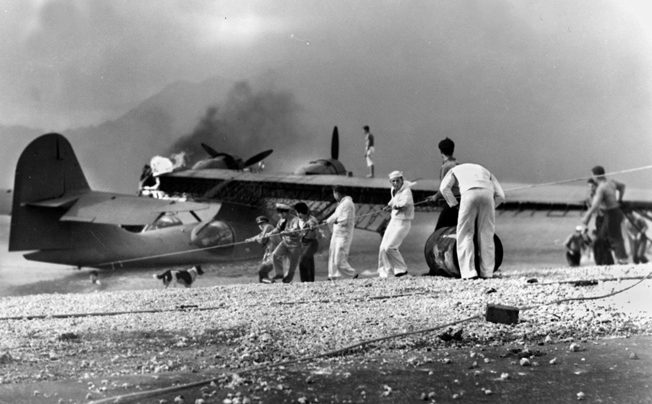
He found that Hickam Field, located just southeast of Ford Island, was difficult to observe from afar. He solved that by attending an August 6 open house to observe the Curtiss P-40 Warhawks on the ground and in the air. He took note of the hangars and the length and width of the multiple runways at Hickam Field.
Commander Martin’s air station at Kaneohe also drew Yoshikawa’s attention with its PBY reconnaissance aircraft and recent construction work there. He took a number of commercial tourist boat trips around Kaneohe and used a nearby elevated roadway for an additional view of the base.
Bernard Otto Kuehn: An Asset From Nazi Germany
Yoshikawa’s increasing and detailed reports proved exceptionally useful to his employers in Japan, who had also developed a stay-behind agent in Hawaii named Bernard Otto Kuehn. A German national who arrived in Hawaii in 1935, Kuehn was already employed as a spy for Nazi Germany . Although initially believed too nervous for the assignment, the Japanese did bring him on board in the late 1930s, providing him with a small radio transmitter with a range of 100 miles. He was to use it to relay messages on ship movements and construction to Japanese submarines which, in turn, would relay them to Tokyo.
It was vital that he remain well below the radar of American intelligence officials, but his spending habits, lack of employment, and careless pro-Nazi comments had brought him to the attention of the Office of Naval Intelligence. His wife’s early 1940 trip to Japan to obtain bank funds in $500 bills and his family’s flashing of crisp, new $100 bills raised eyebrows as did using cash to pay off a second mortgage on one of his houses.
The Kuehn family seemed oblivious to the need for stealth. His daughter Ruth worked as a modest hairdresser, but she paid her bills with large denomination currency. She also compared her success in collecting contributions to a local charity to her previous experience raising funds for Hitler in Germany. And the supposed need for additional family funds prompted the hapless spy to make at least three direct visits to the Japanese consulate to make a plea for funds.
Guilty of Espionage
Interestingly, Yoshikawa was activated on October 2 when he was sent directly to the Kuehn house to deliver $14,000 in new Federal Reserve bills along with a note that Kuehn was to test his radio transmitter. The German passed a note back to Yoshikawa saying he was unable to make the test.
Kuehn was hesitant to use the radio transmitter for fear that the U.S. military might discover and locate his signals. They then developed a system of rather strange visual signals that could use car headlights, lights flashed from the upper levels of his home, and symbols hung from Kuehn’s sailboat. All would necessitate a Japanese submarine sailing rather dangerously close to shore to see the signals.
The hapless German, who had been under surveillance for years, was arrested on December 7, tried in Honolulu, found guilty of espionage in February 1942, and sentenced to death by firing squad. The evidence obtained after his arrest was rather substantial and included monies given to him by Yoshikawa, extensive binders with newspaper clippings on the U.S. fleet, its bases, and aircraft, along with an array of photographs of navy ships. Kuehn’s sentence was later reduced to 50 years in prison once Yoshikawa was identified as the main spy behind the attack.
Yoshikawa, for his part, had sailed for Japan in a diplomatic exchange after the attack and well before his role was discovered during interrogations of his driver Kotoshirodo. Kuehn and his family were sent back to Germany after the war.
Japan’s successful intelligence-gathering operation on Oahu in the months leading up to the attack on Pearl Harbor prompted the United States to tighten its national security efforts in the decades that followed.
Back to the issue this appears in
Join The Conversation
2 thoughts on “ takeo yoshikawa and the spies behind the pearl harbor attack ”.
Excellent and insightful article
The spies did their job well except for the failure to account for the aircraft carriers. The carriers were in port at the time of last message to Tokyo but left shortly thereafter and their absence from the harbor went unreported. Result was stopping the Japanese advance at Coral Sea and turning them back at Midway a month later.
Leave a Reply Cancel reply
You must be logged in to post a comment.
Share This Article
- via= " class="share-btn twitter">
Related Articles
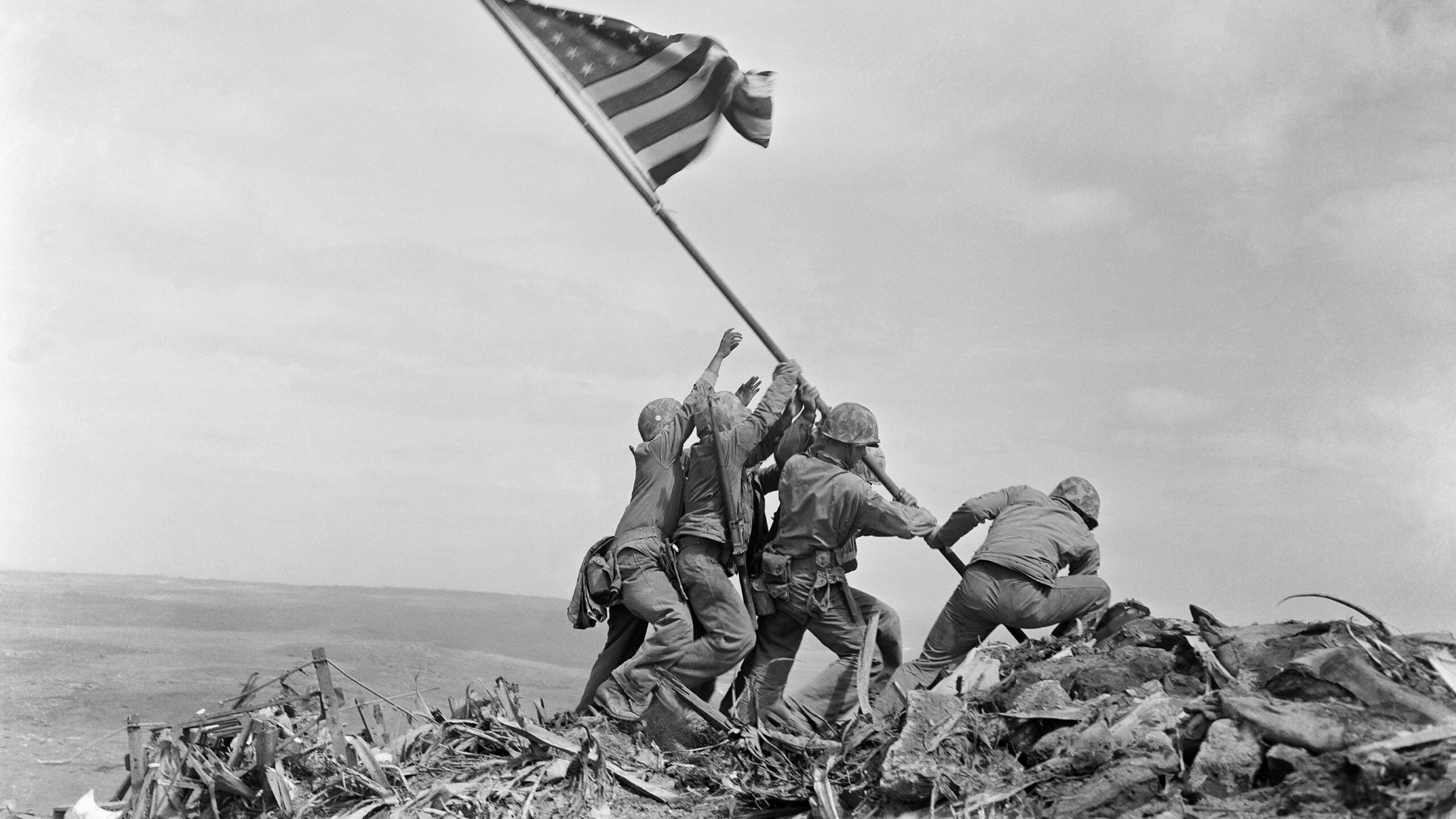
The late AP photographer Joe Rosenthal captured the spirit of the Marine Corps.
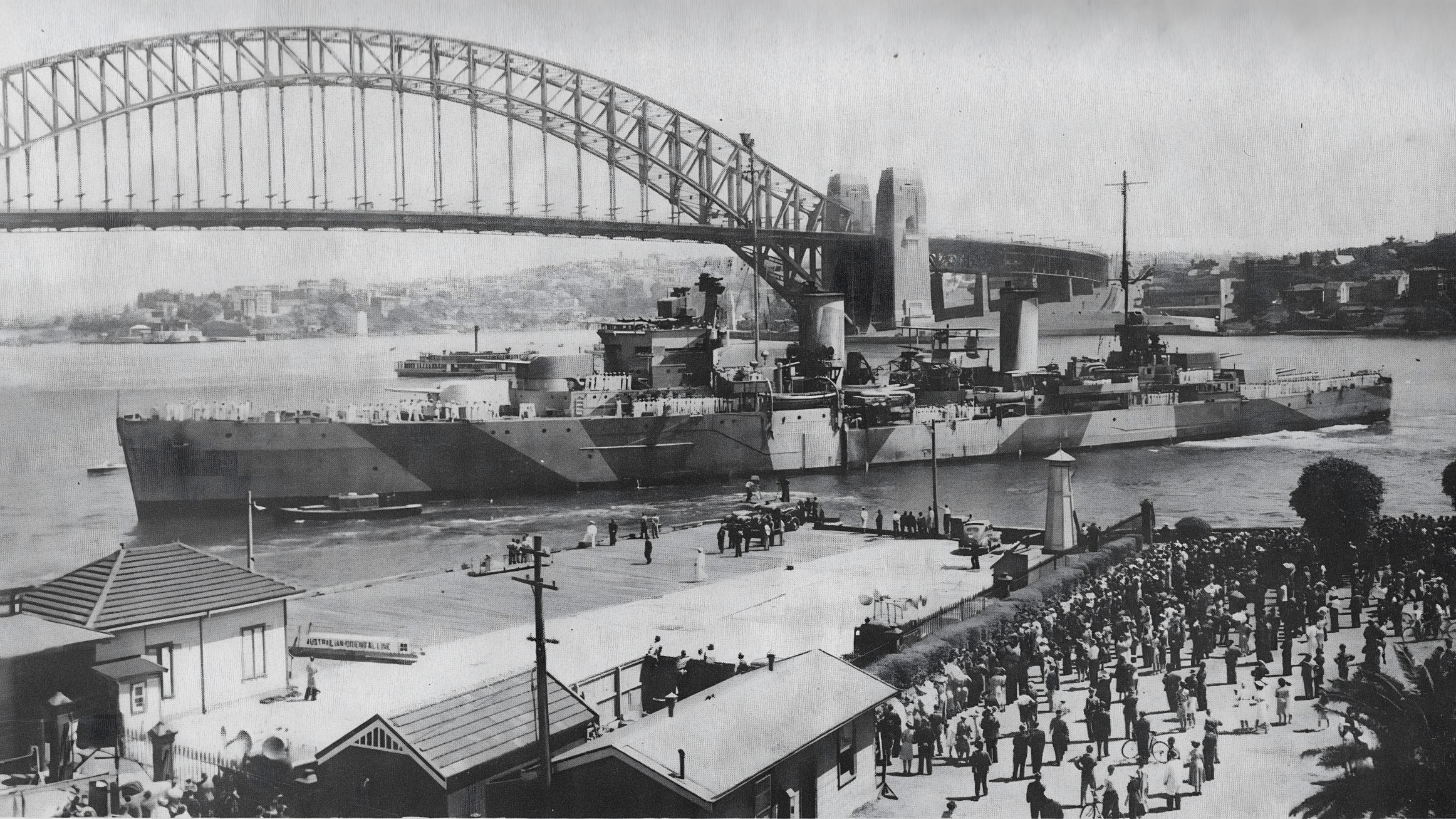
The mystery of HMAS Sydney has been uncovered.
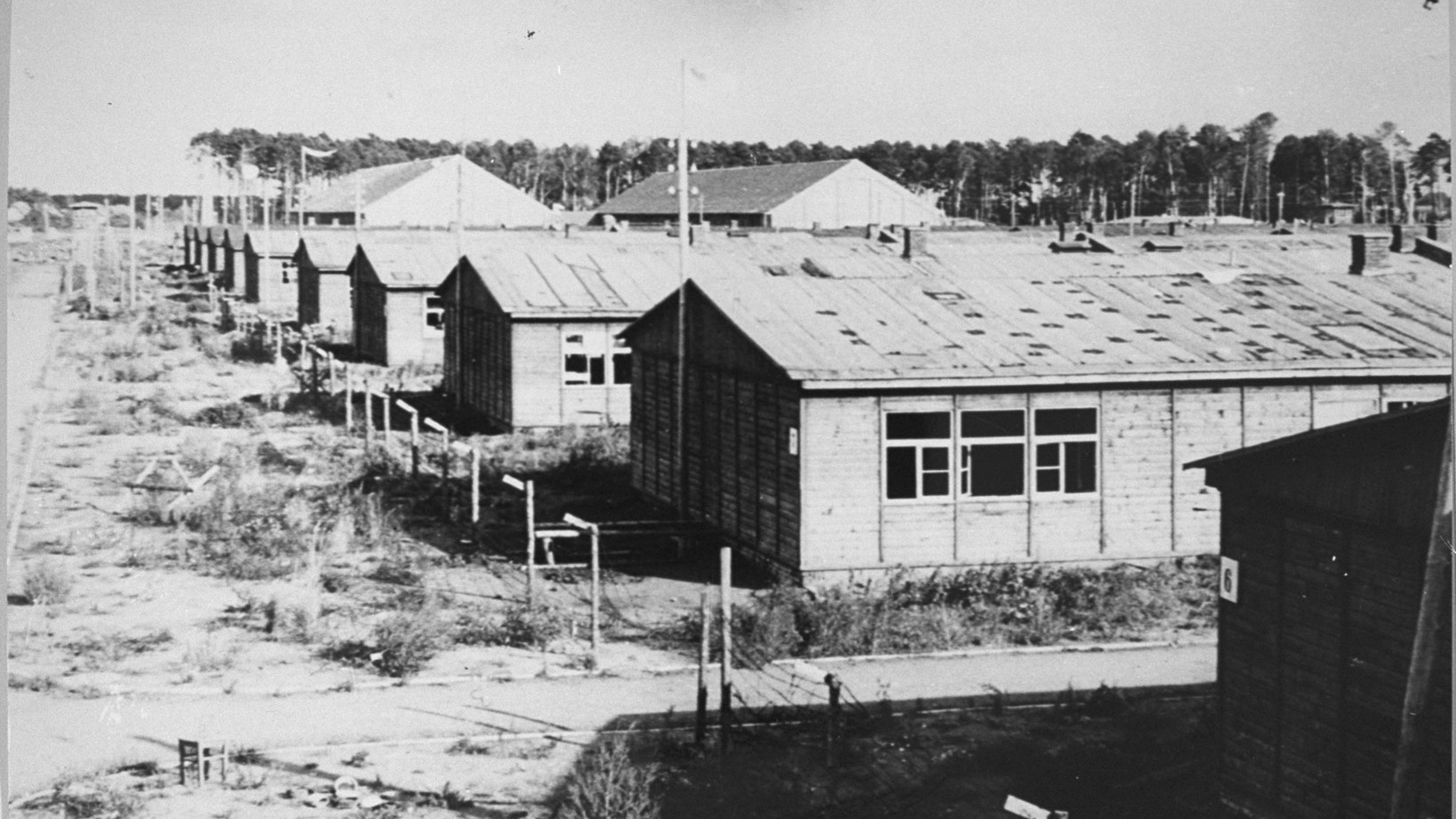
European Theater
As a teen, she worked at a concentration camp in Poland. At 97, she went on trial for her Nazi past.
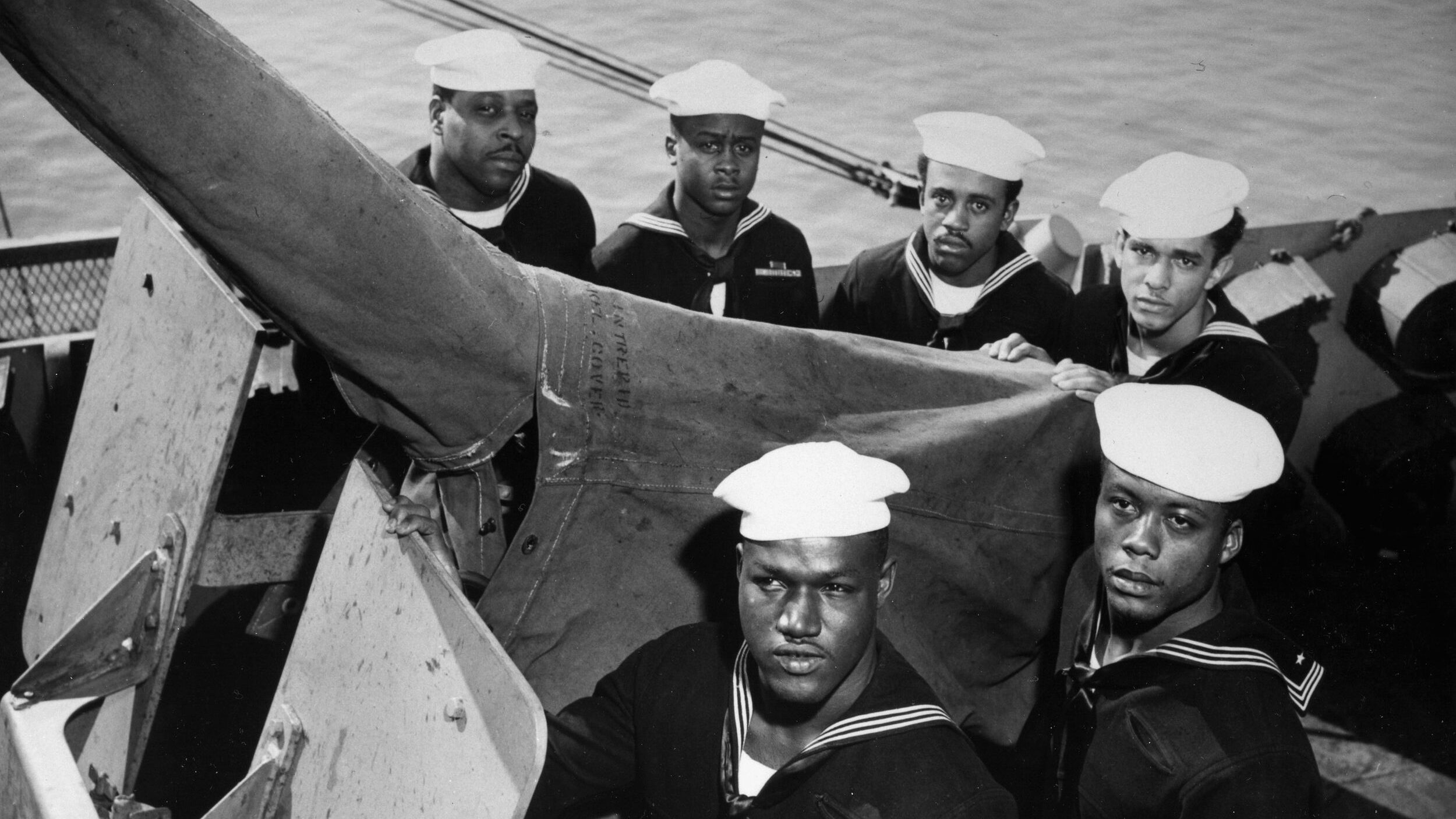
My War On Two Fronts
From around the network.
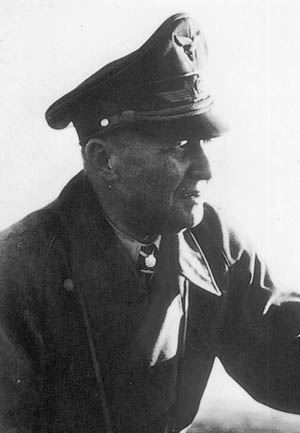
General Kurt Student: Serving in Both World Wars
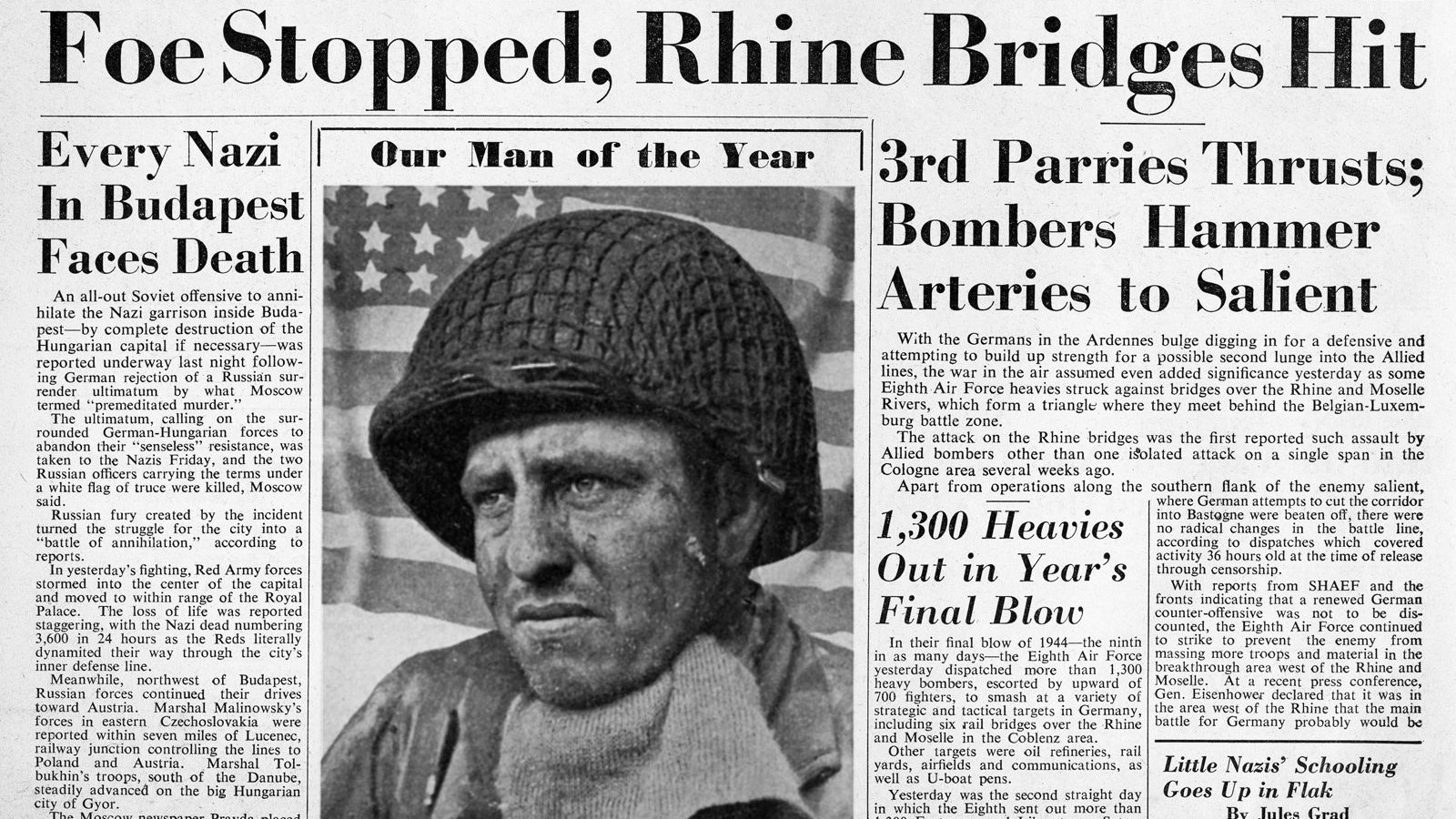
John Parks: The Face of Battle
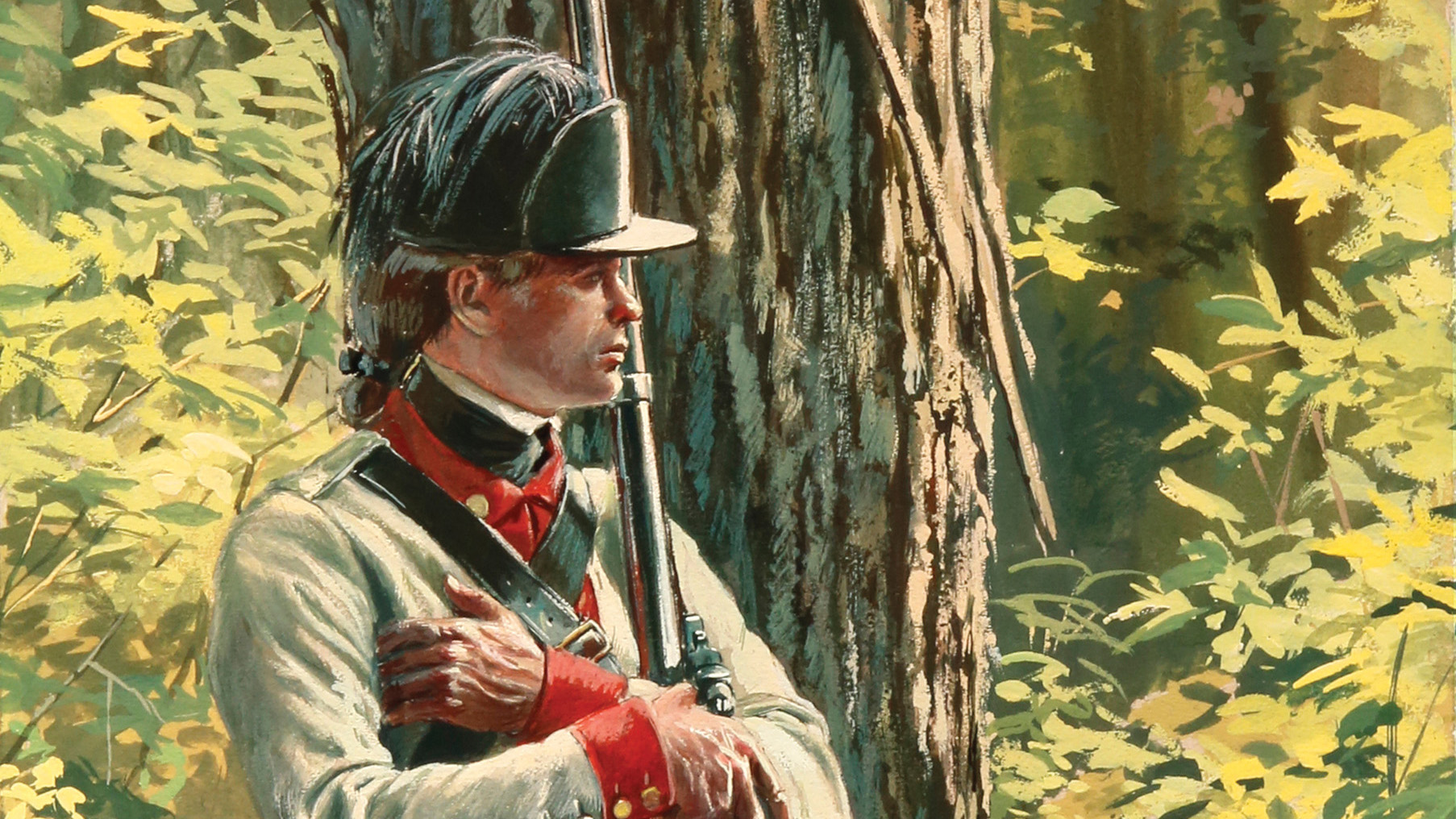
Military History
Uniform: Private in the 4th New York Regiment
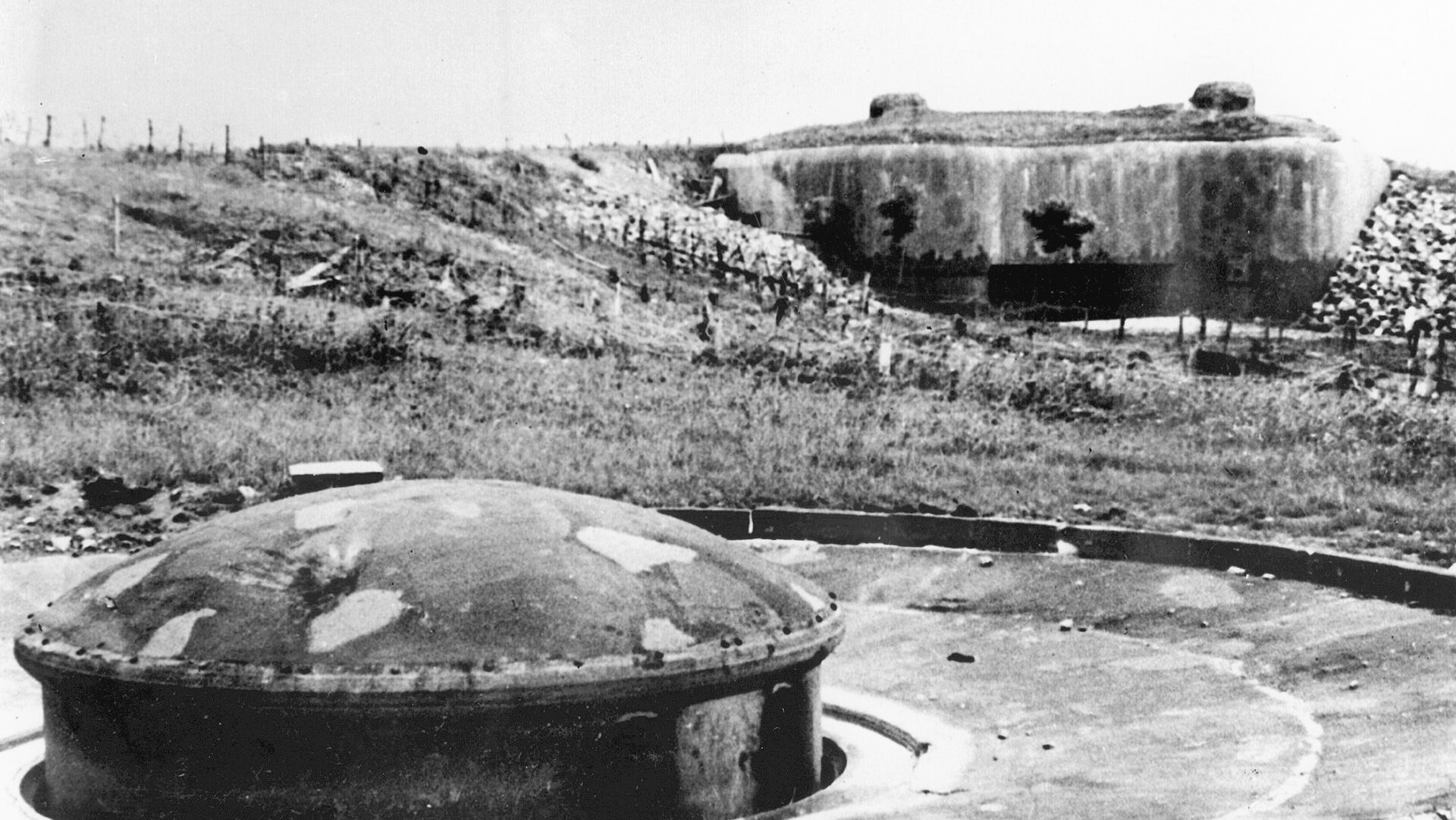
The French Maginot Line: Its Full History and Legacy after WWII
20 Best Pearl Harbor Tours
Explore the top 20 Pearl Harbor tours, from historical day-long adventures to the USS Arizona Memorial. Perfect for travelers seeking a meaningful visit.
On December 7th, 1941, Pearl Harbor was attacked from the skies above. Hundreds of Japanese fighter planes bombed below and managed to destroy and damage twenty American naval vessels. More than 2,400 Americans died on that awful day and another 1,000 were wounded.
If you’ve been wanting to visit Pearl Harbor to complete a tour of these historic sites, there are many to choose from. You will get to view the USS Arizona Memorial, USS Missouri, The Aviation Museum, The Pearl Harbor Visitor Center, and more. These tours do a wonderful job of educating the public on the historic events that unfolded.
No matter what tour you decide to go with, there are tours available for all ages. We hope you have your walking shoes ready because some of these tours will last you all day!
If you’ve been wondering about what tour you should go with on your adventure to Pearl Harbor, don’t worry, we have you covered. Let’s dive into our top 20 Pearl Harbor tours in Hawaii.
1. Pearl Harbor Memorial and Battleship Memorial Tour

Pearl Harbor is one of the most popular and memorable destinations in Oahu. The National Park contains the USS Arizona Memorial which has a magnificent white design. This is known as a hallowed ground where over 1,100 sailors remain trapped inside.
After you have toured the memorial to pay your respects, you will head over to Ford Island for the US Battleship Missouri tour. On this battleship, the Terms of Surrender were signed that ended World War II.
Finally, you will ride through Honolulu which is filled with popular destinations such as Punchbowl Crater, King Kamehameha’s Statue, and much more! If you're staying on the big island, in Maui, Big Island, or Kauai, you don’t want to miss the chance to visit the historic Pearl Harbor.
Price of Tour: Adult $139.99; Child $129.99 Length of Tour: 4 hours
2. The Complete Pearl Harbor Experience: USS Arizona, Missouri Battleship, Bowfin Submarine, & Aviation Museum

The Complete Pearl Harbor experience will give you one of the most personal overviews of the commitment to World War II. There is so much to see on this tour that you need a whole day to go over everything. On the tour, you will visit battleships, and see bullet holes from the enemy in buildings, vintage planes, war footage, and more.
The complete Pearl Harbor tour includes admission and transportation to all sites that are open to the public in Pearl Harbor. The medium group tour has 12 to 20 guests.
Price of Tour: Adult $189.99; Child $179.99 Length of Tour: Full-Day Tour
3. Pearl Harbor Oahu Circle Island

Third on our list is the Pearl Harbor Oahu Circle Island Tour. You will take a boat ride on a United States Navy launch that will take you out to the solemn grounds of the USS Arizona memorial. It has been said by visitors that this memorial will make you very emotional while learning about the events that lead up to and after World War II.
After you have toured Pearl Harbor, your guide will take you on a 120-mile adventure in Oahu to circle around the island. On this adventure, you will see overlooks, towns, beaches, and parks. Some of these landmarks include Honolulu's historic buildings, Macadamia Nut Farm, and the North Shore beaches.
This tour will tour with only 12 guests, making this a small, personal tour for better interaction. Your guide will provide an abundance of knowledge as they customize the day based on your interests.
Price of Tour: Adult $139.99; Child $129.99 Length of Tour: Full-Day Tour
4. Polynesian Cultural Center & Pearl Harbor Tour

Fourth on our list is the Polynesian Cultural Center & Pearl Harbor tour, where a full tour of the island of Oahu lies right at your feet. You will start your tour off at the USS Arizona Memorial before heading off on an island adventure. On this tour, you will start off at Pearl Harbor before heading to the Polynesian Cultural Center.
At the center, you will get to see the cultures that are represented through demonstrations and shows. Here you’ll get to watch the canoe pageant and even get the urge to go for a ride yourself. At the center, you’ll also get to have lunch which is included with your tour price.
In addition to touring the center, you’ll pass through unique towns and get to stop by overlooks throughout the day. You’ll have plenty of opportunities to get photos taken at some of the most popular locations.
Price of Tour: Adult $239.99; Child $229.99 Length of Tour: 10 hours
5. Battleship Missouri With Pearl Harbor & Circle Island Helicopter Tour

Fifth on our list is the Battleship Missouri With Pearl Harbor & Circle Island Helicopter Tour, where you’ll see all of Pearl Harbor and Honolulu from the ground and the sky. This tour has a combination of the most popular stops at Pearl Harbor with a forty-five-minute helicopter tour of Oahu. Your guide will take you to the Arizona Memorial, the white structure that is the size of the battleship.
Your guide will then take you to Mighty Mo, a battleship that was named after the state of Missouri. The guide will show you highlights of the ship before letting you explore on your own. Next, you’ll head to the airport to begin your helicopter tour.
You’ll fly over Pearl Harbor and see the outline of Arizona from above. You’ll also get to fly over the National Cemetery of the Pacific, Downtown Honolulu, Waikiki, and Diamond Head.
Price of Tour : Adult $479.99; Child $469.99 Length of Tour: 7 - 8 hours
6. Remember the Battleships Tour

Sixth on our list is the Remember the Battleships Tour, where you’ll visit the Arizona Memorial and Battleship Missouri at Pearl Harbor. These two sites are the main involvement in World War II. You will be picked up in their minibuses and brought to the Pearl Harbor visitor center.
Before boarding the boat to visit the Arizona Memorial, you will have time to explore the museums. The memorial straddles the battleship that was destroyed on the first day of the war. After coming back from the Arizona Memorial, you will drive over to Battleship Missouri.
On the battleship Missouri, you will be free to explore the ship and the many decks. You’ll be able to check out films, and exhibits, and even see the kamikaze attack that damaged the ships in the last days of the war. This is one that you don’t want to miss!
Price of Tour: Adults $108; Child $85 Length of Tour: 4 hours
7. Passport to Pearl Harbor

Seventh on our list is Passport to Pearl Harbor, the full-day tour experience. You’ll get to visit the most popular museums that include the Bowfin Submarine, USS Battleship Missouri, and the Pearl Harbor Aviation Museum. You’ll get to see it from different perspectives such as below the ocean in a submarine, commanding the seas in a battleship, and high above in an aircraft.
You’ll be able to listen to stories with a free audio tour device so you can listen and hear points at every stop. You’ll also have the option to choose to go with a guide, which may be stress-free as they do everything for you.
Price of Tour: Adult $89.99; Child $44.99 Length of Tour: Over 8 hours
8. Pearl Harbor Warbirds

Eighth on our list is the Pearl Harbor Warbirds Tour, where you’ll be able to take to the skies in a vintage warbird. A flying tour is a one-of-a-kind experience, even though it may not be for everyone. The T-6 was a very versatile plane that was built in 1944.
If you are an aviation enthusiast, this tour is a must-add to your list. The agency can even set up a custom tour so you’ll be able to visit the aviation museum before your flight. This tour will fly you over Honolulu and Pearl Harbor.
While in the aircraft, you’ll be able to see things the way a cadet would. You will get to circle the island and see the pathway that the Japanese took when they bombed many sites in Oahu. This tour is narrated with views of Pearl Harbor and Ford Island.
Price of Tour: $1,644.99 Length of Tour: 45 - 60 minutes
9. Pearl Harbor Fly-Drive Package

Ninth on our list is the Pearl Harbor Fly-Drive Package Tour, the least expensive tour from the outer islands that includes an airline ticket, rental car, and other assistance to visit the Arizona Memorial. Once you arrive in Honolulu, you’ll proceed to pick up your rental car and head straight to Pearl Harbor. You can reach out for recommendations on how to make the most of your visit for that day.
If you want to see the historic sites at your own pace, you can choose an Oahu Island Circle your with a self-drive option. You may also add extra stops and tickets to see other museums in Pearl Harbor.
Price of Tour: Adult $349.99; Child $339.99 Length of Tour: Times vary depending on the attraction.
10. Honolulu: Pearl Harbor, USS Arizona, and City Tour

Tenth on our list is the Honolulu: Pearl Harbor, USS Arizona, and City Tour. You will spend the day visiting the most important sites and landmarks in Honolulu. You’ll begin your tour with a visit to the Pearl Harbor Visitor Center, where you’ll enjoy the exhibits, galleries, and displays before you board a Navy boat shuttle for a tour along “Battleship Row.”
As you step off your shuffle to explore the USS Arizona Memorial, you’ll continue to the National Memorial Cemetery where you’ll see the historical landmark against the rolling hills and beautiful foliage. Towards the end, you’ll wrap up your tour with a narrated experience of downtown Honolulu. You’ll get to see the state buildings, and learn about lolani Palace.
This tour includes hotel pick-up and drop-off, transportation, a guide, national park fees, admission to the USS Arizona Memorial, a downtown Honolulu tour, and more. This tour will honor those who served in the United States Armed Forces.
Price of Tour: From $60 per person Length of Tour: 5 hours

11. Pearl Harbor Heroes Adventure Tour

Eleventh on our list is the Pearl Harbor Heroes Adventure Tour. You all immerse yourself in a full-day tour learning about World War II history in Oahu. You’ll get to visit the USS Missouri and the site where the Japanese attacked Pearl Harbor.
After that, you’ll climb onto the Bowfin and learn about the role it played during World War II. You’ll get to honor the lost soldiers of the USS Arizona and visit the Pearl Habor Aviation Museum. Round-trip transportation from the Waikiki hotels will be included.
Included in your tour will be a live narration by your professional guide, pick up and drop off at Waikiki hotels, lunch, Battleship Missouri admission fee, and Pearl Harbor Aviation admission fee.
Price of Tour : From $209.79 Length of Tour: 9 hours 30 minutes
12. Honolulu Tour With Pearl Harbor

On this tour, you’ll get to hear wonderful stories of Honolulu and Pearl Harbor. You will witness the iconic sites and the memorials of the 1941 attack and experience the island’s history. Your tour will begin with a pickup in Waikiki.
You will first travel to Pearl Harbor and then ride the navy launch to the USS Arizona Memorial. You will get to explore the memorials of those who lost their lives and reflect on the wall of remembrance. After the memorial, you will return to the van for your tour of downtown Honolulu.
You will get to see sites such as the state Capitol and Aloha Tower as you learn about some of the history of Hawaii. Gratuities are not included on this tour.
Price of Tour: From $50 per person Length of Tour: 5 hours 30 minutes
13. Pearl Harbor and Honolulu City Tour

On this tour, you will get a complete experience of the Pearl Harbor Visitor Center along with a historic Honolulu tour. On the tour visit, you’ll see lolani palace and get to stop for a photo opportunity at the popular statue of King Kamehameha. This was the king of the Hawaiian islands.
This tour includes MANY great features. Some things that are included are luxury round-trip transportation, the Pearl Harbor Visitor Center Tour, World War II Valor in the Pacific National Monument, a documentary film of the Pearl Harbor attack, and a professionally narrated tour.
Price of Tour: From $64 per person Length of Tour : 5 hours
14. USS Arizona Memorial Narrated Audio Tour

On this tour, you’ll experience one of the most powerful destinations in Hawaii on a fully narrated audio tour to the USS Arizona Memorial and Pearl Harbor Visitor Center. This narrated audio tour is 2.5 hours long that will take you through two class museums that include the amazing “Attack” and “Road to War.” These lead up to the attack on Oahu and the aftermath.
You’ll have your own guide to lead you along as you look at photographs, memorabilia, and more. This is included the audio tour, Pearl Harbor Visitor Center map guide, and disposable earbuds. The tour does not include tickets to the USS Arizona Memorial, which must be purchased separately.
Price of Tour: From $7.99 per person Length of Tour: 2 hours 30 minutes
15. Oahu: Salute to Pearl Harbor

On this guided tour, you’ll get to stand at ground zero of the Pearl Harbor attack and look up at the sky that once was filled with Japanese planes. During this tour, you’ll get to revisit the past and see artifacts and media displays that show the events and details that lead up to the attack. You’ll learn that Ford Island was the center of the attack, where residents once woke up to madness and destruction.
You’ll then head to the USS Arizona Memorial by shuttle boat. During your trip, you may see turtles swimming in the reef around the Arizona and how it is entombed below. You’ll get to see a historical film, a journey that takes you back in time to see a survivor of the attacks.
This tour includes centralized pickup, certified tour guides, and an entrance fee. This tour does not include food, drinks, or gratuities.
Price of Tour: From $46 per person Length of Tour : 5 hours
16. Oahu: Pearl Harbor Heroes Full-Day Tour

On this tour, you will get to retrace the footsteps of the brave soldiers of World War II on a full-day tour of Oahu. After you get picked up from the hotel, you will get to relive the days from the attack on Pearl Harbor to the signing of surrender aboard the USS Missouri. You will then get to visit the aviation museum where you’ll learn about the pilots of a bygone age.
You will also get to see how the US Navy has changed its base on Ford Island. This tour includes hotel pickup and drop off, a guide, navy operated boat tour, an audio tour of the USS Bowfin, Pearl Harbor Aviation Museum, and the guided tour of the USS Missouri.
Price of Tour: From $192 Length of Tour: 9 hours 30 minutes
17. From Waikiki: Pearl Harbor Premium Tour

On this premium tour, you’ll get a guided tour with skip-the-line to access Pearl Harbor, Punchbowl National Cemetery, and downtown Honolulu. You’ll get to tour on a luxury mini-bus that comes equipped with USB ports, LED interior and exterior, frameless passenger windows, and a panoramic front view window. As you travel on this air-conditioned ride, your guide will narrate the history of all of these important sites.
Once at the site, you will have access to the USS Arizona audio guide. Included in your tour is a pickup and drop-off at your Waikiki hotel. With this premium tour, you’ll receive breakfast and lunch, a souvenir booklet, and an official Pearl Harbor tote bag.
Price of Tour: From $191 Length of Tour: 9 hours
18. Oahu: Diamond Head Hiking & Pearl Harbor Tour

This Diamond Head Hiking and Pearl Harbor Tour are so popular that it’s likely to sell out! You’ll get to experience this hiking trail from a transfer from your hotel in Waikiki. On top of Diamond Head, you’ll enjoy panoramic ocean views and you’ll get to stop at Pearl Harbor afterward.
Once you get to Pearl Harbor, you can spend time shopping, grabbing lunch, or seeing other tour sites after your hike. At the end of your tour, you will be returned to the hotel. This tour cost does not include storage lockers, Arizona Memorial tickets, or tips.
Price of Tour: From $80 Length of Tour: 8 hours
19. Pearl Harbor USS Arizona & Historic Honolulu Limousine Tour

On this tour, you’ll go on a private limousine tour of Pearl Harbor, the USS Arizona, and Honolulu. You’ll get picked up from any address in Oahu and hop in a 10-passenger luxury limousine. Once you get to your destination, you’ll take a guided walking tour of the area.
Included in this tour are a chauffeur, limousine transportation, a wet bar on ice, snacks, Pearl Harbor souvenir, access to two Arizona Memorial Museums, and more!
Price of Tour: From $699 Length of Tour: 5 hours
20. Oahu: Doors Off Circle Island Helicopter Experience

On this tour, you will go on a helicopter that covers the island from above, making this the only full-circle tour of Oahu by helicopter. You’ll get to see aerial views of Pearl Harbor, the World War II Arizona Memorial, and more.
You’ll then get to fly above Honolulu Harbor and the Diamond Head crater. It’s important to note that this tour is not suitable for children under 12 years old. Are you brave enough to tour the skies?
Price of Tour: From $552 Length of Tour: 1 hour 15 minutes
Tobi Miles is a University of Florida graduate turned globe-trotting culinary explorer and digital nomad expert. As the founder of "Bytes & Bites," he combines his passion for international cuisine with practical advice on remote work, inspiring others to experience the world through food and cultural immersion. With 32 countries under his belt and a knack for uncovering hidden culinary gems, Tobi is redefining the intersection of work, travel, and gastronomy for a new generation of adventurers.
Recommended Reads
Trending reads.

Is Jakarta Worth Visiting?
Explore Jakarta's hidden gems & cultural wonders. Is Jakarta worth visiting? Find out what makes this vibrant city a unique destination for travelers.

Top 13 Amish Communities in America
Explore the Top 13 Amish Communities in America with our Culture Guide. Learn about their origins, lifestyle, and unique traditions. Perfect for travelers keen on cultural insights.

15 Epic Maritime Museums in the USA
Explore top maritime museums across the USA, from naval warfare to ocean exploration. A must-visit for travel enthusiasts and history buffs alike!
Your trusted source for travel guides, tips, and insights since 2020. Empowering adventurers with expert advice for smarter, more rewarding journeys.
- Search for:
- Plan Your Visit
- USS Arizona Memorial
- Battleship Missouri
- Bowfin Submarine
- Pearl Harbor Aviation Museum
- Pearl Harbor Tours
- Tours Departing Oahu
- Tours Departing Maui
- Tours Departing Big Island
- Tours Departing Kauai
- Popular Tours
- (808) 824-3995

Visit Historic Pearl Harbor
On december 7th, 1941 the world changed forever, pearl harbor tickets & memorial tours, oahu | maui | big island | kauai.
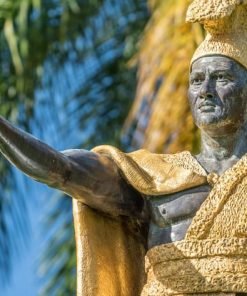
Pearl Harbor and Historic Honolulu City Tour departing Waikiki Hotels
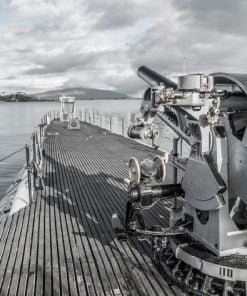
Battleships of WWII at Pearl Harbor Tour departing Waikiki Oahu Hotels
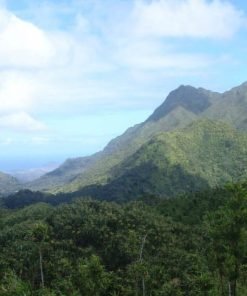
Oahu Grand Circle Island Tour + Dole Plantation + Macadamia Farms Departing Waikiki, Oahu Hotels
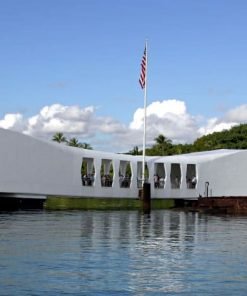
The Complete Pearl Harbor Experience Tour Departing Waikiki Oahu Hotels
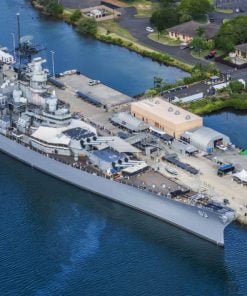
Pearl Harbor + Dole Plantation + Polynesian Cultural Center Tour departing Waikiki Hotels
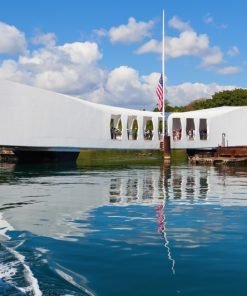
Pearl Harbor and Historic Honolulu City Tour Departing Maui
Tour Pearl Harbor
In the massive attack, one of the ships that sank was the USS Arizona. Today, you have the opportunity to stand above the wreckage of that ship when you visit this historic site. Visit the monument to the men who were killed during the ambush and experience the somber peace of a historic battle site. Book your Pearl Harbor tours now!
At Pearl Harbor, you can visit the site where the US involvement in WWII began, and where it ended. Visit the Battleship Missouri, where the Japanese surrendered and ended the war. Tours include round-trip transportation and can be booked every day.
What Island is Pearl Harbor On?
Pearl Harbor is located on the island of Oahu in Hawaii. Oahu translates to “the gathering place,” and with 1.42 million residents, it’s easy to see why. Oahu is a city on an island with the perfect mix of island living and the attractions of a city. Touring other Hawaiian islands is a breeze with our airfare included tours. We provide the best Pearl Harbor tours from Oahu to make sure you enjoy every moment of your trip. You can also visit Pearl Harbor from the other islands of Maui, Hawaii, and Kauai. Maui being known for the great Maui luaus and Maui Helicopter Tours .
Pearl Harbor Tours Departing Waikiki, Oahu
Pearl Harbor is a must-see destination with some amazing tours that take you to historic places of interest along Hawaii’s largest natural harbor. From historical to modern, beaches to surfing, resorts to restaurants, Oahu has more to offer you.
Experience the Pearl Harbor memorial , Dole Plantation, and Polynesian Cultural Center tour in just one day. We begin at historic Pearl Harbor where you will experience all the historic events that unfolded on December 7, 1941. Join us at the USS Arizona Memorial , a deeply moving and emotional experience where you will learn about the 1,177 seamen who lost their lives during the Japanese attack. Back at the visitor center, you can visit the WWII museum exhibits and the gift shop. Next, we stop at Dole Plantation which is dedicated to pineapple growing history of Hawaii. Here you can shop for souvenirs and even taste a delicious frozen Dole Whip treat. While heading towards Polynesian Cultural Center on the North Shore, we’ll pass by famous surfing beaches like Waimea Bay and Sunset Beach, famous for surfing all over the world. At Polynesian Cultural Center, you’ll enter a world that celebrates the music, dance & culture of different countries.
Pearl Harbor, Dole Plantation, and Polynesian Cultural Center are Oahu’s top sites to visit all in one day. Join our friendly expert guide on our comfortable, luxury buses for the experience of a lifetime. Book Pearl Harbor tickets today!
December 7th, 1941 – When the World Changed Forever
The attack on the Pacific Fleet of the United States was unprecendented. That Sunday morning the Japanese invades awakened “The Sleeping Giant” that was the United States of America. December 7th, 1941 is one of those dates in history, much like July 4th, 1776, that is near and dear in the hearts of Americans. Anyone who lived through this time period can most likely tell you where they were on that day when they heard the news that the Japanese have attacked Pearl Harbor. Although the United States had been actively contributing to the Allies in the European Theatre against the advances of Germany, this event formally threw the USA into the Second World War.
In just a few short hours, the mighty American fleet at Pearl Harbor had been savagely attacked and shattered, giving the Japanese the advantage and leaving the mighty US Navy in shock. The assault was a combined effort between Japanese bombers and fighter planes as well as very small submarines that came into the harbor to deliver torpedoes. The main target of the attack was the backbone of the Pacific Fleet located at Battleship Row where the ‘Mighty Missouri’ now stands for visitors to tour. Fortunately for the United States, the incredibly valuable aircraft carriers were out to sea and survived to mount a counter-offensive in 1942 at Midway and Coral Sea where the US Navy struck two decisive blows.
Your visit to Pearl Harbor will be a day you will remember forever. The facilities at Pearl Harbor do as much to inspire awe in the event itself as to educate and bring alive the history of this period. You’ll get an in-depth experience about the events leading up to the attack as well as how Pearl Harbor and the island of Oahu were pivotal during the remainder of World War 2. If you’re visiting Hawaii and haven’t gotten a chance to experience this historic site, now is the time to visit one of America’s most important historic sites.
What Our Visitors Say About Us
Mati b. naces via facebook.
“We had an amazing time at Pearl Harbor. It was an experience that moved us. Learning about what had happened at Pearl Harbor was very touching. It is a place I recommend visiting when in Oahu.”
Roy Whitevia Facebook
“I was young when stationed there during my Naval service, but very clean and beautiful city, loved the people and culture very much, great food, shopping and entertainment recommend this location and island very much….”
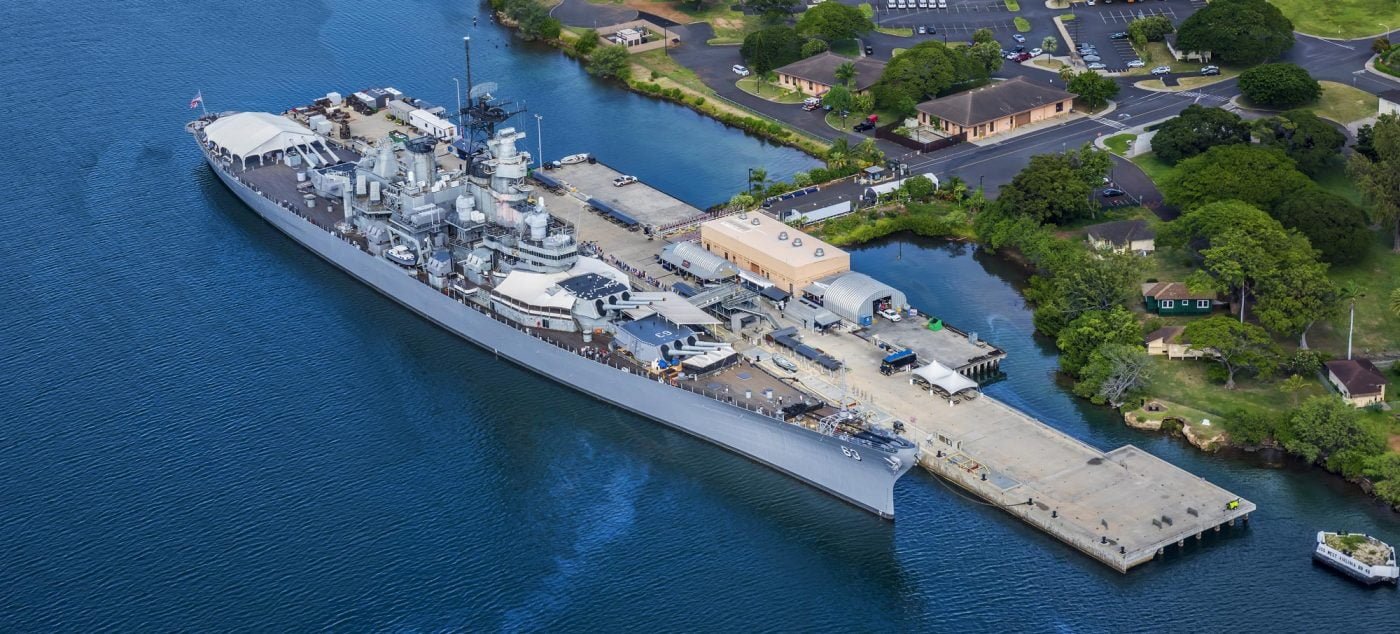
- Relax and be confident in your booking, we’ve got you covered.
- Visit All the Historical Sites
- Fun and Friendly Tour Guides
- All your information is encrypted and secure
- No cancellation penalties (when canceled at least 48 hours prior to tour)
- No service fees
- No change fees
Don't Miss The Complete Pearl Harbor Experience.
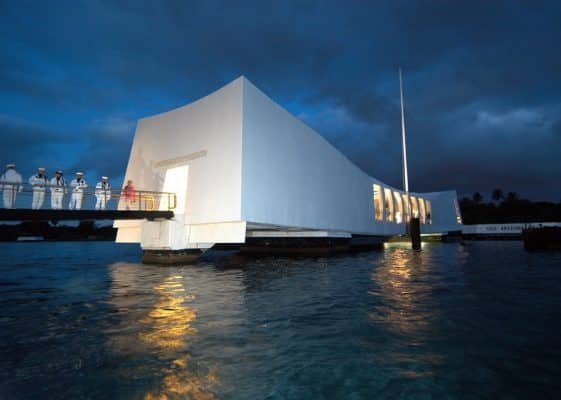
Top Things to Do in Pearl Harbor
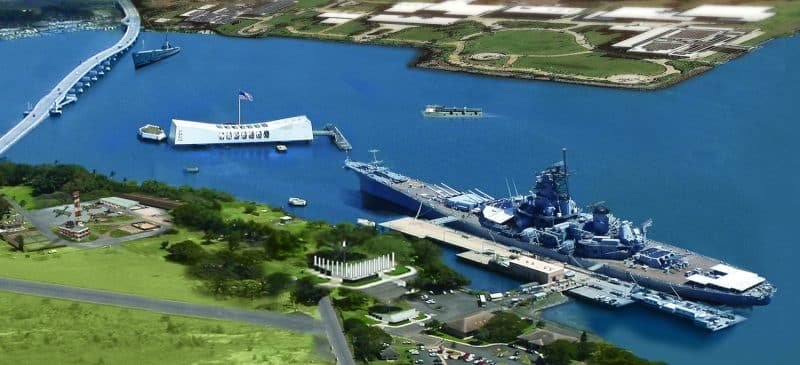
Guide to Pearl Harbor Tours & Activities
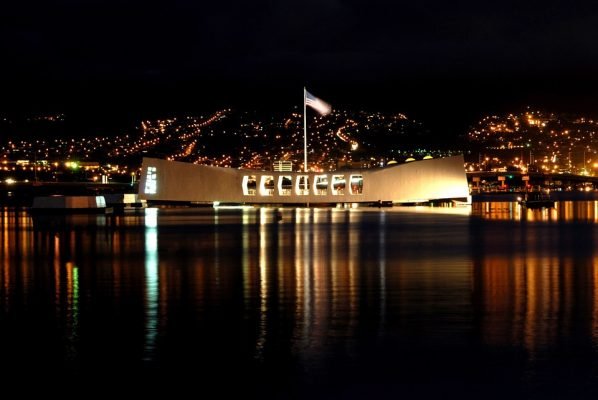
What You Should Know Before Visiting Pearl Harbor
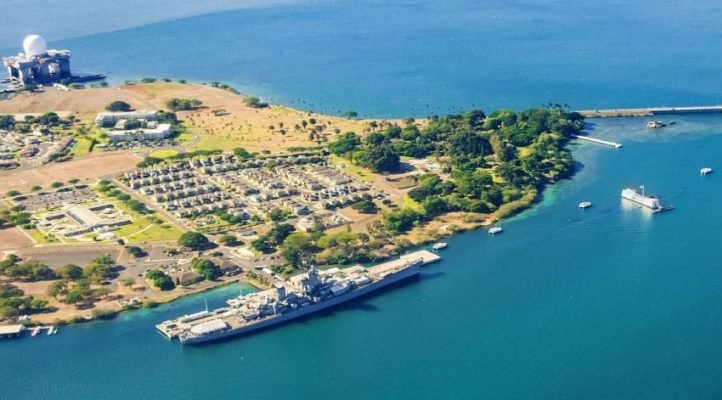
What Island is Pearl Harbor on? How to Visit Pearl Harbor From Other Hawaiian Islands
Username or email address *
Password *
Remember me Log in
Lost your password?
Mark Woods: A Pearl Harbor story. From Okinawa to Jacksonville with love.

At age 87, Shigeko Sams is old enough to remember Pearl Harbor. But her memories are different from most Americans who were alive on Dec. 7, 1941.
She was 5 years old, a Japanese girl growing up in a village on the islands of Okinawa.
Her parents owned a small shop. She remembers about a half dozen adults gathering there one evening. She overheard them talking, saying Japan was winning the war.
Eighty-two years later, she wonders how they even found out about what was happening on the other side of the world. They didn’t have telephones or televisions. And, of course, they didn’t know what was ahead, how the war eventually would come to Okinawa and leave a staggering death toll.
On a recent morning, Sams pulled out some photos from Okinawa as it is today, with memorials to Japanese and Americans, and with the kind of natural beauty that she says leads to it being called “the second Hawaii.”
If you look at what is happening in the world today and want a glimmer of hope that things can change, that people at war can someday be at peace, talk to someone who was alive when Japan attacked Pearl Harbor and America destroyed Hiroshima.
And if you want to hear a story of how in the aftermath of intense hatred of people considered to be the enemy, two people found love, talk to Shigeko Sams.
She opened a scrapbook full of memories from her life and spread them out on a table. Documents, letters, newspaper clippings. They help tell the story of how she ended up meeting a man from Jacksonville, coming to America, raising three children, opening a popular restaurant, managing the delivery of thousands of Meals on Wheels, earning awards for years of volunteer work.
But, first, go back to what happened after Pearl Harbor.
Preparing to fight the enemy
In first grade, she says they were taught how to escape, how to run and hide, how to sharpen bamboo sticks and charge at a tree that represented the enemy.
“Can you imagine?” she said.
Or maybe it doesn’t take all that much imagination. She recalls recently seeing images of war on the television, of children being trained to fight.
When she was in second grade, her family headed to China. Japan controlled sections of China, and the Japanese government was recruiting families to go there, to work in rice fields. Her father went first to begin building a house for them. Then one day her grandmother told her they were leaving in the middle of the night to join him.
She remembers some of the moments. Walking in the dark to catch a train, staying in a hotel, taking a ship to China, carrying her little brother on her back, standing in a field, seeing American planes fly overhead.
“In a way, we were blessed that we were in China during the war,” she said.
The Battle of Okinawa left more than 12,000 American troops dead and 36,000 wounded. It’s estimated that more than 70,000 Japanese combatants died. But the biggest death toll was of Okinawan citizens — more than 100,000 and perhaps as many as 150,000.
Leaving everything behind
When the war ended, Sams recalls that a Chinese government truck rolled up and they were told to get in. They were going back to Japan. They only could take as much as they could carry. They left everything else behind. Their house, their cow, their dog named Haru.
Even decades later, this childhood memory causes her to choke up.
“I still see my dog running after that truck,” she said.
They initially returned to mainland Japan, not the islands of Okinawa. While traveling on a train, they passed Hiroshima.
“I know exactly what it looked like after the war,” she said, describing the desolate landscape.
They eventually went back to Okinawa and she continued her education, through high school. This wasn’t a given, particularly for a girl. But her father recalled how his father had told him that he didn’t need any education, he was going to be a farmer. He didn’t want to do the same with his seven children. He told them, if they could pass the tests and he could afford it, he’d send any of them to high school.
He even made the chair and desk to take to school.
But when she graduated from high school, he couldn’t afford to send her to college. She heard about a typing school in a nearby village. That led to a civilian job at Kadena Air Base.
And that’s where she met Joseph Gardner Sams, Jr.
Kadena Air Base
Kadena, the site of an airfield used by the Imperial Japanese Army Air Force, was seized by the United States during the Battle of Okinawa. It became a U.S. Air Force base and was reactivated for the Korean War.
Joseph Sams, who grew up in Jacksonville and graduated from Stanton High School, was stationed there with the Army. When the Korean War ended, he stayed in a civilian role, working in the main administration building.
Shigeko was working in a nearby Quonset hut. But sometimes Sams would come to get coffee. And one day he overheard a supervisor talking about some night classes Shigeko could take in Naha, a town about a half hour away.
This required riding a bus. Or getting a ride with someone who had a car.
Sams offered to give her a ride. On the way, he stopped at a restaurant and said, “Let’s get something to eat.”
She refused. She knew what locals would say and think if they saw her going in there with an American. They continued to her class. And when she came out of it, he was waiting to drive her home. She just got on the bus. That time. But after he did this a few times, she says, his persistence paid off.
On Feb. 6, 1958, they got married at the American Consular Office in Naha.
Her youngest sister knew about their marriage. But the rest of the family found out after the wedding. She remembers sitting next to one of her brothers on a couch. He took a knife and slammed it down into the couch.
“Not hurting me,” she said. “But he let me know what he thought.”
Her family was ashamed of her marrying a gaijin — a foreigner.
A father's letter
The night she boarded a plane headed to America, her father and younger sister came to say goodbye. Her father brought a letter.
She still has it in a scrapbook. She runs her fingers along the Japanese characters and gives a translation.
He wrote about how much pain this was causing him. He didn’t know if he’d ever see her face again. His heart was bursting. But, beyond the hurt and anger, most of all he wanted her to be happy.
She remembers her father saying to her husband: “Promise me you’re going to take care of my daughter.”
Coming to America — and going back to Okinawa
She says she was blessed. Her husband’s family — a family with deep roots in the city and its African-American history — welcomed her to Jacksonville. And while she has experienced a few chilly reactions from people through the years, for the most part, she was welcomed to America.
She knows not every Japanese immigrant could say this, particularly arriving just a decade after America rounded up Japanese Americans and put them in internment camps.
The Sams first went to Tallahassee, where Joseph took advantage of the GI Bill to graduate from Florida A&M. From there, they went to New York City, where he directed youth clubs and she became an American citizen.
She did see her family again.
In 1965, the Sams returned to Okinawa, this time with two sons — they’d later add a daughter — and to do mission work. A story that appeared in the Okinawa Morning Star said they had been sent there by the U.S. National Council of Churches, supported by the Episcopal Church. It added that the public was invited to a welcoming reception.
Shigeko Sams flips the scrapbook to some of the clippings from that reception. Read the cutline, she says. Their family was joined by all kinds of local dignitaries. She explains why this — both the return to Okinawa and this particular moment — was so important to her.
“It showed my family there shouldn’t be any shame,” she said.
When they returned to Jacksonville, Joseph Sams went to work as project director for the local Housing and Urban Development department. In 1973, they opened a restaurant, Super Chow — first on Davis Street, then in the basement of the old Gulf Life Building, and finally Edward Waters.
A story in the Times-Union said: “Even with minimal publicity (a few flyers at the start, then simply word of mouth), Super Chow’s growth took an impressive turn,” attracting a regular crowd of department store employees, business executives and city leaders like Mayor Hans Tanzler.
The appeal, the story said, was “a quality meal at an attractive price” — meat, two vegetables, roll, drink and salad for $1.40, a dollar less than most places — and the atmosphere. Intimate, friendly, homey, family-style. The Sams family.
They also won a Meals on Wheels contract and for years delivered 1,000 meals a day to area seniors and disabled people.
When Mr. Sams died in 1998, they had been married 40 years. She says he delivered on his promise to her father. He took care of her.
After his death, she decided to stay busy by focusing on her children, grandchildren and volunteering. She volunteered for about 25 different organizations, devoting hundreds of hours to the Sulzbacher Center and others, earning several awards — including one called the “Young at Heart” award.
Not that she was sure about any of this being a story, or at least one that appears in the newspaper. She explains that it isn’t in her nature. But eventually, she agrees. And when asked what we should make of Pearl Harbor more than 80 years later, she talks not only about her childhood memories, but about Okinawa today, with its sparkling water and beautiful coastline, and with memorials to Japanese and Americans.
[email protected], (904) 359-4212

33 Rare Photos of the Japanese Attack on Pearl Harbor


Inter-Island Tours
- Compare Tours
- Private Tours
Find a Tour
- Visiting Pearl Harbor
- USS Arizona Memorial
Battleship Missouri Memorial
- The Pacific Fleet Submarine Museum
- USS Oklahoma Memorial
- Aviation Museum
- Transportation
- Attack Timeline
- Heroes & Survivors
Frequently Asked Questions
What happens if we can’t visit the arizona memorial.
There are occasions when the boats do not visit the Arizona Memorial. This can happen as a result of weather conditions, boat mechanical problems, or safety issues at the memorial. If we know in advance that this is happening, then we will do our best to notify you before your tour.
Boarding the Arizona Memorial is only one part of a visit to Pearl Harbor. The Pearl Harbor visitors center, museums, movies, and exhibits are all part of the experience. We feel that it is still worth visiting Pearl Harbor.
Tour companies do not provide refunds if the Navy boats do not take guests to the Arizona Memorial. It is out of the control of tour companies.
Sometimes, during closures that are not related to wind or boat maintenance, the boats will go near the memorial, but not board the memorial. In these cases, guests may still board boats to the memorial and float past it. They will also be able to see the battleship’s remnants. But they won’t be able to disembark the boats and walk on the memorial. Since there is no extra fee for the boat ride, there are no refunds if this happens. Existing cancellation policies apply.
What does a Private Tour include?
Transportation to and from Pearl Harbor and the driver guide’s narration are private. The program at Pearl Harbor is subject to the rules of the National Park and Navy and is not private.
Can I be dropped off at the airport after my tour?
Tours do not offer airport drop offs so please plan accordingly. You can either take a taxi/uber from Pearl Harbor straight to the airport (please let your driver know) or you can get dropped off in Waikiki and arrange transportation to the airport from there.
Should I book an inter-island tour or book my own flights?
Many people will look at the cost of the inter-island tours and think that it is cheaper to book their own flights. It may be cheaper, but there are some important advantages to booking an inter-island tour package.
When you book an inter-island tour package, if your flight is delayed, we will adjust your tour to accommodate a new schedule.
You may book your own flights and want to meet the tour, either at the airport or in Waikiki. However, if there is a flight delay and you miss your pick up, you will forfeit the tour. It would be considered a no-show, which is non-refundable.
Additionally, if your tour is delayed due to traffic or other delays, the tour company is not responsible if you miss your flight. However, if you have booked an inter-island tour package, the tour company will take responsibility to return you to the airport in time for your flight or adjust your flight time.
Inter-island Tour Airport Pick up
When you book an inter-island tour, your tour will be scheduled for when your flight lands. When you book your flights on your own and choose an airport pick up you will be picked up after the bus has finished picking up guests in Waikiki. That may work out to a short wait, but depending on your flight arrival time, you could be waiting at the airport for an extended period.
As you can see there are many benefits to booking an inter-island tour package. So why do we offer airport pick up? There are many guests who arrange a layover in Honolulu after visiting a neighboring island. Those guests cannot book an inter-island tour because they will not be on a round trip flight between islands. We can help make the most of a layover with a tour.
Where is my confirmation?
If you made an order and have not yet received an email with your confirmation, please let us know. We would be happy to resend your confirmation.
There are a few reasons why you might not have received your tour confirmation.
- (Most Common) It is in your spam folder.
- You entered your email address wrong. This happens often. To check this, see if you received a receipt after ordering. If so, then we should have your correct email address.
- We have not completed your confirmation yet. Some reservations take longer depending on availability and scheduling.
Has it been 24 hours? We would love to have your confirmation back to you immediately, but occasionally it takes some time. If it has been 24 hours, please contact us and we will get back to you right away.
Contact us by emailing [email protected]
Where is the tour pick-up point?
Guests staying in Waikiki are picked up at their hotel or at a nearby hotel. Tour pick-up locations are within a 5-minute walk from your hotel.
After you book your tour, we will email you a confirmation with the specific pick-up location and time. Your confirmation will also have instructions regarding your pick-up including the location, time, and vehicle description.
If you have trouble walking and require additional accommodations, please advise us before booking. You may write “wheelchair” in the booking notes field. When doing so please specify if you are able to walk up a few steps or require a wheelchair lift.
For Inter-Island tours, the tour pick-up point will be upon arrival at Honolulu International Airport (HNL). Again, your tour voucher will have specific instructions about the Tour pick-up.
I’m not staying in Waikiki, can I take a tour?
Most Pearl Harbor Tours depart from Waikiki. If you are staying in a private residence or at a hotel outside of Waikiki there are other options.
Sometimes it makes sense to drive or get a ride to Waikiki and start your tour from there. Most guests either park at the Honolulu Zoo or at Ala Moana Shopping Center . If you plan to go shopping or eat at the Shopping Center after your tour, Ala Moana Shopping Center is a good choice. The pick-up will be across the street at the Ala Moana Hotel or the nearby Ilikai Hotel.
- Tour companies are NOT allowed to meet guests at Pearl Harbor.
Kahala and East Oahu
The best option for those staying on the windward side of Oahu (Kailua, Kaneohe) or on the East side (Hawaii Kai) is to take a tour from Waikiki. Simply state in the notes during checkout that you will meet us at the Twin Fin Hotel - Public Parking is available at the Honolulu Zoo on Kapahulu Ave.
Ko’olina & Aulani Disney Resort
If you are staying at Koolina, including the Disney Resort Aulani, Waikiki is out of your way. But you are in luck. We now have tours available from Koolina.
Remember Pearl Harbor Tour from Ko Olina (Thursday & Saturday)
Pearl Harbor Excursion from Ko Olina (Wednesday & Sunday)
North Shore
You can drive or take a taxi to Waikiki to start the tour. If you would like to be picked up at the Ala Moana Hotel or Honolulu Zoo, please indicate so on the checkout page.
Booking a tour when not staying in Waikiki
If you are staying in a vacation rental outside of Waikiki, you can indicate so on the checkout page. You can drive or take a taxi to Waikiki to start the tour. If you would like to be picked up at the Ala Moana Hotel or Honolulu Zoo, please indicate so on the checkout page.
What if I haven’t booked a hotel yet?
You can still book your tour. It is not necessary to wait until you have hotel reservations. In the meantime, you can list any hotel. For example, the Hilton Hawaiian Village. Once your hotel arrangements are finalized, you can contact us to make the change to your reservation.
If you end up changing your plans, you can cancel your reservation. Most of our tours have a simple cancellation policy. Only inter-island tours are non-refundable because they include flights.
We also offer tours from Maui, Big Island (Kona), and Kauai. The Inter-Island tours include round-trip flights, airport pick-ups, and everything that the other tours offer.
Staying on Maui?
Staying on The Big Island of Hawaii?
Staying on Kauai?
Why book a Pearl Harbor tour ahead?
In general, it is always wise to book tours and activities in Hawaii ahead of your arrival. Too many visitors wait until they’ve left home to make reservations only to find tours are sold out.
Today research can be done easily in advance. We have all the answers to your questions about Pearl Harbor.
Cancelling is Easy
We have a very simple cancellation policy. As soon as you have your flights to Hawaii you might as well reserve your Pearl Harbor Tour. If your plans change, you can simply rely on our cancellation policy.
If something comes up, we are here to help. Maybe you want to add additional guests, change dates, or make another change. Contact us and we will work with you to make your trip a great experience.
Keep in mind, tours with flights are non-refundable, but those are also the most important to book in advance. They are most likely to sell out or increase in price if you wait.
Some people wait to book until they arrive thinking that they will get a better price. There are no last-minute rates on Pearl Harbor Tours. The price that you pay on pearlharbor.org is the same or lower than the rate that you will pay at your hotel or elsewhere.
If a company claims to offer discount Pearl Harbor Tours, you should be suspicious. It most likely involves a timeshare presentation or an unauthorized, uninsured shuttle company. We offer the best rates on Pearl Harbor Tours.
Another Reason to Book Ahead
There is something that happens when you come to our islands. We call it paradise paralysis. You begin relaxing and don’t get around to all of the things that you had in mind. You just lay at the beach and an entire day goes by and you never get around to booking your Pearl Harbor Tour.
If you have an agenda ahead of time with your tours booked, you will be able to avoid paradise paralysis. You will be sure that you see the sights that you want without any stress on your holiday. Book in advance!
Can we arrange Pearl Harbor tours from Maui, Kauai, or the Big Island?
Pearl Harbor is located on Oahu, but if you are staying on a neighboring island, we have Pearl Harbor tours from Maui , Kauai , and the Big Island to Pearl Harbor.
These tours include round-trip airfare and pick-up from Honolulu International Airport, which is only 10 minutes from Pearl Harbor. Often referred to as One-day Tours or Inter-Island Tours, a Pearl Harbor Tour from Maui, Kauai, or Hawaii, the Big Island is the best way to see this important site.
Inter-island tours are primarily on jets with a flight time of 25 – 40 minutes. There are no boats or ferries offering tours between the islands.
Lunch is not included however there are places to eat on site. The narrated portion of the tours begin after you are picked up at Honolulu International airport.
There are no one-day Pearl Harbor tours available from Hilo. If you are staying in Hilo or near the Volcano on Hawaii, the Big Island, you will need to drive to Kona for a one-day tour. Tours on the Big Island depart from Kona .
Currently, Pearl Harbor tours are not offered from the islands of Molokai or Lanai. However, visitors to these islands can arrange a private tour on Oahu that includes airport pick-up.
Which Pearl Harbor tour should I choose?
This is a good question and as you might expect which Pearl Harbor Tour depends on what you are interested in seeing.
If you are really into history, choose the tour that includes the most sites.
If Pearl Harbor is a site you feel like you have to visit but doesn’t interest you very much, choose a short tour. But be ready to have your mind changed as Pearl Harbor is a moving place with fascinating sites and stories.
One easy way to see the differences in the tours is to look at the Pearl Harbor Tour Comparison Chart .
What is not included in a tour of Pearl Harbor?
A tour of Pearl Harbor does NOT include:
- Gratuity – All tours in Hawaii do not include gratuity unless stated otherwise. Tour guides work for tips, so please consider the effort that they put into your safety and entertainment as you depart your tour.
- Food & Beverage – Some tours include lunch, however, most do not. Be sure to check the inclusions on the tour pages to see if your tour includes food and beverages.
- Photos – At various locations throughout your tour you will have the opportunity to take a professional photo. You can purchase those photos as a souvenir. They are not included. However, if you would like your guide to take your photo with your camera, just ask and he/she will be happy to do so.
- Baggage storage – You should avoid bringing any bags to Pearl Harbor because they will be in storage for the entire time and you will have to pay the storage fee. See more about Pearl Harbor Baggage Policy .
Please review the specific Pearl Harbor Tours to see which sites are included. Admissions to the sites are included in each Pearl Harbor Tour. Things that are included can be found on each tour page’s What’s Included section.
Will our guide take us on the Arizona Memorial?
Generally, guides do not accompany visitors on the USS Arizona Memorial or the shuttle boat to the memorial. It is a place for solemn remembrance of the men who died for their country.
The National Park discourages guides from accompanying visitors to the memorial to keep the volume down and allow visitors to pay respect without distraction.
What is your cancellation policy?
You can find the details of our cancellation policy here .
How long does it take to tour Pearl Harbor?
Touring Pearl Harbor could mean a lot of things. For our purposes, we are referring to the sightseeing tours of the historical sites and museums at Pearl Harbor. Remember, Pearl Harbor is an active Navy Base.
The most popular thing to see at Pearl Harbor is the Arizona Memorial. A visit to the memorial is part of every program as well as a 23 minute film about the attack. This program is 75 minutes long. The shortest tour to Pearl Harbor is the 5 hour Pearl Harbor Excursion Tour . All of the other tours include this program, but add other sites such as the USS Missouri, Bowfin Submarine, and the Pacific Aviation Museum. Those Pearl Harbor Tours take from 6 to 13 hours.
Pearl Harbor can also be visited as part of an island tour. For those who are only mildly interested in WWII history, but want to see the island, we recommend the Pearl Harbor & Oahu Island Tour. That tour spends approximately 3 hours at Pearl Harbor. Other similar Combo Tours are available.
For more information on How Long Does it Take to Tour Pearl Harbor? look at the individual Pearl Harbor Tours .
Can I take a boat tour to Pearl Harbor?
It was once possible to take a boat tour to Pearl Harbor and see the Arizona Memorial from the water. Now commercial vessels are not allowed in the harbor. The change in policy was made after September 11, 2001. At that time security of all military bases was heightened.
The rules remain in effect and the only way to see the Arizona Memorial from the water is on the Navy boat shuttle that is part of the Pearl Harbor program. That is included on every Pearl Harbor Tour .
If you have a friend who owns a boat that is harbored in Pearl Harbor, you may sail in the harbor, but those boats are not allowed near the Arizona Memorial.
Even when boat tours were allowed in Pearl Harbor, they did not stop at the Arizona Memorial to let people out. Most visitors made another trip to Pearl Harbor to join the official tour that boarded the memorial.
While tour boats in Pearl Harbor aren’t allowed, you may ride this boat to visit the Arizona Memorial.
Can I bring a stroller to Pearl Harbor?
You can bring a stroller to Pearl Harbor. Please keep in mind that you cannot take it everywhere. Strollers are allowed in the Pearl Harbor Visitor Center, but not in the theaters or on shuttle boats to the USS Arizona Memorial.
While you are in the theater you can park your stroller outside and pick it up when you get back from the Arizona Memorial. While there is no guarantee that it will be monitored while you are gone for those 75 minutes, it will be stored in an area where the Park Rangers are stationed.
If you bring a stroller to Pearl Harbor, do not try to stuff your stroller full of items. Security policies do not allow bags. Strollers, however, can hold items in the built-in storage areas. If you have a diaper bag in your stroller you will not be able to enter with that bag, however, you can put diapers in your stroller. You can also put food, wipes, and powder in your stroller.
Can I buy tickets to Pearl Harbor?
If you are looking to visit Pearl Harbor at your own leisure, you can purchase the Passport to Pearl Harbor. It is a self guided tour allowing you to enjoy Pearl Harbor anytime between 7:00 AM - 5:00 PM. We recommend giving yourself at least an hour for each Museum, however you can adjust your time to suit your interests.
The Passport includes: - Admission to the USS Missouri Battleship - Admission to the Pacific Aviation Museum and Audio Tour - Admission to the USS Bowfin Submarine and Audio Tour - The Audio Tour for the Arizona Memorial
The Passports do not include the boat ride ticket to the USS Arizona Memorial. Please visit the National Park Service at: recreation.gov . to reserve your boat ride tickets.
Are cameras allowed at Pearl Harbor?
Cameras are allowed at Pearl Harbor. You can take photos everywhere EXCEPT on the Admiral Clarey Bridge to Ford Island.
Cameras allowed at Pearl Harbor include video cameras. However, if you bring a camera that is larger than standard, security may need to inspect it. You will also be questioned about filming commercially, which is prohibited without a permit.
Keep in mind you can only take what you can fit in your pockets and a camera that you can carry in your hands. While cameras are allowed at Pearl Harbor, camera bags are prohibited. So if you are into using different lenses, you will need to choose your favorite before heading to Pearl Harbor.
Right now selfie sticks are still allowed, but that may change. We’ve seen plenty of people bump into each other with selfie sticks. If you use them, be careful.
Take the Camera with you. Leave the bag at your hotel.
What about my purse? Can I take it to Pearl Harbor?
Sorry, but purses fall under the category of bags. The rule is any bag or container that provides concealment.
You can put essentials into a small clear plastic bag to take with you. This is a bag that has been accepted by security.
We highly recommend wearing clothing with pockets for your essentials.
If you have a medical need, notify the staff at the security checkpoint.
Here is an example of an approved clear stadium style bag
A storage facility operated by the USS Bowfin Submarine Museum & Park is available in the immediate area of the entrance to the Pearl Harbor Visitor Center. There is a nominal storage fee of $7 per small bag and $10 for larger pieces. The storage facility is in operation daily from 6:30 a.m. to 5:30 p.m. Visitors may use the same bag storage for visits to all Pearl Harbor Historic Sites. We highly recommend that you do not bring bags.
Is there a Pearl Harbor dress code?
There is no official Pearl Harbor dress code, but rangers reserve the right to ask visitors to leave if they are dressed inappropriately.
What is inappropriate dress?
Bathing suits and profane t-shirts are inappropriate. Shirts are required and showing excessive skin is inappropriate.
Remember that Pearl Harbor is a site of a tremendous loss of life in service to our country. Many of the men of the USS Arizona are still on the ship. You don’t need to dress as if you are going to a cemetery, but you should be respectful.
Sandals are permissible. Flip flops, or as we refer to them in Hawaii, slippahs, are also acceptable.
Suggestions for what to wear at Pearl Harbor
If you read the Pearl Harbor Dress and Attire Policy , you are aware that you cannot take bags or purses. Instead, clever visitors wear clothing like cargo shorts with pockets to hold their belongings. While this policy could be changed, it is currently allowed.
We also suggest you bring a jacket. Often people imagine that Hawaii has only one temperature, but it can get chilly and can rain. You do not want to miss out on the outdoor exhibits if it is raining. A rain jacket will make your trip more comfortable. Also if you find the theater cold you may put on your jacket.
Military visitors to the National Monument are within the boundary of Joint Base Pearl Harbor-Hickam, and military regulations relating to military dress are enforced by Navy personnel. Per the Pacific Commander, military visitors in uniform are required to dress in Class “B” or better in order to gain access to the shuttle boats to the USS Arizona Memorial. Battle dress uniform is not allowed on the USS Arizona Memorial, though it is allowed throughout the visitor center and at sites on Ford Island. Military visitors are welcome to wear civilian clothes when they visit.
Is Pearl Harbor handicap accessible?
Pearl Harbor Visitors Center
The Pearl Harbor Visitor Center is very accessible for visitors with disabilities.
There is reserved accessible parking in the front lot, which is a short distance from the entrance.
The restrooms, movie theater, exhibit galleries, bookstore, information desk and drinking fountains, Navy shuttle boats, and all three rooms of the USS Arizona Memorial are all fully accessible to visitors in wheelchairs.
The facilities are spread out and benches are located throughout the area to allow those challenged by walking an opportunity to rest.
Please note: Pearl Harbor does not offer wheelchairs, except in emergencies.
If you require a wheelchair, we suggest you arrange one from a third-party rental company before your visit.
For visitors with hearing impairments, the documentary shown in the theater is fully captioned (in English). There is an induction loop for use with hearing aids.
Visually impaired visitors will find signage in braille in addition to tactile models of various interpretive resources throughout the site. Please click here for a braille-ready file (BRF), which is a digital copy of an embossed braille booklet transcribed from the park brochure.
Medical Concerns
There are no doctors or nurses on-site. EMS is available and a hospital is nearby.
If you have read the security measures, you are aware that no bags or items that offer concealment are allowed at Pearl Harbor. However, if you have a medical need, such as medicine that you need to bring to the park, notify the staff at the security checkpoint. In addition, please let your tour guide and a park ranger know if you have any special needs.
Arizona Memorial
The Arizona Memorial is wheelchair accessible and there is a ramp from the Navy shuttle boat to the memorial.
Bowfin Submarine Museum & Park
The museum and park are completely wheelchair accessible. There are two wheelchair-accessible restrooms on-site. The historic submarine is not accessible. In fact, it can be difficult to explore for those with limited mobility. The stairs are quite steep and designed for young sailors.
Guide dogs, hearing dogs, and assistance dogs are welcome in areas of the Museum and Park.
The Battleship Missouri is wheelchair accessible. The Battleship Missouri Memorial has wheelchairs available for visitors to check out at the main entrance.
There are two elevators to the battleship. Visitors in wheelchairs can explore the main deck and the surrender deck. Some parts of the historic ship are inaccessible to wheelchairs because they require steep ladders or high thresholds.
Restrooms, Slider’s Grill, and the Victory Store are all accessible to wheelchairs.
For hearing-impaired visitors, an AcoustiGuide script is available at no additional charge.
Pacific Aviation Museum
Wheelchairs can access all parts of the Pacific Aviation Museum including the hangars, shop, restaurant, and restroom.
How to book a tour with Handicap Accessibility
Simply make a note when you get to the checkout. Tell us if you are bringing a wheelchair, if it is collapsible and you can step into the vehicle, or if you require a lift. Tell us if you have a hearing or vision impairment.
We do not have wheelchairs for rent, but there are many third-party wheelchair rental services on Oahu.
We can arrange ADA vehicles with a wheelchair lift. You will also find that our tour guides are very helpful to those who need extra assistance.
How do I get Pearl Harbor Tickets?
What most people mean by Pearl Harbor tickets is the 75-minute National Park program that includes a 23-minute historical film and a round-trip boat ride to board the Arizona Memorial.
To clarify, those are Arizona Memorial tickets. Pearl Harbor has many tickets in addition to the Arizona Memorial including tickets for the Battleship Missouri, the Pacific Aviation Museum, the USS Bowfin Submarine Museum.
How do I get all of these Pearl Harbor Tickets?
Tickets to each site are included on Pearl Harbor Tours that include those sites. For example, if you purchase the Remember Pearl Harbor Tour it visits both the Arizona Memorial and the USS Missouri. Tickets/admission to both sites are included with the tour.
If you just want to get Arizona Memorial tickets, you can buy a Pearl Harbor & City Tour , which includes round-trip transportation from Waikiki and the Arizona Memorial Tickets. The City Tour portion is on the way back from Pearl Harbor.
If you have your own transportation and do not want to go on a tour, you can purchase tickets in advance with the Official Passport to Pearl Harbor . The Passport to Pearl Harbor includes admissions and audio tours of all the museums on site. The USS Arizona Memorial is not included with the Passport to Pearl Harbor. The boat ticket required to visit the USS Arizona Memorial is free, and can be acquired by joining a standby line on the day you arrive, or purchased online for a $1 fee at recreation.gov .
How do I get Arizona Memorial Tickets?
Arizona Memorial tickets are included with all of our Pearl Harbor Tours. There is a special system for authorized tour companies to reserve your tickets in advance so you do not have to wait in line at Pearl Harbor.
Some guests prefer to visit Pearl Harbor on their own. They arrive before 6 am to ensure that they have a chance to get some of the limited tickets that are reserved for those without advanced reservations. Individuals may also reserve tickets in advance on recreation.gov. Keep in mind this does not include a guide or transportation.
You may have heard rumors about waiting in line for hours in the sun or rain. This was true before the reservation system was implemented. Every day hundreds of people would line up and wait until Pearl Harbor opened its doors and handed each person a ticket one at a time. Often, visitors who showed up at 7:15 am would find out that all of the tickets for the day were gone.
Fortunately, that is no longer necessary thanks to Arizona Memorial ticket reservations. It does still happen though that someone may arrive in the busy summer season at 7:15 am and find out that the walk-up Arizona Memorial Tickets have all been handed out.
For that reason, we strongly suggest making a tour reservation in advance and ensuring that you get your Arizona Memorial tickets and can enjoy the entire Pearl Harbor Experience.
What do I do if there are no tickets to the Arizona Memorial?
So you arrived at Pearl Harbor ready to experience one of the most important days in our nation’s history only to find out that it is super crowded and there are no tickets to Arizona Memorial left. If it makes you feel any better, you are not the first person to go through this. It is quite common.
The number of tickets to Arizona Memorial is limited. It involves a movie about the attack in a theater with limited seats and a boat ride to the Memorial itself that has only 150 seats. Then the amount of space on the memorial is limited. There is just not enough room for all the people who want to visit.
I’m sorry to start with the I told you so, but by booking a tour in advance, you can ensure that this problem won’t happen to you. So if you aren’t yet on Oahu, be sure to book a tour. Even if you will be there tomorrow.
More likely you are reading this and you have arrived at Pearl Harbor and walked up to the ticket booth. The ranger told you that they have already given out the tickets to Arizona Memorial for the day. Now what?
These are your options in the order that I see fit.
- Ask the ranger if you can join a program if there are no-shows. Sometimes visitors arrive at Pearl Harbor hours before their program and leave early. For example, they show up at 08:00 and pick up their tickets for a program at 10:30. After looking at the exhibits for an hour, they decide that they don’t want to wait and they leave. You might be lucky enough to get their tickets. To do so you need to ask a ranger specifically if there have been any tickets returned. Tell them that you will check back in 20 minutes. Then walk around.
- Ask a tour guide if you can join his tour. Don’t ask if you can buy a ticket. That is against the rules. But they can add you to their tour if they had a no-show. They also might be in contact with other tour guides who have extra tickets. Most guides return their tickets to the ticket booth if they don’t need them, but it is worth a try.
- If the first two don’t work, consider coming back the following day on a Pearl Harbor Tour . If that’s not possible, continue with the options below.
- Visit the exhibits. You don’t need tickets to go inside the museums and to walk the grounds. The exhibits are excellent and satisfy the needs of many non-history-buffs. You can spend over an hour enjoying the exhibits. You are at Pearl Harbor, just not at the Arizona memorial.
- Tour the other sites at Pearl Harbor. I’ve never seen the Bowfin Submarine, Battleship Missouri, or Pacific Aviation Museum sold out. You have an awesome view of the Arizona Memorial from the bow of the Battleship Missouri.
- Again, we preach prevention. Book a pearl harbor tour to ensure you don’t run into the problem that there are no tickets to Arizona Memorial. If it’s too late, we wish you luck.
Why are the Pearl Harbor Memorials so busy?
There are a number of reasons for the increasing number of visitors and for the growing Pearl Harbor popularity. We’ve been working with Pearl Harbor visitors since the 1990s. At the time there was only the bowfin submarine and the Arizona Memorial. Now there are more sites and the Pearl Harbor memorials are getting more and more popular.
The Battleship Missouri moved to Pearl Harbor in 1998 and became one of the Pearl Harbor Memorials in 1999. It helped to close the war because it was the site of the Japanese surrender.
The movie Pearl Harbor brought a big increase in visitors. It was a big blockbuster movie and made Pearl Harbor history more common knowledge. Movies' filming locations are a huge draw for tourists in any destination.
September 11, 2001, increased patriotism and increased Pearl Harbor visitors.
The Pacific Aviation Museum helped to round out the Pearl Harbor experience for visitors. The stories that the guides tell at the aviation museum are fascinating and have drawn more visitors.
Hawaii is a beautiful place with a lot to see and the Pearl Harbor memorials are the number one site in the state for visitors. That does not mean that you have to fight the crowds. Tours are designed to avoid the hassle that you have going at it alone. See our Pearl Harbor tours to make the most of your visit to the Pearl Harbor memorials.
How much is the USS Arizona Memorial Admission?
This might be hard to believe, but the USS Arizona Memorial Admission is Free .
The reason that it is free is that the Arizona is a cemetery. The men who died on the Arizona are still there.
It may sound too good to be true. And as they say, it usually is. One must be very lucky to get boat tickets. There is a limited number of free boat tickets available each day. Most tickets are reserved in advance. Tour companies can reserve tickets in advance allowing them to sell tours and guarantee that you will have an Arizona memorial Admission ticket.
When reserving in advance, tour companies pay a reservation fee. That fee is included in the tour price. For most people, it is worth the cost of the tour to have transportation, guide narration, and guaranteed tickets. Most people only visit once and trying to save money on Arizona Memorial Admission only to have a 4-hour wait is not the way real travelers want to spend their vacation.
What historical sites can you visit at Pearl Harbor?
The historic sites at Pearl Harbor keep getting better. First, it was only the Arizona Memorial. Then the USS Bowfin Submarine Museum was built. Shortly after the Clarey Bridge to Ford Island was completed, the USS Missouri came to Pearl Harbor and docked at Ford Island. The newest museum is the Pacific Aviation Museum. The Oklahoma memorial is the newest memorial at Pearl Harbor. All of the historic sites at Pearl Harbor have new exhibits that will keep you busy during your day at Pearl Harbor.
If you are looking for a tour that visits the historic sites of Pearl Harbor, then we recommend the Complete Pearl Harbor Tour . It visits all of the sites and admission is included along with transportation and a tour guide.
Can I drive myself to Pearl Harbor?
The short answer is yes. Usually, you are able to drive yourself to Pearl Harbor. Pearl Harbor has a parking lot where you can park a private car. There are a few things to note before making this decision.
- Tours to Pearl Harbor include both transportation and a professional narration. The guide will help you to make the most of your experience at Pearl harbor.
- Tours include Arizona Memorial tickets . Often those who drive themselves arrive at Pearl Harbor and wait in line to receive a ticket that for 3 hours later, or worse, tickets are sold out.
- Parking at Pearl Harbor is limited and may not be available when you arrive.
- If you are interested in visiting the Battleship Missouri Memorial, the Oklahoma Memorial or the Pacific Aviation Museum, you should take a tour. Only authorized drivers and vehicles are allowed to drive across the Admiral Clarey Bridge to Ford Island where those sites are located. Unless you have military ID and authorization, you will not be able to drive yourself there. If you do not have base access, you will need to take the FREE shuttle to get there. Shuttles depart from the PearlHarbor Visitor Center every 15-20 minutes from 8:00am to 2:50pm seven days a week. The first stop is the Battleship Missouri and then the Pearl Harbor Aviation Museum so please plan to visit in that order.
Can I rent a wheelchair at Pearl Harbor?
Pearl Harbor is completely accessible for wheelchairs, but wheelchairs are NOT available for rent.
When you make a reservation, advise us that you have a wheelchair so we can schedule a vehicle appropriately.
When you make your reservation, please advise:
- If you are able to walk up the three steps of the vehicle or if you will need a wheelchair lift.
- If you are bringing a collapsible wheelchair and sitting in a seat.
How much is baggage storage at Pearl Harbor?
There is baggage storage available outside of the visitor center entrance. The storage fee per bag is $7 for small bags and $10 for larger bags, including luggage.
Bags are not permitted at Pearl Harbor. This means no items that allow concealment including:
- fanny packs
- camera bags or large cameras
- diaper bags
We encourage visitors to not bring bags to Pearl Harbor. There is often a line to put your bag in storage and to retrieve it. You cannot have your bag at any of the Pearl Harbor Historic Sites. Some visitors miss the Arizona Memorial Program because they are waiting in line for baggage storage. Of course, this is disappointing and refunds are not given in such circumstances.
You are allowed to bring in clear stadium bags. Here is an example of an approved clear stadium style bag.
Tour buses do not permit guests to leave bags in the vehicle unless the bus is a full-day private charter remaining on standby waiting for guests to finish their programs.
Should you book Pearl Harbor reservations in advance?
We recommend that you absolutely book your Pearl Harbor Reservations before you arrive in Hawaii. Pearl Harbor is the busiest attraction in Hawaii and the tickets are limited. The boat that takes visitors to the Arizona Memorial only has a capacity of 150 people at a time. There are thousands of visitors who want to go to Pearl Harbor every day. Many arrive only to find out that they are too late and should have made Pearl Harbor reservations in advance.
Don’t make this mistake. Book Pearl Harbor Tours that include admissions, tickets, guides, and transportation to ensure that you do not miss the sites. Even tour companies sell out tickets in advance because the tickets are limited.
Is it ok to bring kids to Pearl Harbor?
We have some tips if you plan to bring kids to Pearl Harbor that will make your experience even better.
- Watch movies before visiting. Watch the movie Pearl Harbor . Watch Battleship . Watch Tora, Tora, Tora . If you can convince your kids to watch documentaries, even better. By watching movies, the history behind the attack on Pearl Harbor and the events that took place will make more sense.
- Bring sunscreen and hats. Much of Pearl Harbor is outdoors. You will have moments of direct sunlight. Avoid ruining a vacation with sunburn by protecting your skin.
- If your kids are young enough that they need to be carried you might find a front carried baby sling preferable to a stroller because you cannot take the stroller with you in the Arizona Memorial program.
- Read our current Pearl Harbor Security Policies before going. You can avoid wasting money and time.
- Go with a tour. Tours are the most efficient way to move through Pearl Harbor. With kids it is important to keep things moving and get back for naps or rest as soon as you can. Our Pearl Harbor Tours are designed to make the most of your time and keep everyone busy. We recommend Remember Pearl Harbor – Arizona Memorial and USS Missouri for families traveling with kids. The reason is that this is not a long tour, but it visits the most popular memorials.
- Be aware of the USS Bowfin age restrictions. Children under 4 are not allowed on or in the submarine.
Are there family friendly Pearl Harbor tours?
Everything about Pearl Harbor is family-friendly. The deciding factor with families is how long the kids can spend touring. Some families prefer to spend the entire day at Pearl Harbor and relax at the beach on the following day. They take the Complete Pearl Harbor Tour to make sure they see it all.
Others opt to skip some of the sites at Pearl Harbor and focus on the main two the USS Arizona Memorial and the Battleship Missouri on the Remember Pearl Harbor Tour .
If you are concerned that your baby won’t be able to handle more than a few hours on a tour then you should choose the Change to Pearl Harbor Excursion , which is the shortest tour.
Additional hints for family-friendly Pearl Harbor tours:
- Watch Movies about Pearl Harbor before you travel or even better, bring them on the flight with you. Tora, Tora, Tora and Pearl Harbor are the most popular. From Here to Eternity is also a classic.
- Read books about Pearl Harbor and WWII history before arrival. It will make your visit more enjoyable.
- Look for Pearl Harbor Survivors at the visitor center. There are very few left and they are not there every day, but if you are lucky you can meet one.
- Be prepared to buy some souvenirs. For many, Pearl Harbor is a once-in-a-lifetime visit. Your children will remember it for years to come with the right souvenir.
What’s included in tours of Pearl Harbor?
All of our tours of Pearl Harbor include:
- Round-trip transportation from Waikiki to Pearl Harbor (Tours from other islands include round-trip transportation from Honolulu International Airport).
- Live historical narration by an expert guide.
- Tickets for the Arizona memorial program (include a movie about the attack and a boat to the Arizona Memorial)
- Free time at Pearl Harbor to shop in the bookstore, browse the exhibits, get snacks, and take photos.
- Additional services provided by guides: take your photo, answer historical questions, and provide suggestions for enjoying your visit.
Please note that if you don’t take a tour of Pearl Harbor you must pay for your parking and arrange your own tickets (all members of your party must be present to obtain Pearl Harbor tickets at the Visitors Center.
Can I visit the USS Utah Memorial?
The USS Utah Memorial is located on the West side of Ford Island. The Arizona Memorial and the Battleship Missouri Memorial are on the East side of Ford Island. The USS Utah Memorial is not included on any tours to Pearl Harbor.
It can only be visited by those with Military IDs who drive themselves to Ford Island.
We hope that despite its location on the far side of Ford Island, people do not forget the lives that were lost on the Utah.
What are Pearl Harbor holiday hours?
Pearl Harbor is open daily from 7 am to 5 pm. It is closed on Thanksgiving, Christmas Day, and New Year's Day.
There are no special holiday hours observed at Pearl Harbor.
Are there special Memorial Day events at Pearl Harbor?
While not as big as the Pearl Harbor Day Ceremony , there are Memorial Day Events at Pearl Harbor.
Generally, it begins with a flag-raising and bell-ringing ceremony. In the past, survivors have been on site, but that may not happen again.
There have been flag ceremonies, book signings, and Memorial Day events at Pearl Harbor in the past. For a first-time visitor to Pearl Harbor, it is not a day that we recommend visiting. It is busier because people anticipate special ceremonies. The crowds may cause delays as you walk through exhibits and sites at Pearl Harbor.
Can I view the December 7th Ceremony?
Yes, the general public can visit Pearl Harbor for the December 7th Ceremony . The ceremonies are different every year so you should check back if you plan to go.
Many visitors who go to the December 7th Ceremony have expressed regret because they were unable to get tickets to visit the Arizona Memorial. If you have never been to Pearl Harbor, then it might not be the best time to visit.
However, if you have been to Pearl Harbor before then it may be interesting to you. Just don’t expect to do the normal program.
It is a very busy day at Pearl Harbor. TOURS DO NOT OPERATE on Pearl Harbor Day.
The other sites at Pearl Harbor (Battleship Missouri, Pacific Aviation Museum) operate as normal.
If you want to see dignitaries, survivors, and politicians, the December 7th ceremony will be good for you.
Can we travel between Hawaiian Islands by boat?
Yes, you can. There is a cruise ship that does travel between the Hawaiian Islands. It is Norwegian Cruise Lines NCL. It is possible to cruise with them. You will have a chance to visit Pearl Harbor as well.
They are notorious for overcharging for activities and putting you on large buses with 50 other people. Most of our Pearl Harbor tours are in small groups for a better experience.
You may have been wondering about chartering a boat to travel between islands. This is common in the Caribbean and the Mediterranean. It is not common in Hawaii. Why?
Our seas are far more treacherous. There is a reason that we are famous for surfing. It is that we have big surf. We also have plenty of wind and strong currents. Sailing in Hawaii is great, but it is difficult and not as comfortable as in other places in the world. For that reason, there is not a thriving charter boat industry.
What are the Pearl Harbor hours?
Pearl Harbor Hours are 7:00 am to 5:00 pm.
The programs at the Arizona memorial are 7:30 am to 3:00 pm.
You may arrive at Pearl Harbor after 3:00 pm, but you will not be able to go to the Arizona Memorial. You will be able to see it from the land and visit the exhibits and bookstore.
If you arrive before 7:00 am (many people do) you can stand in line waiting for the gates to open. It is better to arrange a tour in advance to make the most of your time. Tours work within Pearl Harbor hours to make sure you get the most out of the experience.
Keep in mind that Pearl harbor is closed on Thanksgiving Day, December 25, and January 1. It is open all other days of the year unless weather or political conditions cause a closure. If you are uncertain, check with your tour company.
What Island Is Pearl Harbor on?
Pearl Harbor is on the Hawaiian Island of Oahu. The nearest airport is Honolulu International Airport (HNL).
Tours to Pearl Harbor are available from other islands for those staying on Maui, Big Island, and Kauai.
Why did the Japanese attack only by air?
Actually, the Japanese attack on Pearl Harbor was not only by air. They also employed midget submarines, which were largely unsuccessful.
However, the attack was mainly by air. The mastermind of the attack, Admiral Isoroku Yamamoto, decided that an air attack would provide the greatest damage to the US Pacific Fleet with the lowest risk to the fleet of the Japanese Imperial Navy. He was correct in that regard.
He also surmised that an air attack would be less likely to be detected than ships because the zeros could travel faster. Again correct.
So why didn’t Japan invade?
That was not part of Yamamoto’s strategy. His purpose was to annihilate the US Pacific Fleet so badly that the morale of the American people would be damaged and the US would quickly capitulate. In this regard he was wrong and the outcome was different.
How many people died at Pearl Harbor during the attack?
There were a total of 2,335 military personnel killed, including 2,008 navy personnel, 109 marines, and 218 army. Added to this were 68 civilians, making a total of 2403 people dead. 1,177 were from the USS Arizona.
Wounded came to 1,143 with 710 navy, 69 marines, and 364 army, as well as 103 civilians.
The total Japanese personnel losses were 55 men.
When was Pearl Harbor attacked?
Pearl Harbor was attacked on December 7th, 1941. Cmdr Mitsuo Fuchida gave the order To To To at 0749 hrs to deploy into attack formation. The famous attack order Tora Tora Tora was made at 0753 hrs and the attack began.
The first attack group struck Pearl Harbor at 0755 hrs.
If the planes were spotted on radar, why wasn’t the military ready for the attack?
The Pursuit Officer on duty was Lieutenant Kermit Tyler, an army air forces pilot. It was his second day on the job and he thought that the planes spotted on radar were US Army air force B-17 heavy bombers on their way to Hickam Field from California. He made the famous statement, “Don’t worry about it”. It was a fatal mistake.
How long did the battle of Pearl Harbor take?
First, we don’t call it the “battle of Pearl Harbor”, because it was a surprise attack and almost completely one-sided. We will consider the question, “how long was the attack on Pearl Harbor?”.
The attack began with the order to attack (“To To To”) at 0749 hrs. By 0800 hrs the majority of US fighter planes were destroyed. They had been lined up on the airfields to prevent sabotage. The torpedo planes inflicted most of the initial damage on the ships at Pearl Harbor. The torpedo attack lasted about 11 minutes and was followed by bombers. It was a bomber in the first wave of the attack that hit the USS Arizona’s magazine causing the devastating explosion.
The second wave of the attack arrived at 0840 hrs. There were 167 aircraft in the second wave and no torpedo planes. A major goal of the second wave was to attack Ford Island and Kaneohe Naval Air Stations and Hickam Field. The second wave of the attack was not able to inflict as much damage as the first.
By 0950 hr the first wave of the strike force was arriving back at their carriers. At the same time, the second wave was completing their attack and departing Oahu.
Is Pearl Harbor a National Park?
No. Pearl Harbor is not a National Park.
The Arizona Memorial, the Oklahoma Memorial, and the USS Utah Memorial are part of the World War II Valor in the Pacific National Monument .
National Parks and National Monuments differ, but they are both operated by the National Park Service, part of the US Department of the Interior.
Tours to Pearl Harbor are authorized by the National Park Service. The tours that we offer are only official tours. Beware of some companies that do not have official status with the National Park Service.
Can I call someone there?
We don’t have phone support, but please don’t misunderstand this as any lack of interest! We’d love to answer your questions.
After experimenting with different approaches, we’ve found that starting with email enables us to provide the fastest response. We focus on providing fast and high-quality responses by email, so you’re always talking to a human that can help first-hand.
When you receive a confirmation for your tour reservation, you will have access to a phone number to call us regarding your reservation.
If you have any questions, please contact us here.
Where is Pearl Harbor located?
Pearl Harbor is located on the Island of Oahu in the State of Hawaii.
You may ask where is Pearl Harbor located in the world. It is in the middle of the Pacific Ocean.
Pearl Harbor is near Honolulu International Airport (HNL). It is a 20-minute drive from Waikiki (depending on traffic).
Does the USS Arizona oil leak into the water?
Yes, the USS Arizona oil leak continues to be seen in the water. The sunken USS Arizona is located below the Arizona Memorial. After over 70 years it has not stopped.
On Pearl Harbor Tours you will board the Arizona Memorial. When you look down at the battleship below the water, you will see the rainbow oil colors on the surface.
There have been studies done to determine whether the leaking oil is an environmental hazard. After the studies, the Navy determined to continue to allow it to leak rather than attempt to stop it or remove the ship.
Microbiologist, Ralph Mitchell had corroding metal put on ice and sent to his laboratory at Harvard. He was studying the bacteria that were feeding off of the USS Arizona Memorial Oil leaking out. He determined that the bacteria was speeding up the corrosion of the monument. Funding issues prevented more studies and any action from resulting.
The USS Arizona Memorial commemorates what?
This is a good question because the answer has changed over the years. The original plan was that the USS Arizona Memorial commemorates the men who died on the USS Arizona . That seems fitting. The problem is that there were many other heroes of Pearl Harbor who died for their country.
The Arizona Memorial was the first monument to be constructed as a memorial at Pearl Harbor. While it represented nearly half of those killed at Pearl Harbor, there were others who did not have a memorial. Thus, after time has passed, the USS Arizona Memorial Commemorates all of the military personnel who died at Pearl Harbor.
Now there is a monument to the men of the USS Utah, the USS Utah Memorial. And the beautiful USS Oklahoma Memorial for the men of the USS Oklahoma. Both are located on Ford Island, but the USS Utah Memorial requires military ID to visit.
Where was the USS Missouri when the surrender was signed?
The Battleship USS Missouri was anchored in the middle of Tokyo Bay. Those attending the Surrender Ceremony arrived by ship.
There were more than 250 allied warships in Tokyo Bay when the surrender was signed. In fact, Douglas MacArthur, the Supreme Commander of the Allied forces, set the date of the surrender to September 2, 1945, to give enough time for more allied representatives to attend.
Today the USS Missouri is docked at Pearl Harbor, Oahu, Hawaii. She is docked at Ford Island. On part of the USS Missouri tour, you will stand on the surrender deck.
Were there any Japanese ships at the surrender ceremony?
The battleship Nagato was one of the only Japanese ships at the surrender ceremony on September 2, 1945. She was the only battleship from the Imperial Japanese Navy (IJN)to make it to the end of WWII.
Commissioned in 1920 she was one of the last of the Japanese battleships. They had to put a freeze on battleship development due to the Washington Naval Treaty.
Nagato was at many important battles during the war. She was the flagship of Kido Butai, the strike force that attacked Pearl Harbor. In fact, Admiral Isoroku Yamamoto was on the battleship Nagato when he gave the final order to attack Pearl Harbor.
When the surrender ceremony took place on the USS Missouri on September 2, 1945, Nagato was there in Tokyo Bay. Some of the fleet was concerned about an attack from rebellious sailors on Nagato as they entered the Bay. Fortunately, no such attack took place.
After the war, Nagato was taken by the United States as a war prize. She was old and damaged so she was of no use as a capital ship. Instead, she was used as target practice. In July 1946, Nagato was sunk during an atomic bomb test at Bikini Atoll.
Why is the USS Arizona underwater?
The USS Arizona is the resting place to hundreds of sailors. The Navy decided to leave them and the ship there after an inspection a few months after the attack. It was determined that there was so much damage that the ship was a total loss and could not be salvaged. Though, it should be noted that some parts from the Arizona were taken for use on other ships during WWII.
After deciding that the ship could not be salvaged, was not a navigation risk and would be left where she was, the Navy had a decision about what to do with the men who perished on board. It was decided that the men would be considered buried at sea because it would be too difficult to remove them in a respectful manner.
The decision to leave the USS Arizona underwater at the bottom of Pearl Harbor was made after much deliberation. The same decision was made for the USS Utah. The USS Oklahoma was similarly sunk in the attack, but raised and put in drydock in 1943. In 1944, the USS Oklahoma was decommissioned. She eventually sunk to the bottom of the ocean as she was towed to the US mainland. All of the other ships sunk or damaged during the attack were returned to service.
Did Elvis Presley pay for the Arizona Memorial?
Several individuals and organizations raised funds to build the Arizona Memorial. National Park rangers at Pearl Harbor are often asked, “Did Elvis Presley pay for the Arizona Memorial”. The answer is that he did not pay for the entire memorial but did contribute.
Elvis Presley held a benefit concert at Bloch Arena to raise money for the Arizona Memorial. This concert raised over $64,000, which was more than 10% of the final cost. The concert was on March 25, 1961, three years after Ralph Edwards, host of the TV series This is your life , raised $95,000.
At the age of 26, Elvis performed the following songs at the benefit concert:
01. Heartbreak Hotel 02. All Shook Up 03. A Fool Such As I 04. I Got A Woman 05. Love Me 06. Such A Night 07. Reconsider Baby 08. I Need Your Love Tonight 09. That’s Allright 10. Don’t Be Cruel 11. One Night 12. Are You Lonesome Tonight? 13. It’s Now Or Never 14. Swing Low, Sweet Chariot 15. Hound Dog
Another rumor regarding Elvis and the Arizona Memorial is that he was paid for the benefit concert. That is false. In fact, Elvis, along with his manager Colonel Parker made an additional contribution to the efforts to build the memorial.
The Arizona Memorial was dedicated the following year on May 30, 1962.
FDR used cocaine before his Infamy speech?
Right now you are thinking I must be kidding. Actually, I’m not.
There is a good chance that President Franklin Delano Roosevelt was given cocaine before his famous “ Day of Infamy Speech “.
On December 7th and 8th, FDR was suffering from a sinus infection. His doctor and friend, Ross T. McIntire was with him to treat the problem.
Dr. McIntire’s intent was to improve his patient’s ability to breathe by decreasing the swelling of the nasal mucosa. He wanted to decrease swelling without causing crusting.
It is not known exactly the procedure that McIntire used to decrease swelling in FDR’s nose. He had been seen using cotton swabs. It is likely that he also irrigated the sinuses by putting a needle up the nose into the sinuses. Then saline would be injected into the sinus cavity.
At the time, it was common for doctors to use cocaine in these treatments. Cocaine was illegal in the United States, but it was legal in medicine. Cocaine would shrink the tissue, giving the patient quick relief. It also numbed the area making the insertion of the needleless painful.
Again, we do not know if Dr. McIntire used cocaine when treating FDR’s Sinus infection that was troubling him during his “Day of Infamy Speech”.
If he had used cocaine, it would have been highly diluted. Most likely, not having a noticeable effect or measurable impact on the President. Furthermore, he it is believed that FDR used cocaine he would not have been told.
There are two reasons why President Roosevelt would not be told of the treatments. First, it was common to not tell patients who were administered cocaine. It was believed that by not telling them they would be less likely to become addicted.
Second, it was a political topic and Dr. McIntire would not have wanted to put that controversial political exposure on the president.
We may never know if FDR used cocaine. But we do know that it was a great speech.
When was the USS Arizona Memorial built?
Construction on the memorial began in 1960. The USS Arizona Memorial was built over the next two years and dedicated on Memorial Day May 30th, 1962.
The construction was managed by Walker-Moody Construction Company assisted by The Pearl Harbor Public Works Center.
While it is meant to look like it is gracefully floating above the sunken USS Arizona, the memorial is supported by concrete columns driven 80 feet into the silt of Pearl Harbor.
Many ask “did Elvis Presley build the USS Arizona Memorial?
Others are surprised to find out that the design for the memorial was made by Austrian-born American, Mr. Alfred Preis.
How many died on the USS Utah?
This is a good question because different sources report different numbers. It seems that there is confusion about how many died on the USS Utah. Some say that 58 enlisted men and 6 officers died on the Utah. That is a total of 64. Other sources say a total of 58.
The correct answer is 58 men died on the Utah. That number includes officers. Four of the 58 men were buried on land, but 54 of them are still entombed inside the ship.
Some people say that an infant is also entombed inside the ship and that is true. However, Lynn Wagner was not killed on December 7th, 1941. She died two days after birth. Her father had her ashes were on board with the hope to spread them at sea. When the ship went down, the ashes stayed.
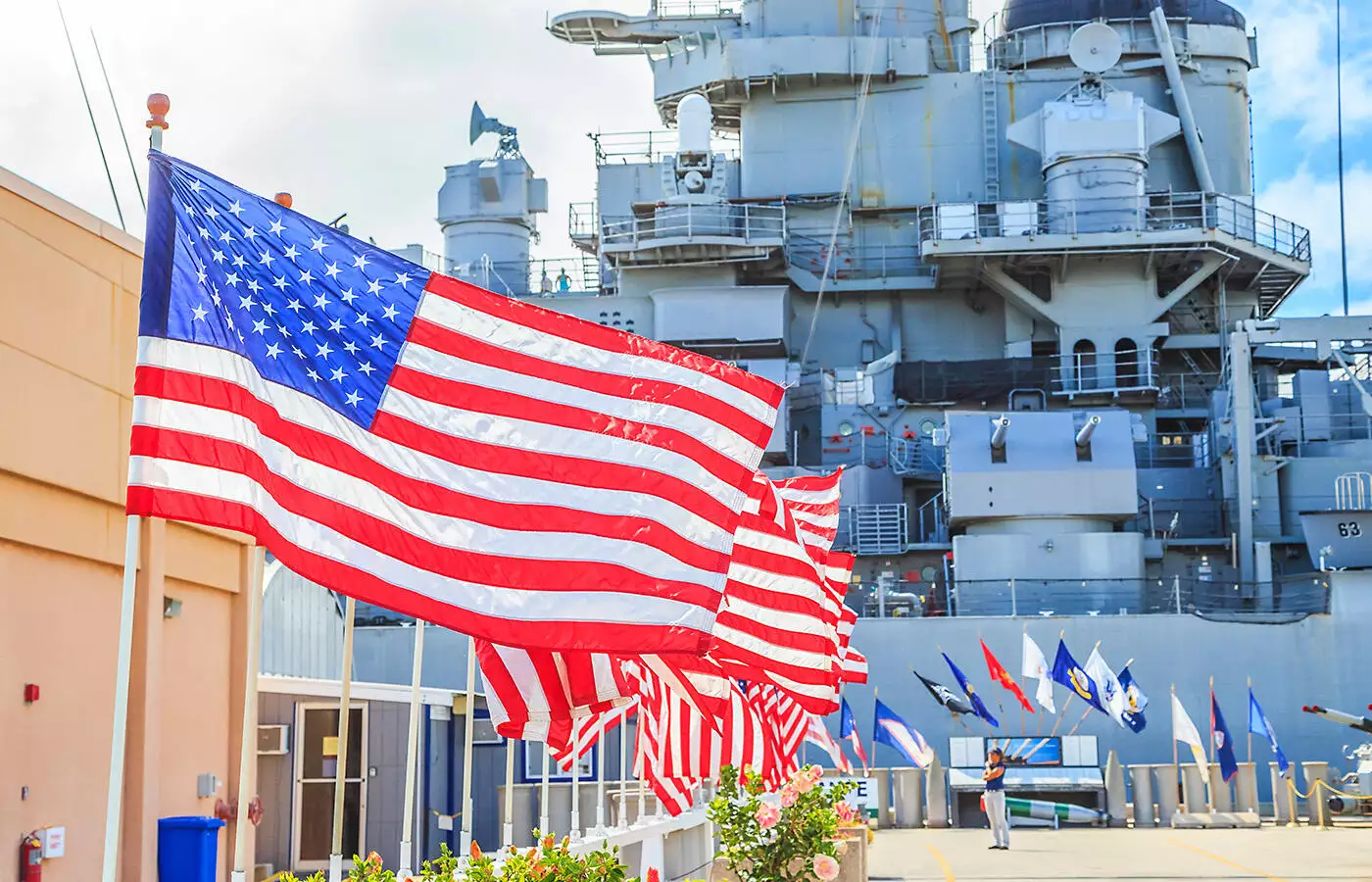
Remember Pearl Harbor Tour from Waikiki
Guided Tour
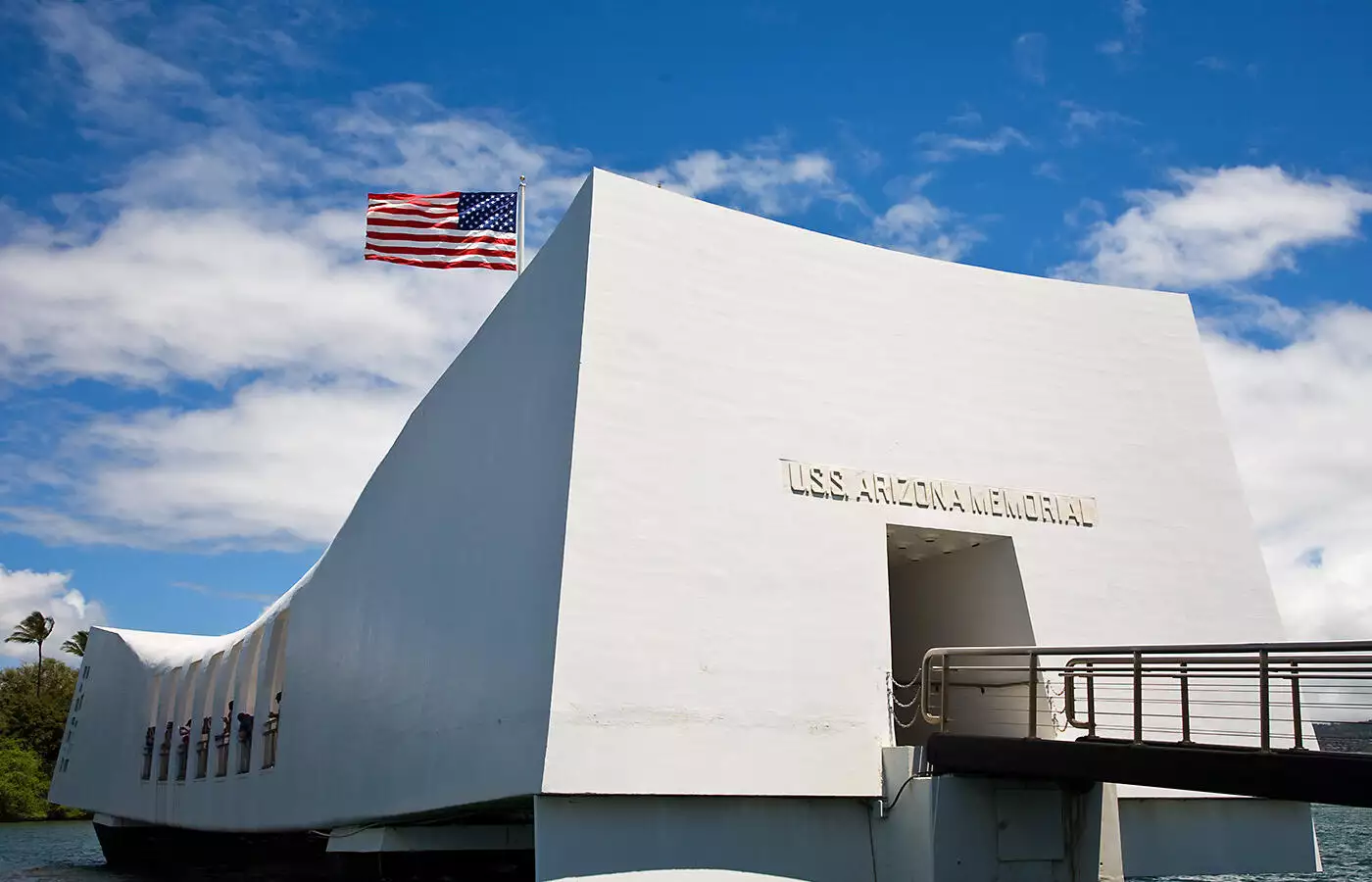
The Complete Pearl Harbor Tour Experience With Lunch

Pearl Harbor & Honolulu City Tour from Waikiki
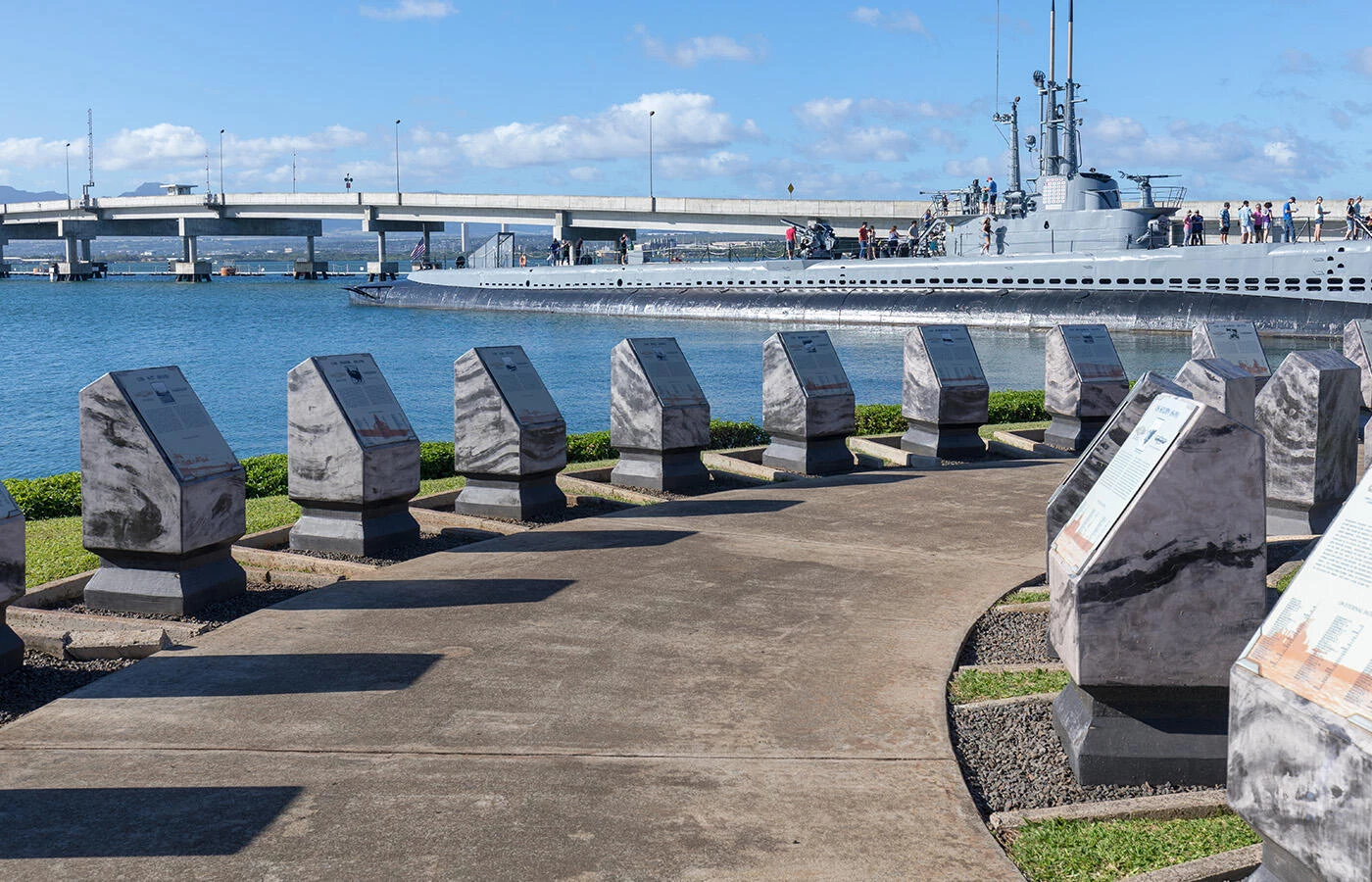
Official Passport to Pearl Harbor
Plan your visit.


IMAGES
COMMENTS
The National Park Service doesn't keep records on how many Japanese tourists come to Pearl Harbor, but visitors can take guided tours, and find Japanese-language headsets and brochures.
Revisiting the Past: How Japan Views Pearl Harbor. March 15, 2017. It's likely that a survey of Japanese people taken during the early 1940s about the attack on Pearl Harbor would show broad agreement that it was a necessity. It wasn't just a declaration of war against the United States and an attempt to cripple the American Navy, it was ...
Doing It Until We Got It Right: A Short History of the Pearl Harbor Investigations On December 7, 1941, Japanese naval aircraft swept in on an unsuspecting US Pacific Fleet and Army in the Hawaiian Islands and destroyed many American ships and aircraft. In a little over two hours, 18 warships—including eight battleships—and over 160 aircraft were knocked out of action. With Japan's ...
Aloha Pearl Harbor Tour. Around 8am on December 7th, 1941, Japanese Zero warplanes attacked Pearl Harbor and the Island of Oahu, Hawaii. The devastating surprise attack killed 2,403 and wounded over 1,000 others, marking the United States entrance into World War II. For the USA, World War II both began and ended at the Pearl Harbor Naval base ...
That was the "long fuse" of the Great Pacific War (1941-45), the long-term background to Japan's attack on Pearl Harbor, December 7, 1941. Sitting in the Japanese crosshairs that fateful Sunday morning was not only the US Pacific Fleet, but the Hawaiian Islands. An independent kingdom with a long and proud history of its own, then ...
Pearl Harbor is the most visited site on the island of Oahu. Plan ahead and explore memorials, exhibits, and other historic venues.
Here, in this quiet and understated memorial, the Japanese come to see and confront - some for the first time - the extent of the destruction of Pearl Harbor on Dec. 7, 1941. ''Frightening,'' said ...
The Pearl Harbor Visitor Center has two world-class museums as well as interpretive exhibits running along the harbor shoreline. This walkway encompasses multiple signs, plaques, and tributes such as the Remembrance Circle, a monument listing the names of all Medal of Honor recipients in WWII. The museums and outdoor exhibits are free and can ...
Discover Pearl Harbor with official tours or tickets. Explore the Memorials, Museums, and more with ease. Book now for an unforgettable experience.
Where the Japanese Went Wrong at Pearl Harbor. April 21, 2017. Looking at the events of Pearl Harbor, it may seem like the United States suffered the greatest blow it could have that day, but in retrospect, the outcome could have been far worse. The United States was able to recover from the blow quickly—something Japan had not counted on ...
The attack on Pearl Harbor[ nb 3] was a surprise military strike by the Imperial Japanese Navy Air Service on the American naval base at Pearl Harbor in Honolulu, Hawaii, in the United States, just before 8:00 a.m. (local time) on Sunday, December 7, 1941. At the time, the United States was a neutral country in World War II. The attack on Hawaii and other U.S. territories led the United States ...
Before you visit Pearl Harbor, the USS Arizona Memorial and the other Pearl Harbor sites, it is helpful to learn a bit about the history of Pearl Harbor and the USS Arizona as well as of the other historic sites that you can visit in the area.
About Pearl Harbor From the surprise attack on Pearl Harbor that started it all, to the surrender of the Japanese on the deck of the mighty Battleship Missouri, these four historic sites together tell the story of the War in the Pacific, commemorating the accomplishments of a previous generation. Located on the island of Oahu, "The Gathering Place," halfway between Japan and the mainland ...
Japanese Prime Minister Shinzo Abe's recent trip to Pearl Harbor made waves. While U.S. representatives hailed it as an important step toward reconciliation, China said Japan cannot turn the ...
Takeo Yoshikawa was instrumental in Japan's successful intelligence-gathering operations leading up to the Pearl Harbor attack of 1941.
Explore the top 20 Pearl Harbor tours, from historical day-long adventures to the USS Arizona Memorial. Perfect for travelers seeking a meaningful visit.
Experience key moments of this global conflict, from the December 7, 1941 attack on Pearl Harbor, Oahu that catapulted the U.S. into the war, to the September 2, 1945 Japanese surrender that ended WWII. Book your Pearl Harbor tour from Waikiki with us and make your trip a memorable one. We begin at the USS Arizona Memorial where you'll learn ...
Book your Pearl Harbor tours now! At Pearl Harbor, you can visit the site where the US involvement in WWII began, and where it ended. Visit the Battleship Missouri, where the Japanese surrendered and ended the war. Tours include round-trip transportation and can be booked every day. What Island is Pearl Harbor On?
At age 87, Shigeko Sams is old enough to remember Pearl Harbor. But her memories are different from most Americans who were alive on Dec. 7, 1941. She was 5 years old, a Japanese girl growing up ...
Secure your Pearl Harbor tickets and pay tribute to heroes of the past. Visit the Memorials, Museums, and more with tours or tickets. Book now!
Why do so many Japanese people visit Pearl Harbor? I just got back from a vacation to Hawaii. One of our stops was Pearl Harbor. It was really interesting, but there were a lot of Asians there. There were tours offered in Japanese, and huge groups taking them. I wouldn't think I was exaggerating to say that there were more people taking the Japanese tour groups than there were taking the ...
Visit Pearl Harbor and learn about WWII history with a complete tour package that includes hot lunch, transportation, and admission. findmoreinfo here.
On December 7, 1941, Japan launched a devastating attack on Pearl Harbor, killing thousands. View the day through these rare photos.
Find out everything you need to know about Pearl Harbor in a complete list of frequently asked questions.